The beautiful travertine hot spring pools of Pamukkale, and the ancient ruins of Hierapolis, Turkey
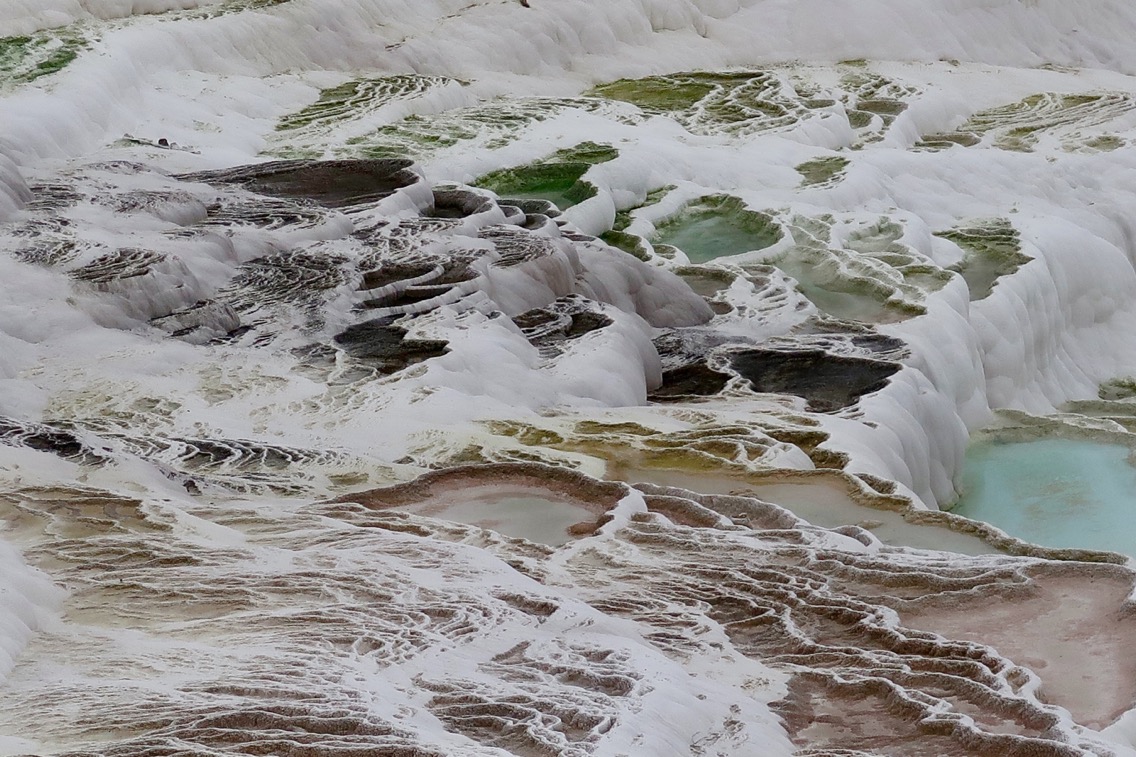
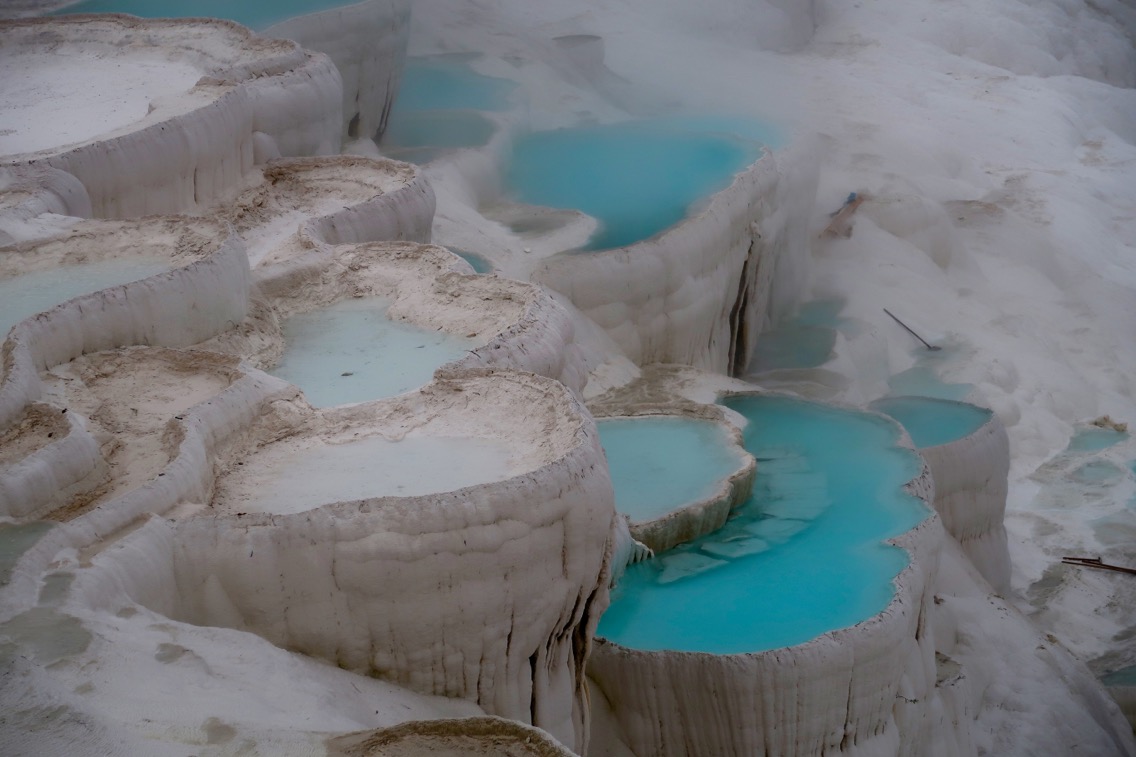
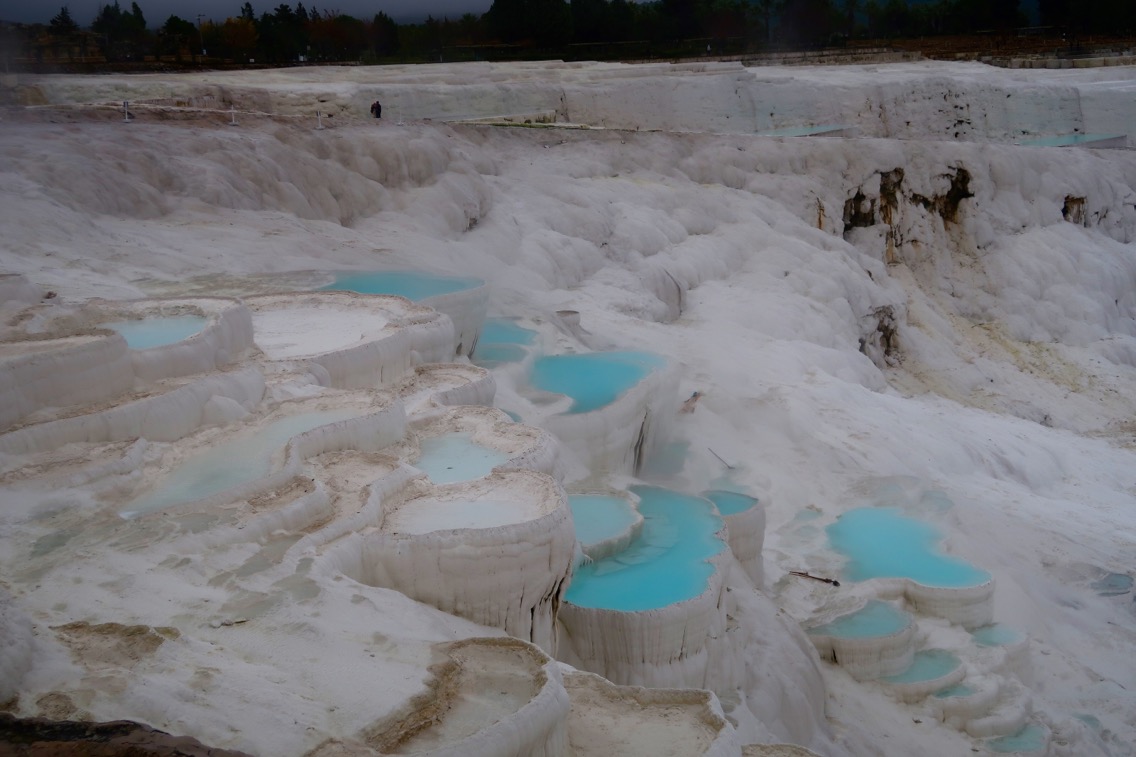

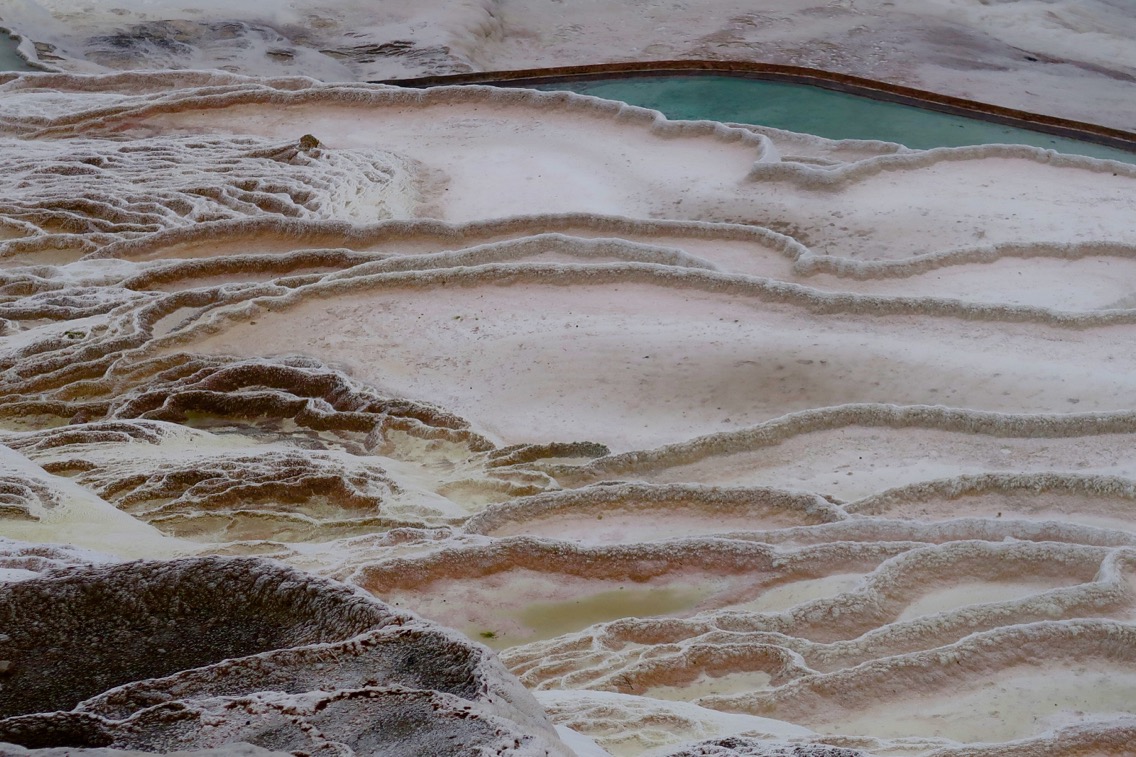
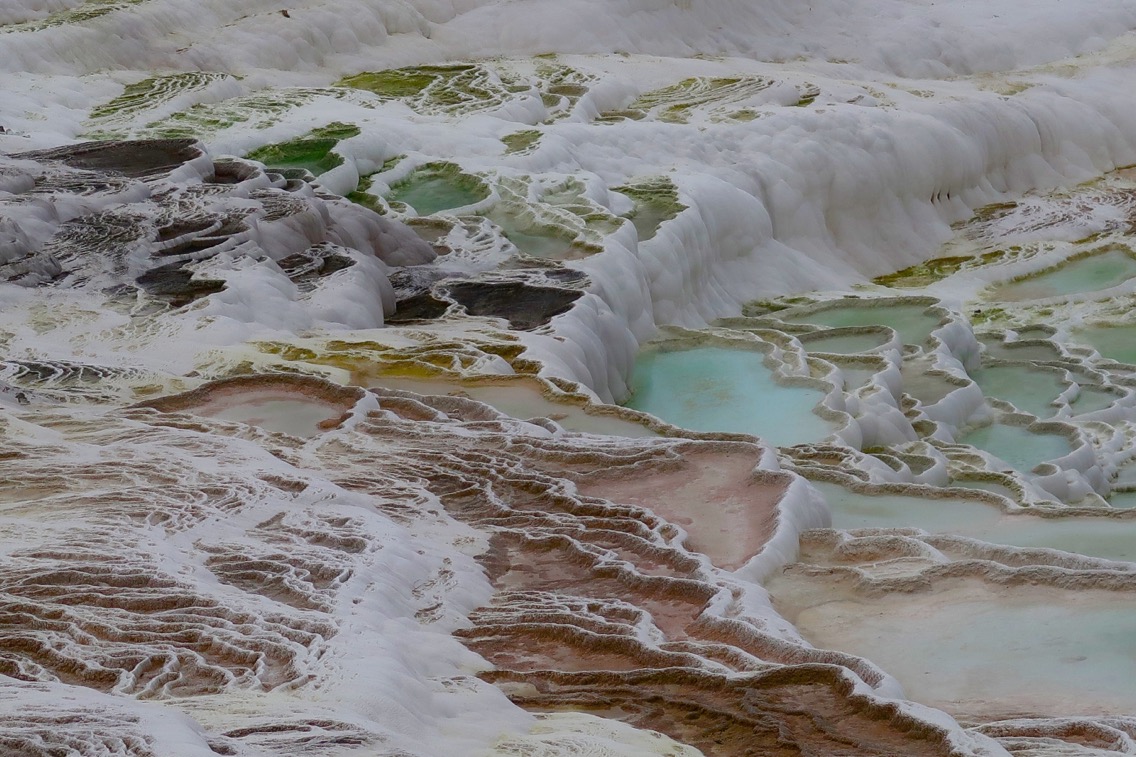
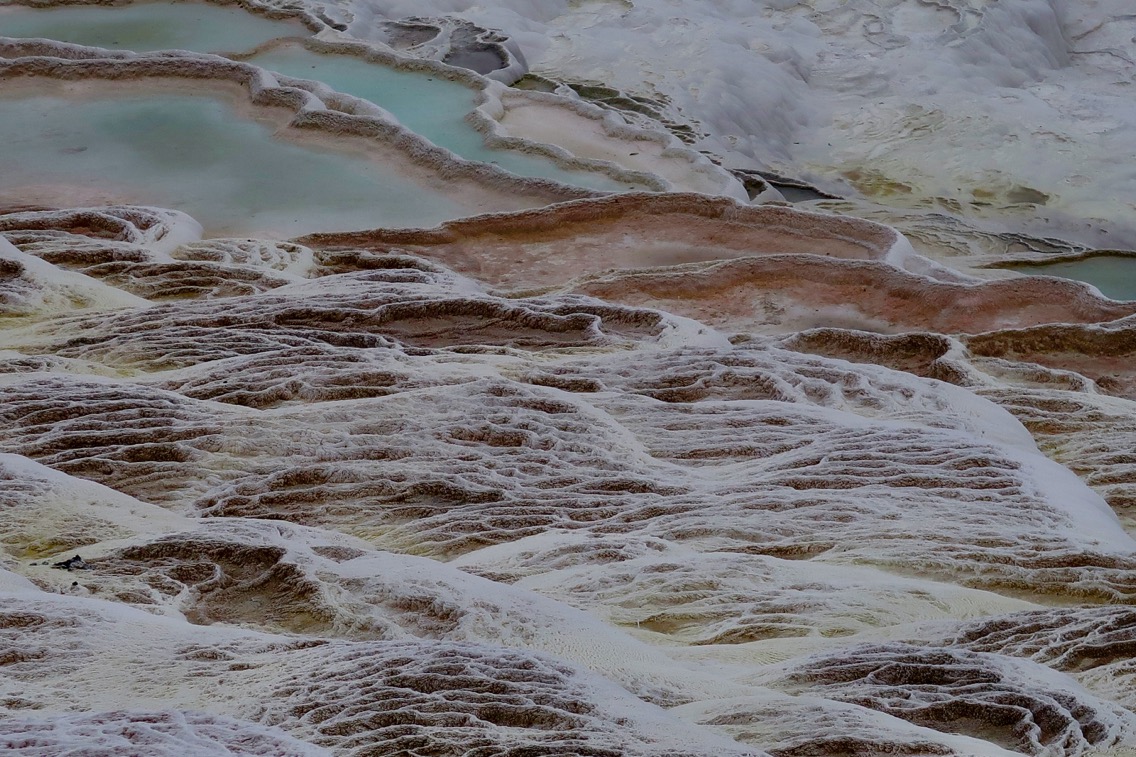
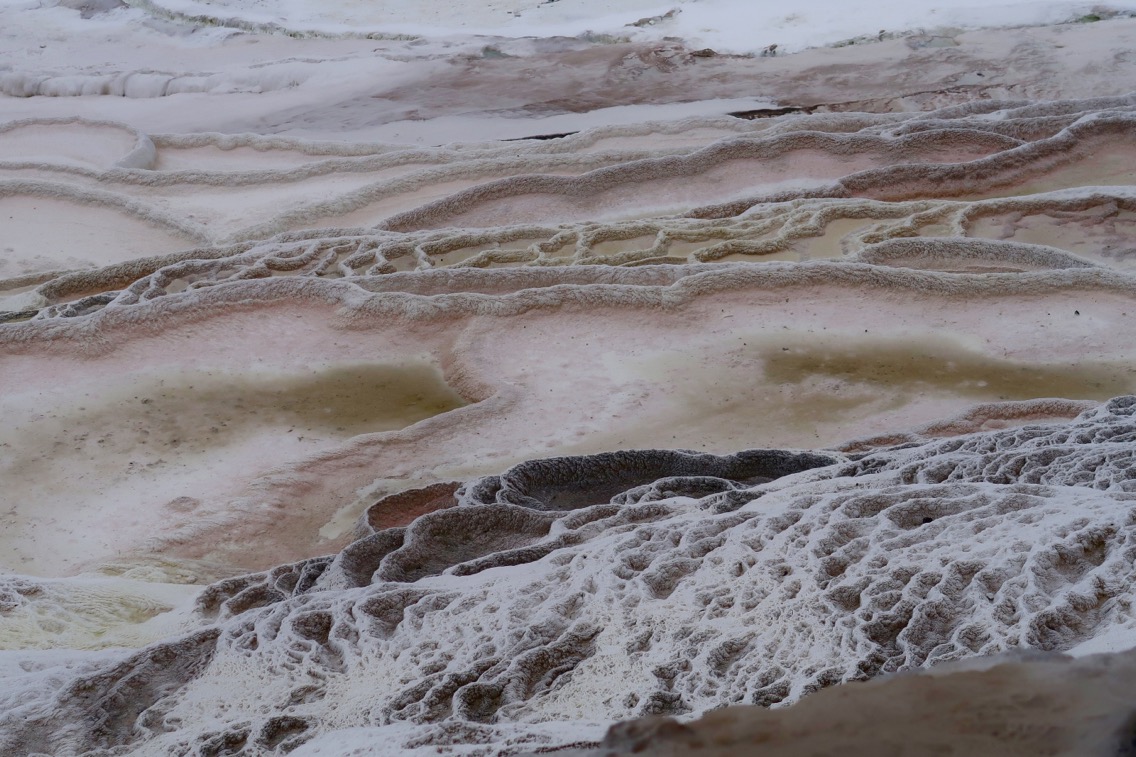
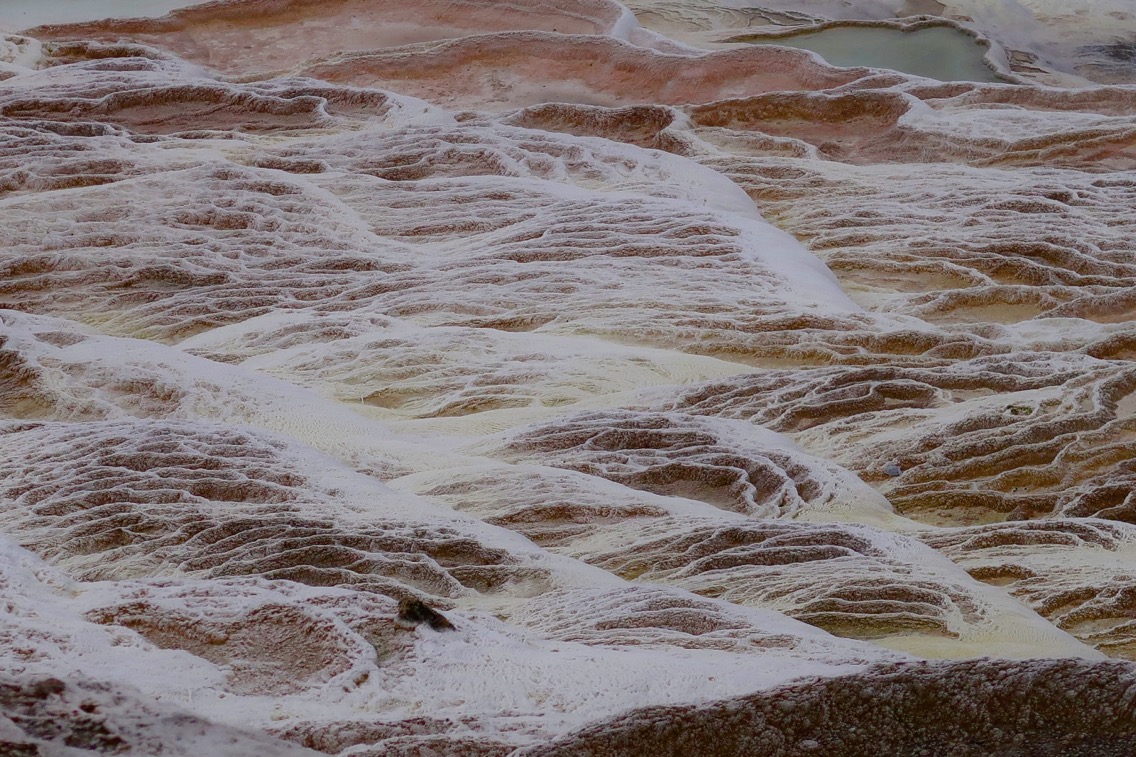
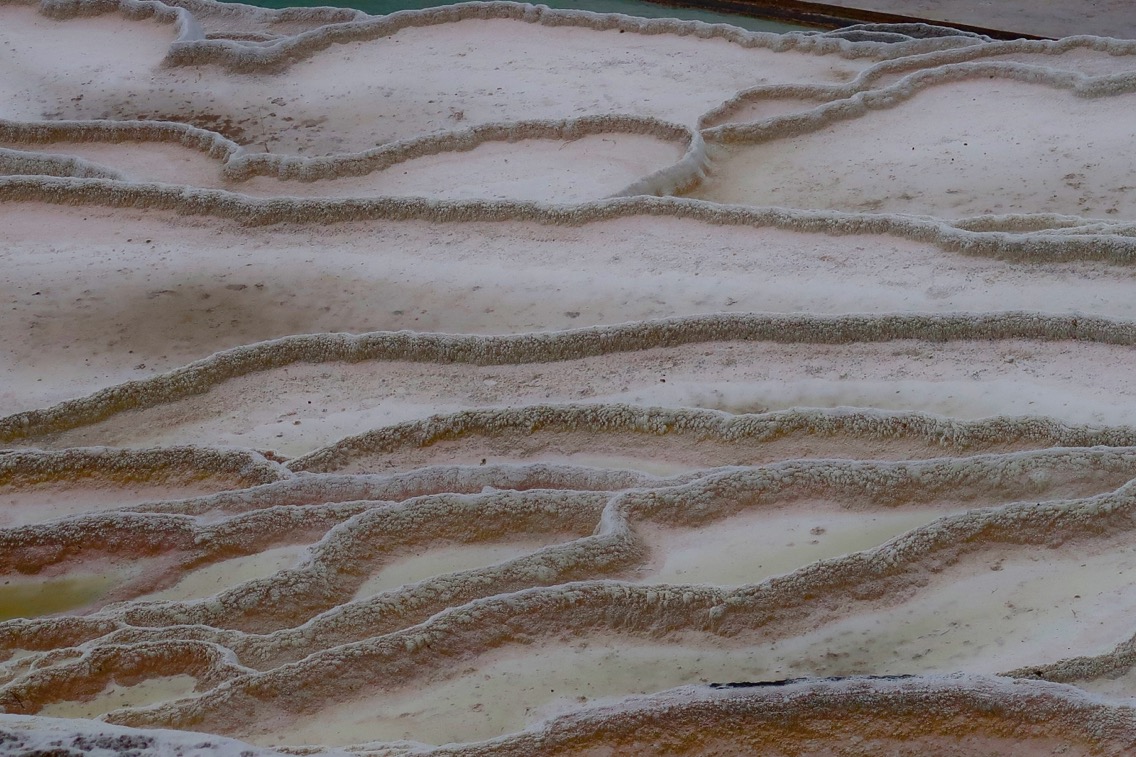
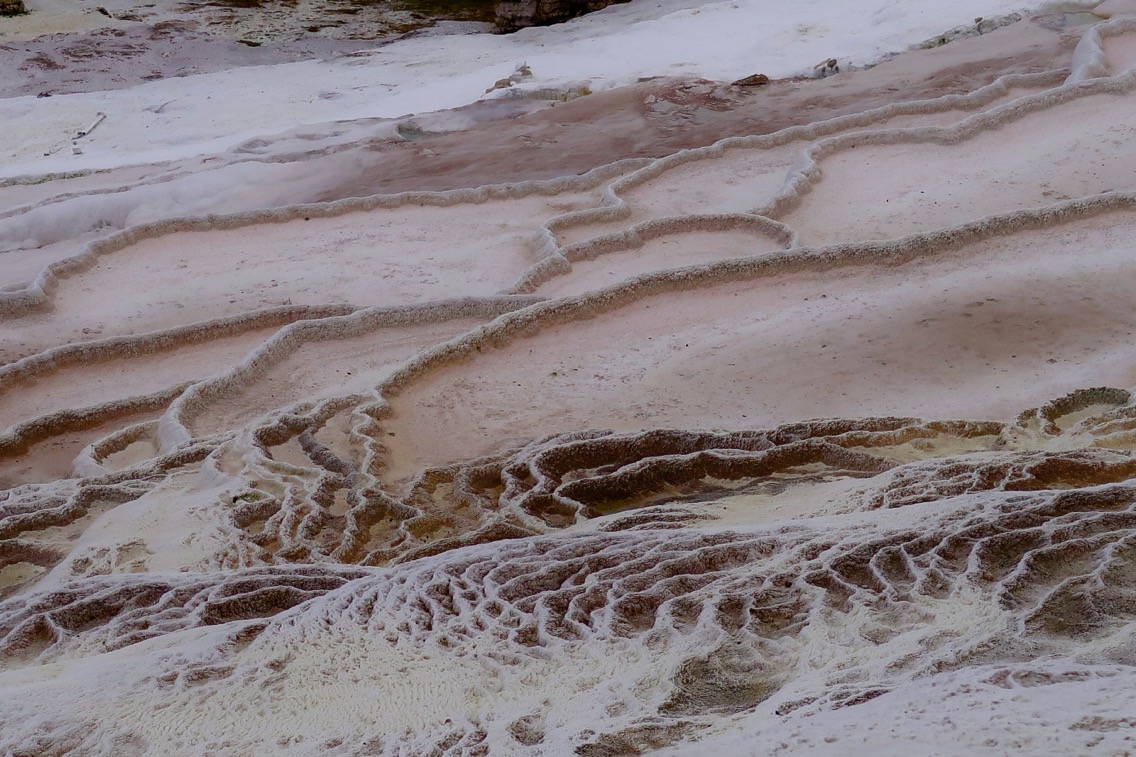
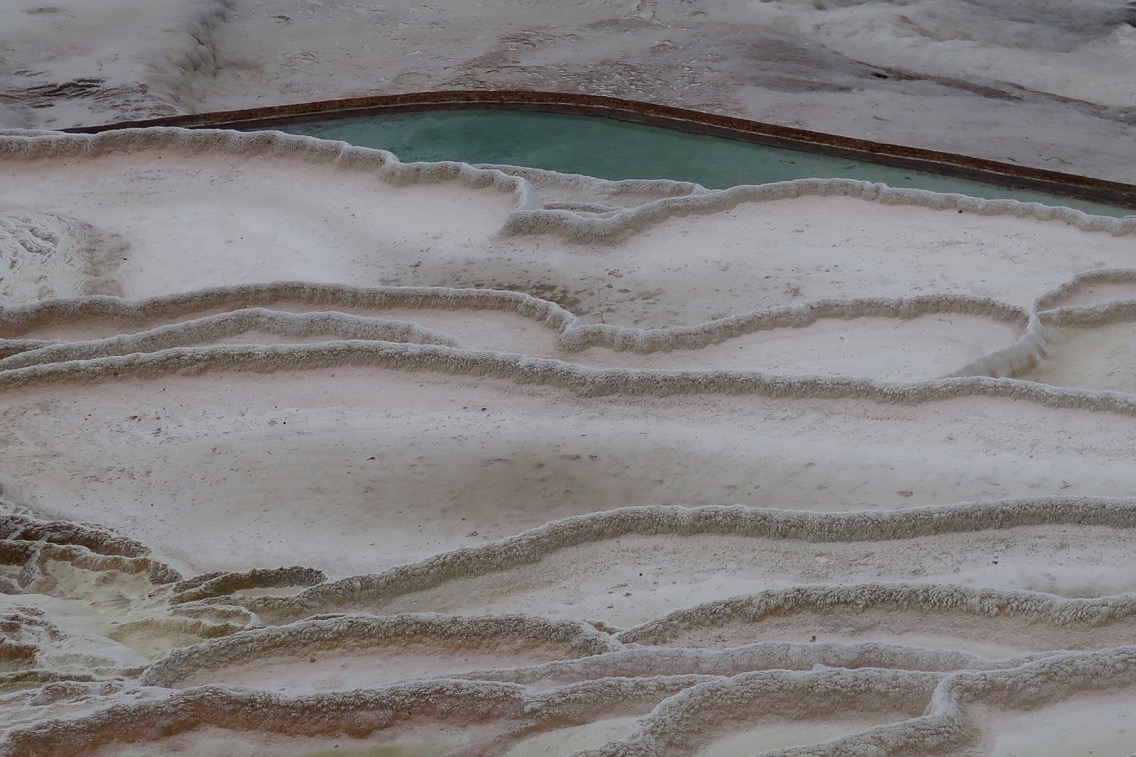
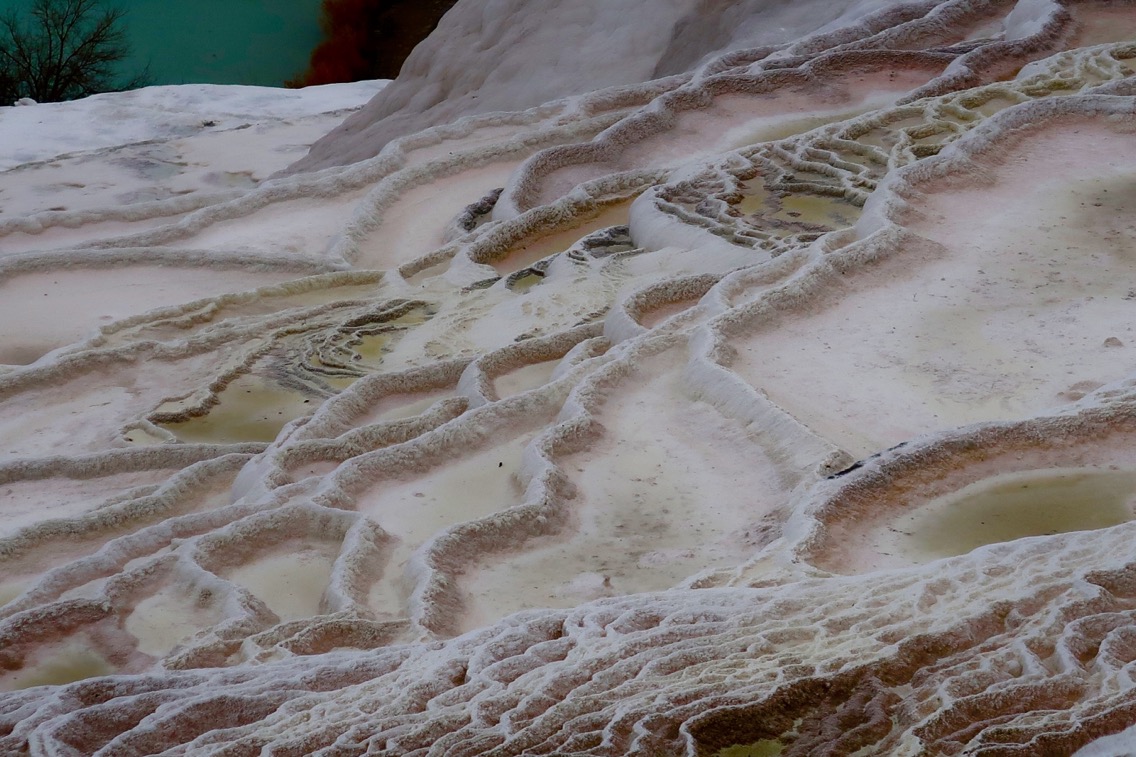

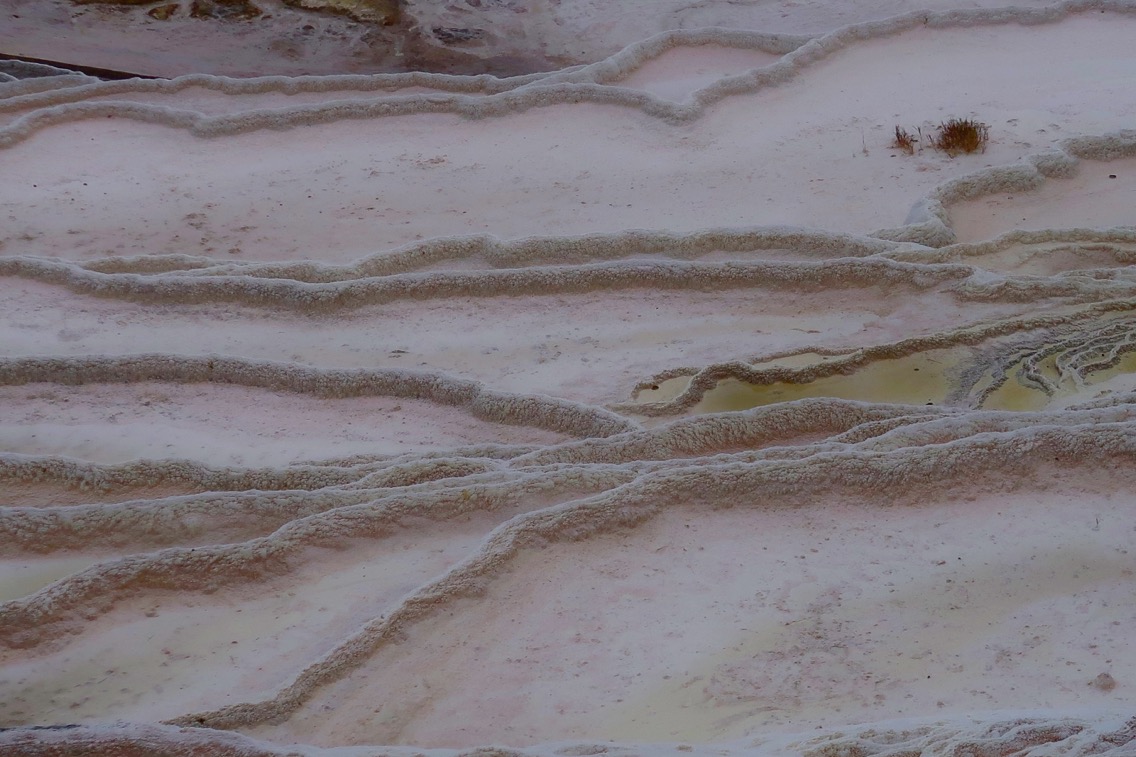
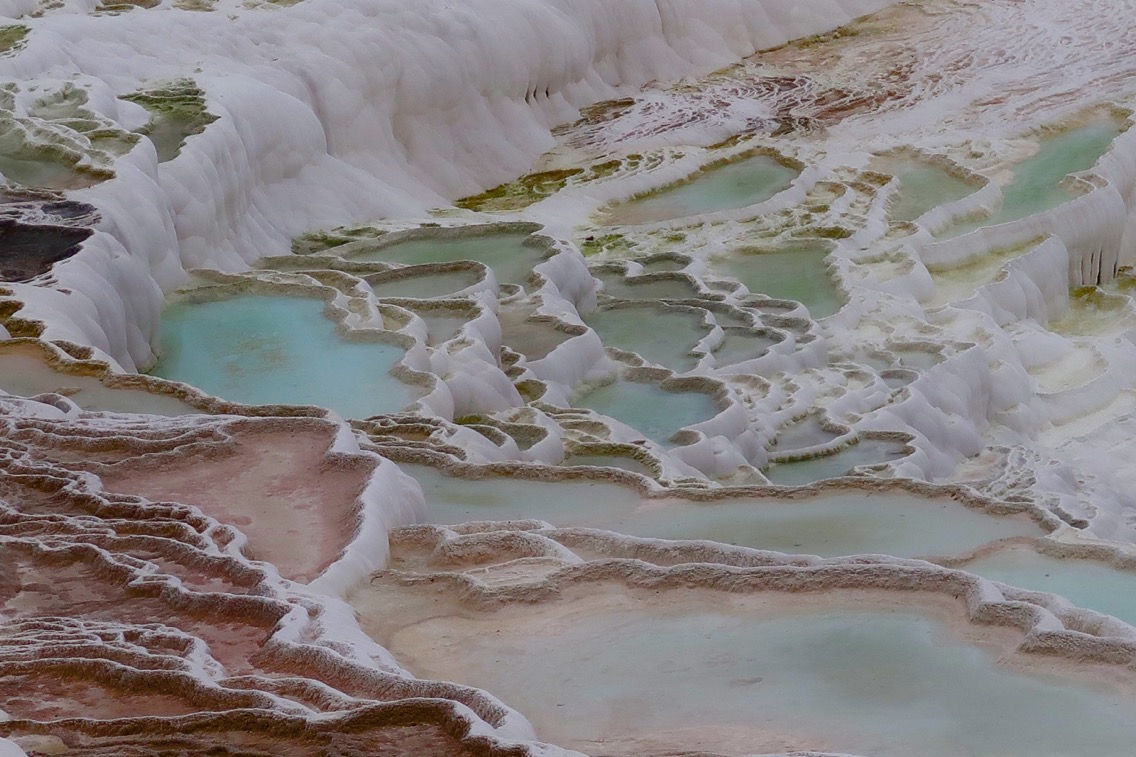
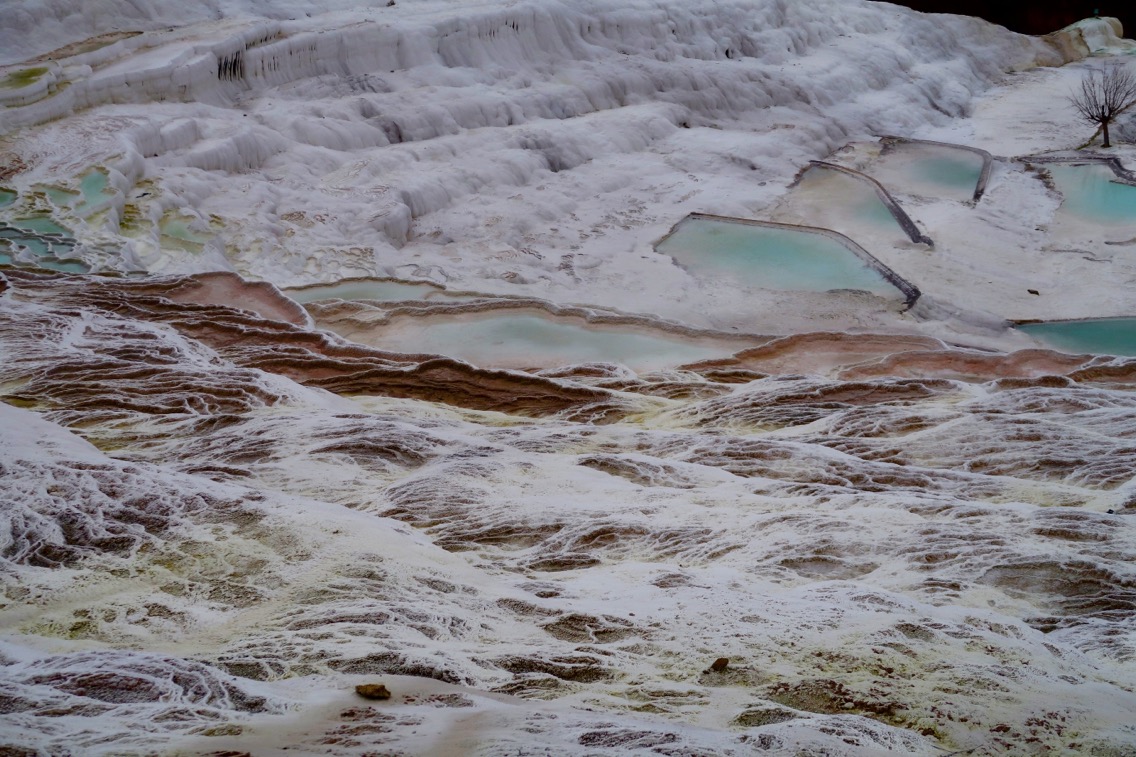
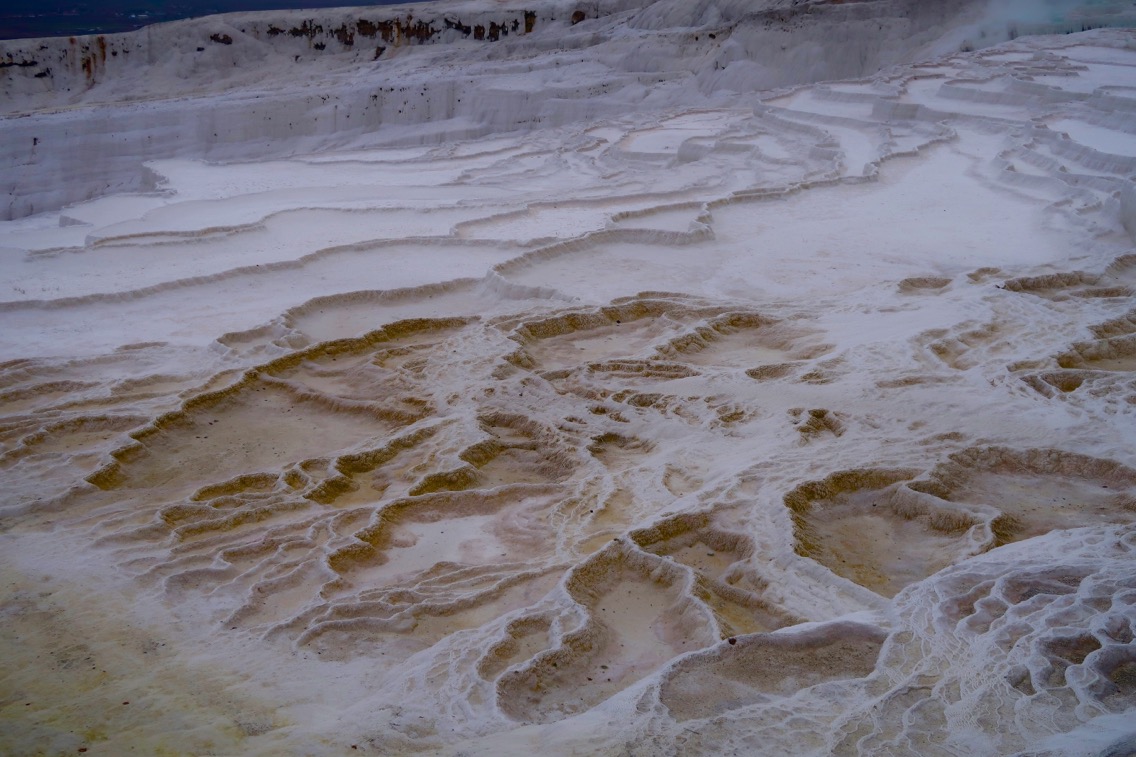
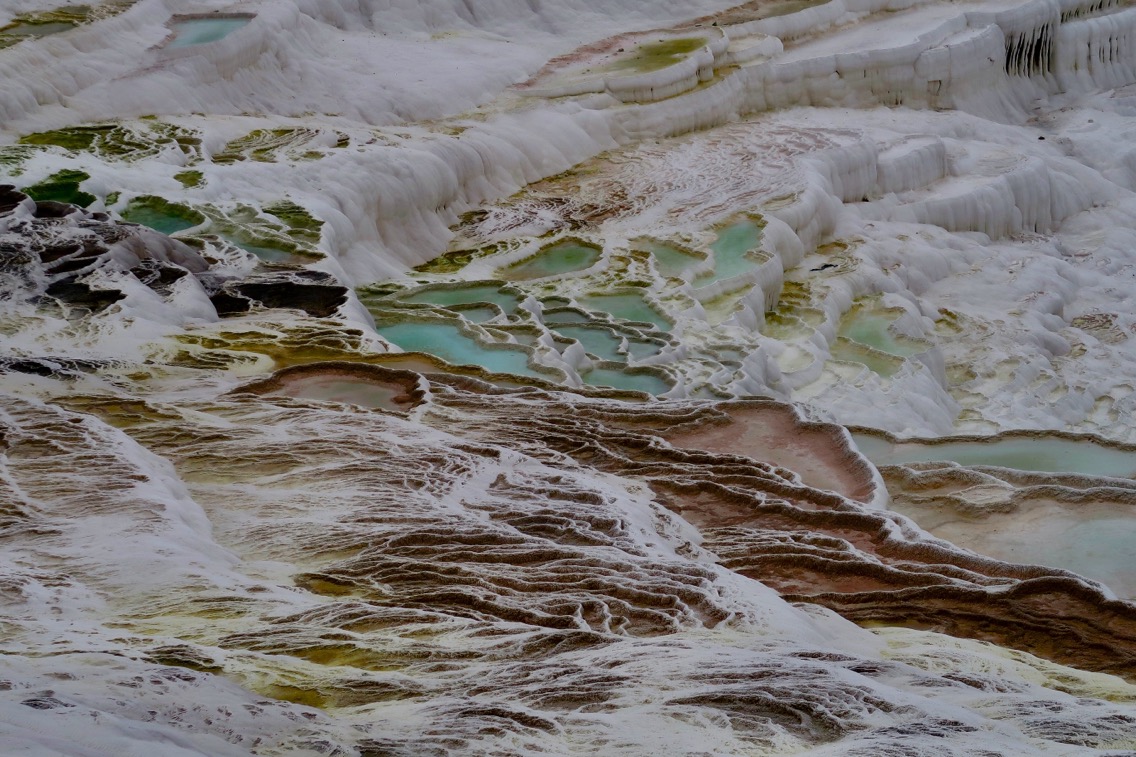
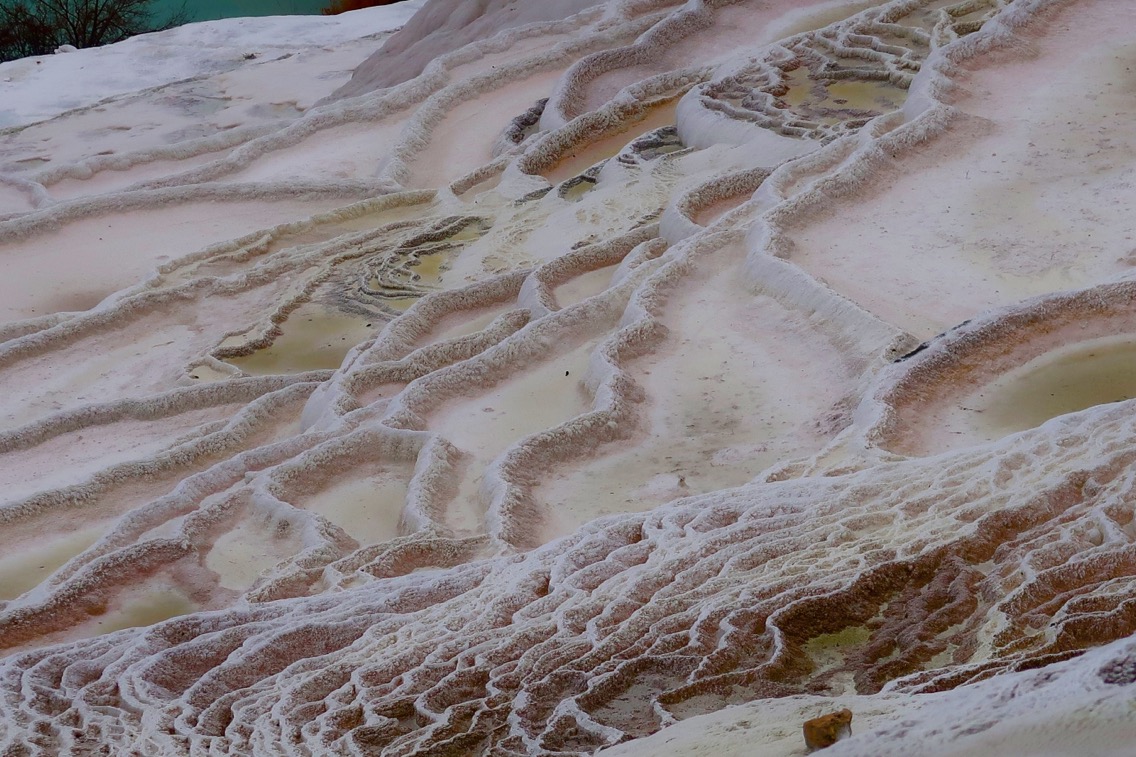
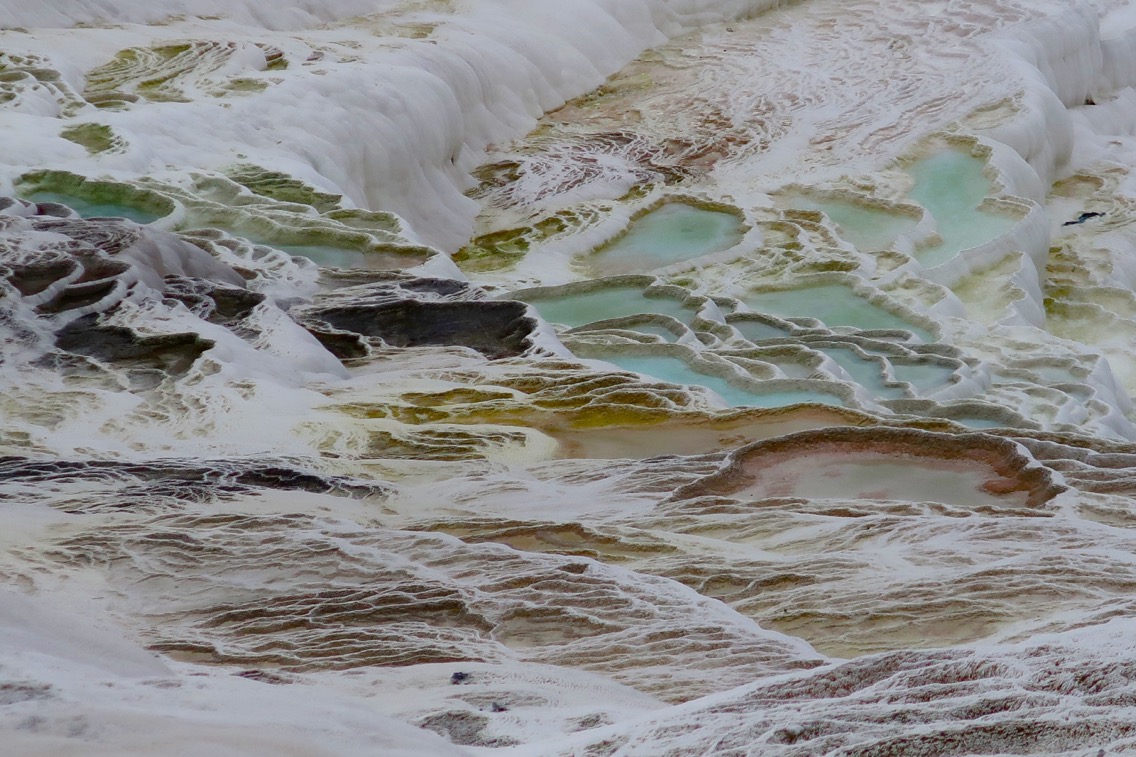
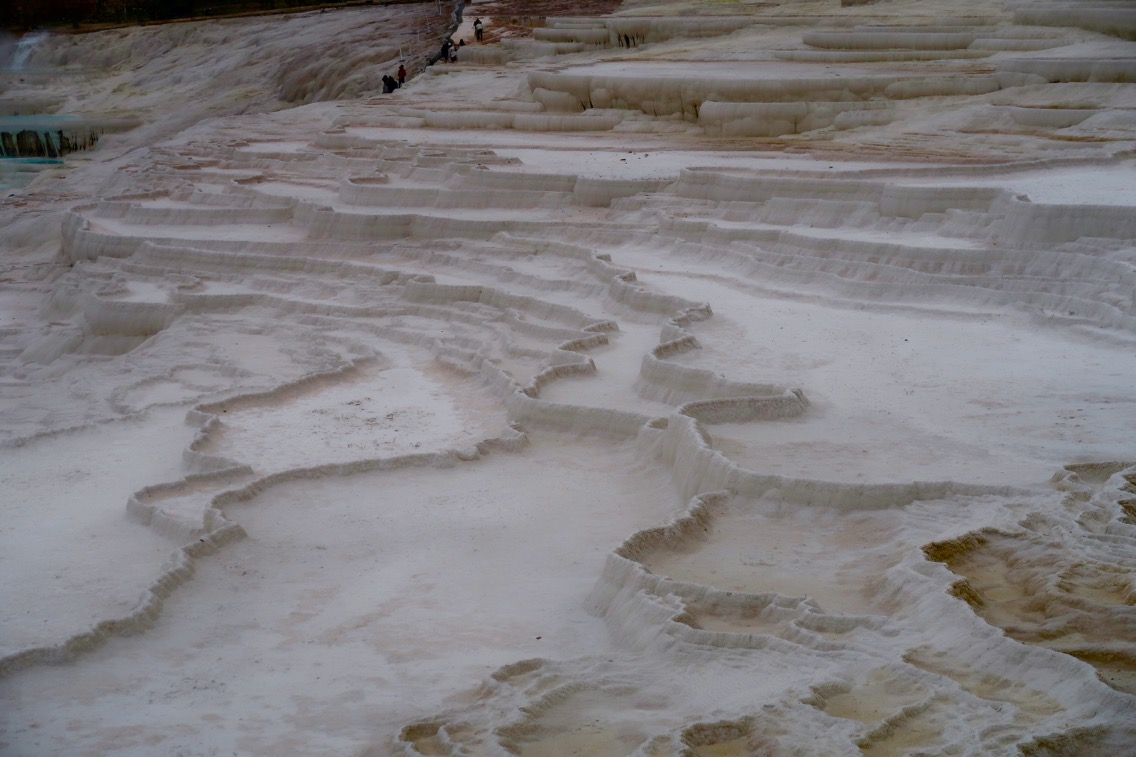
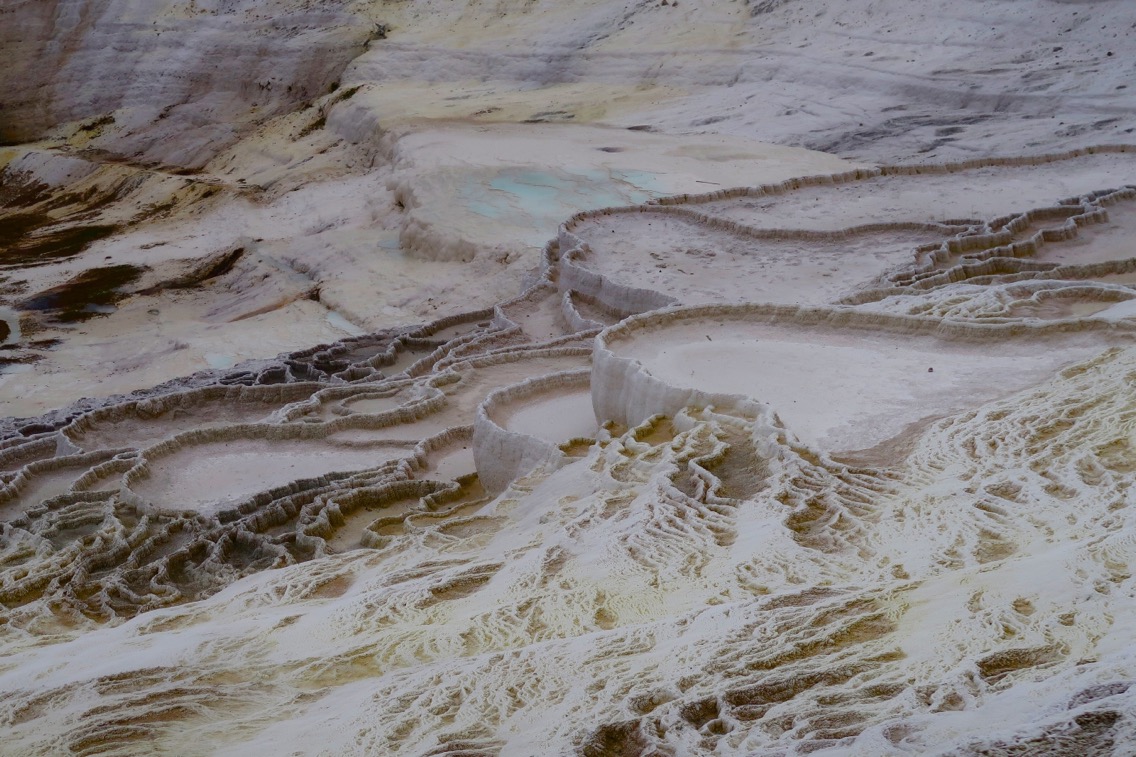
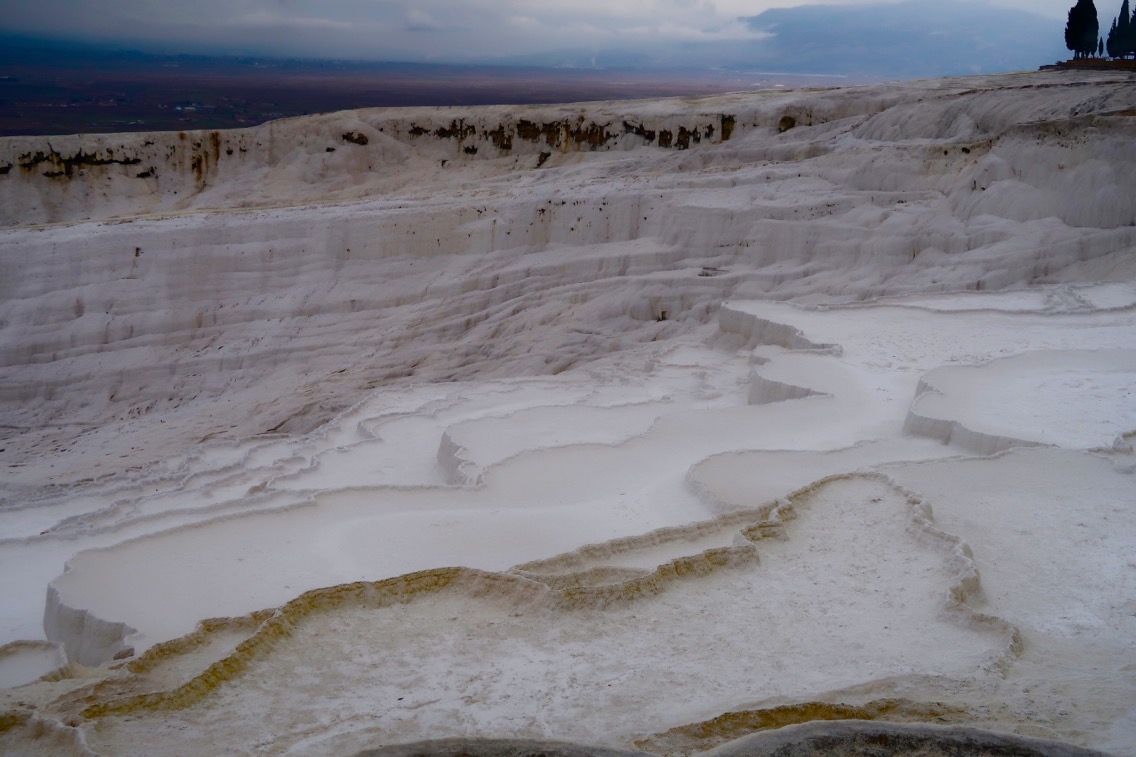
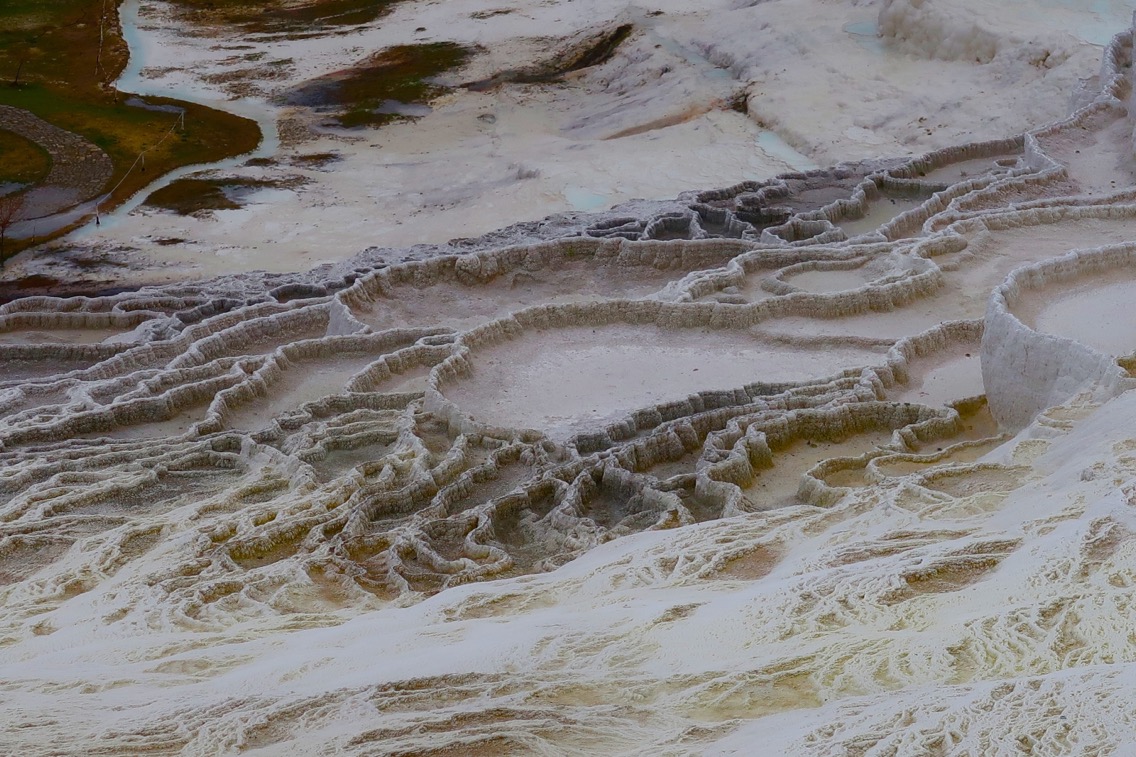

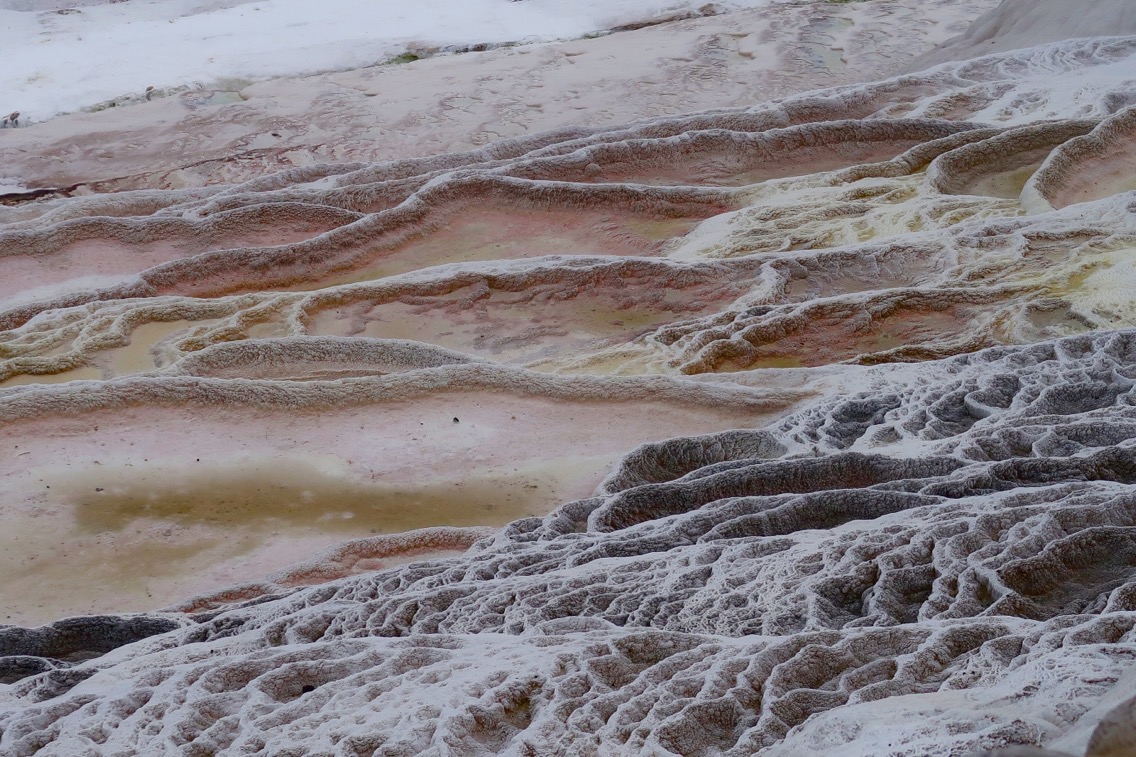
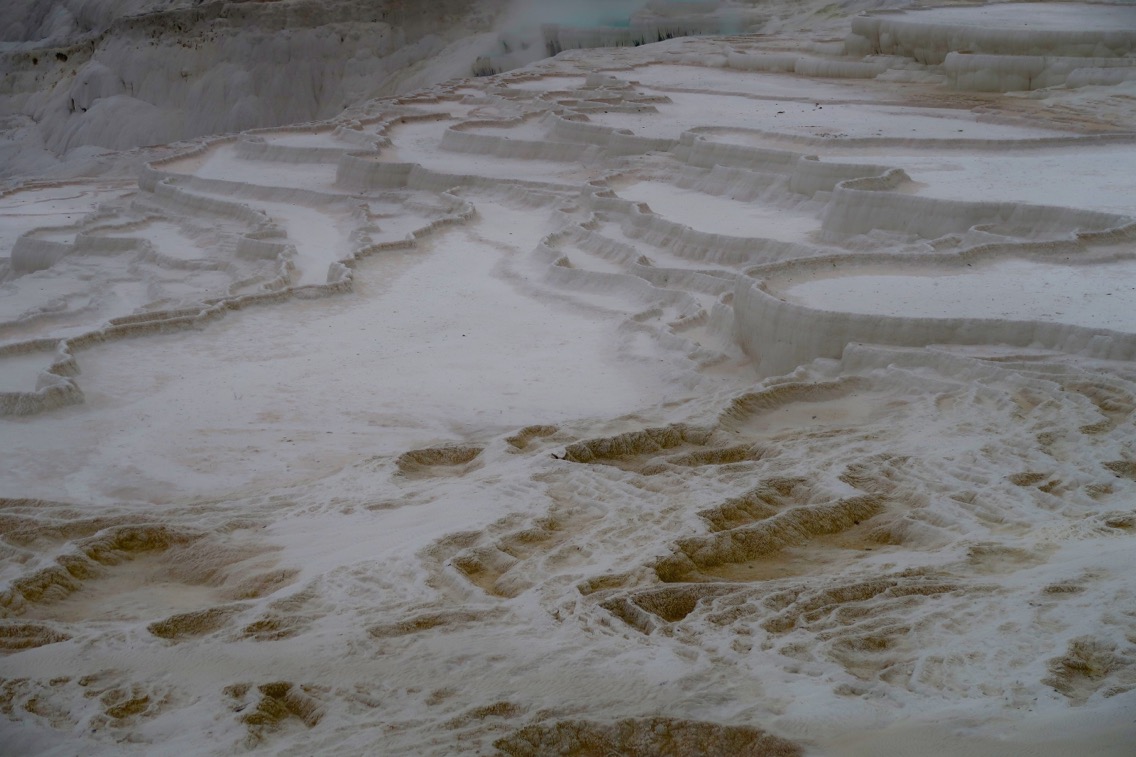


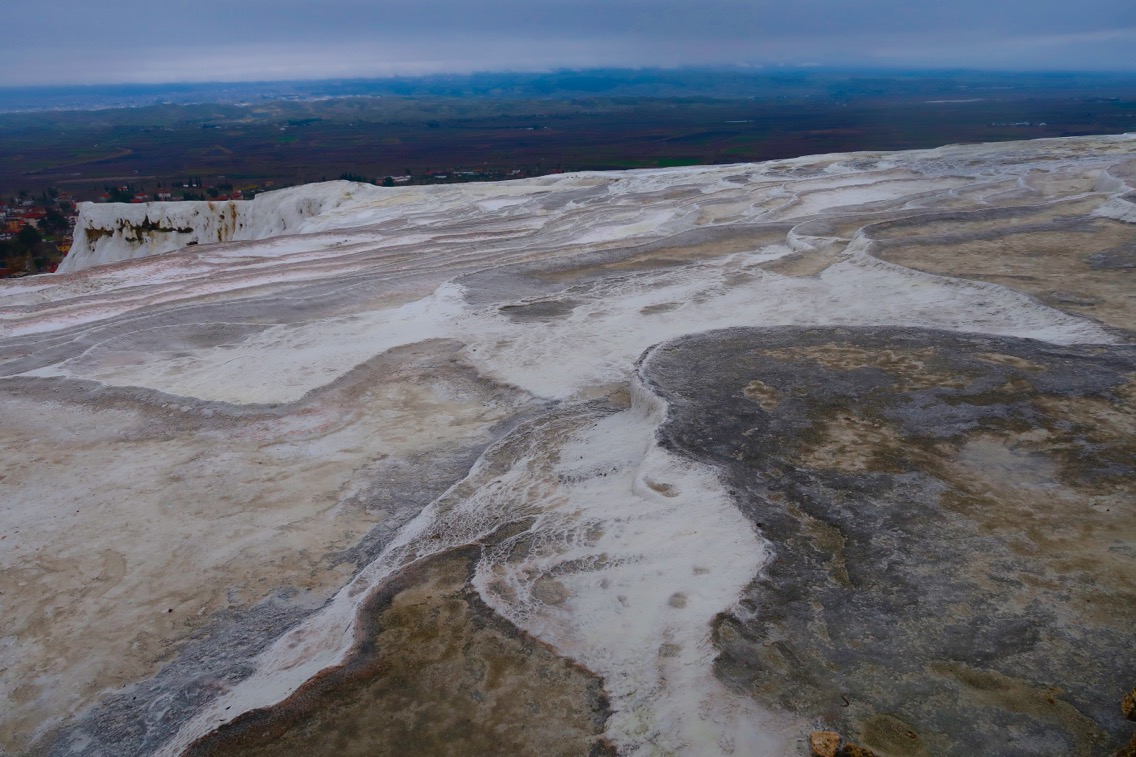

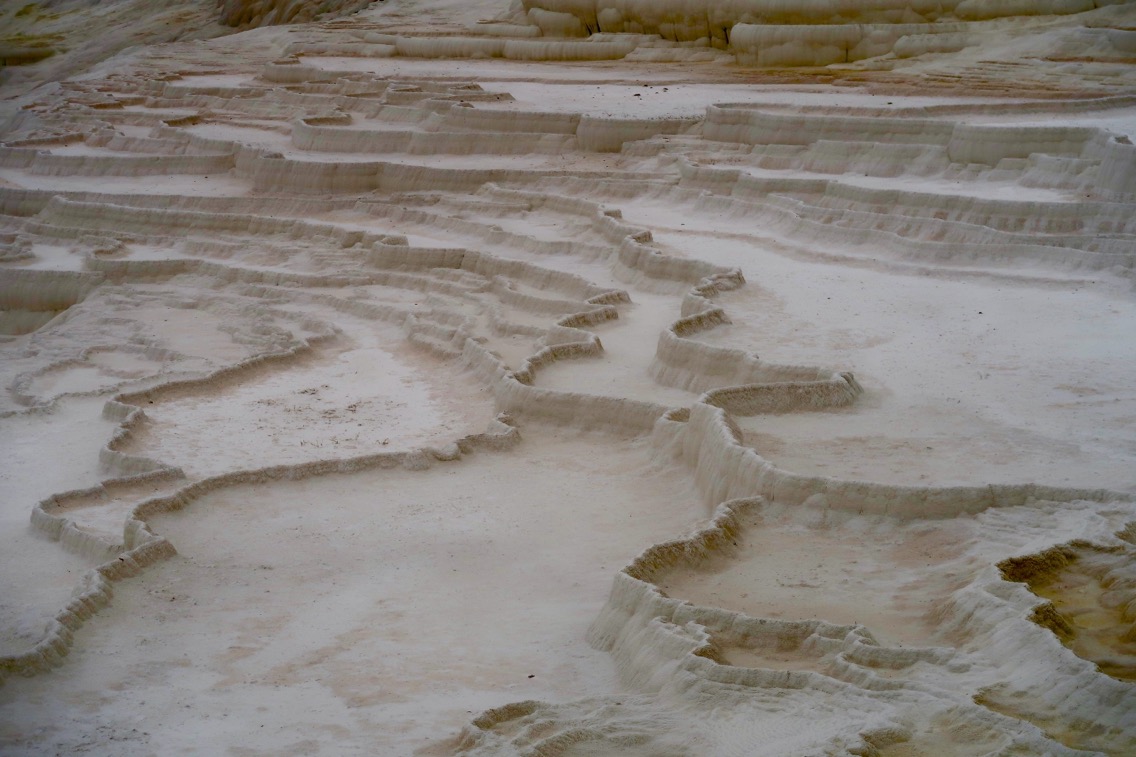
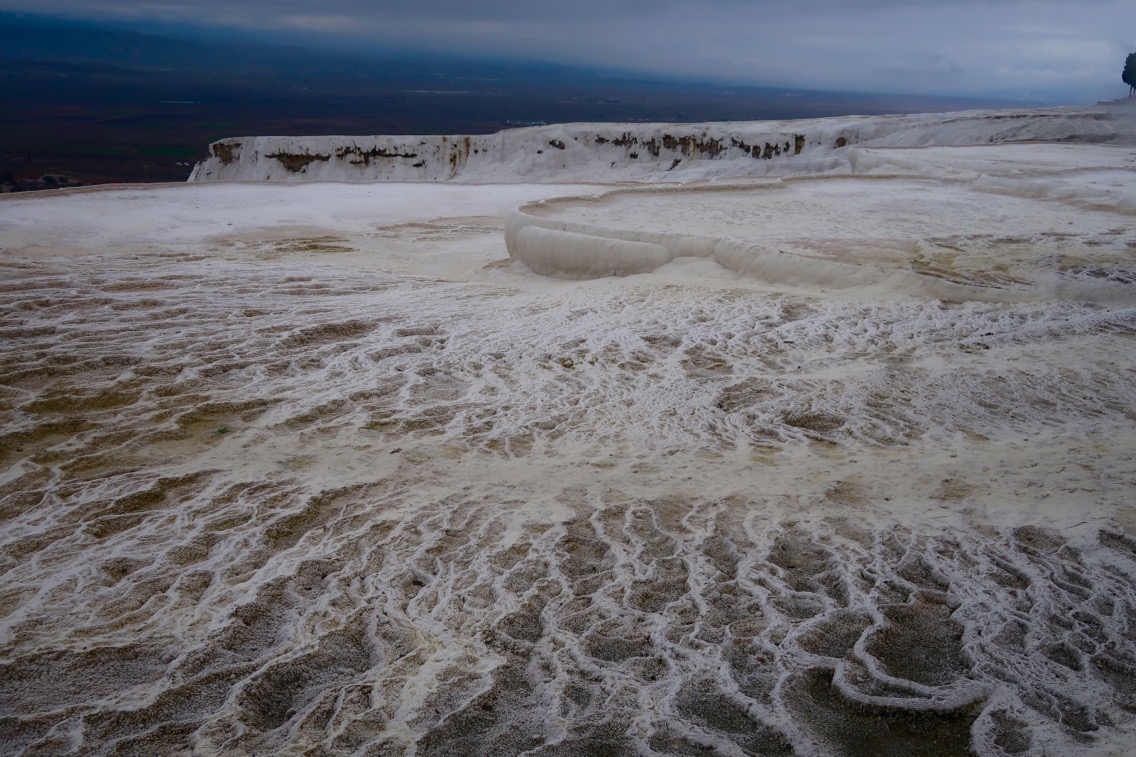
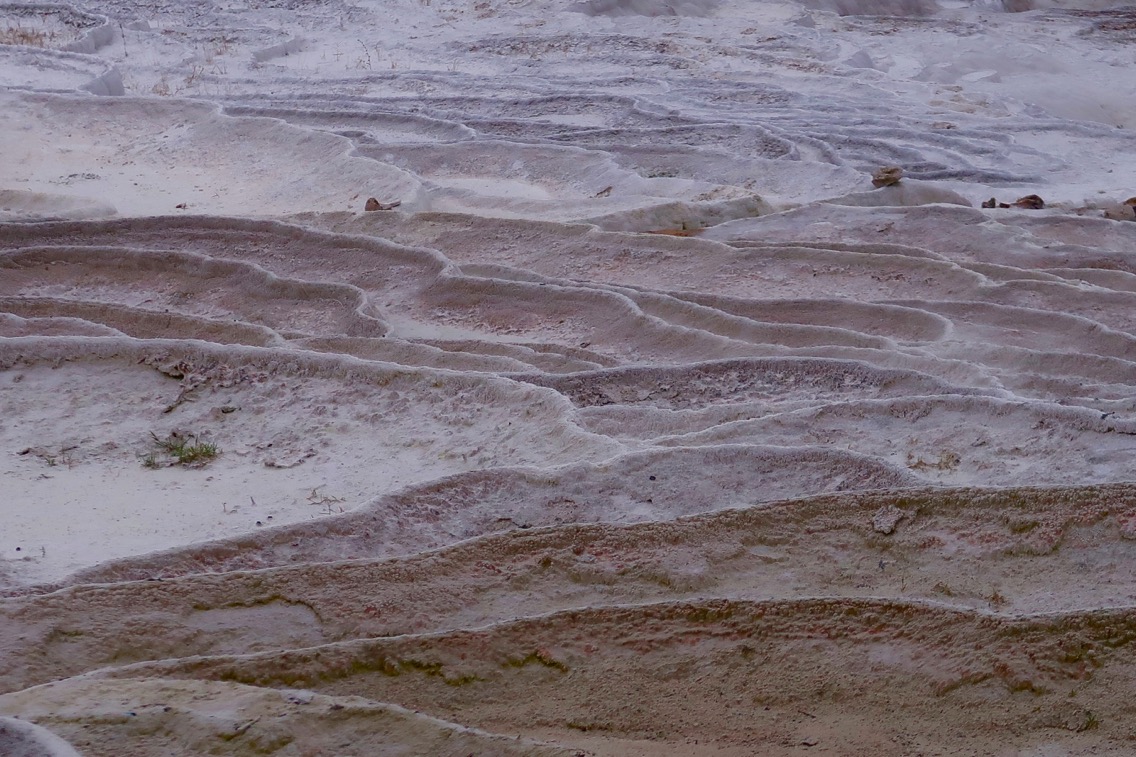
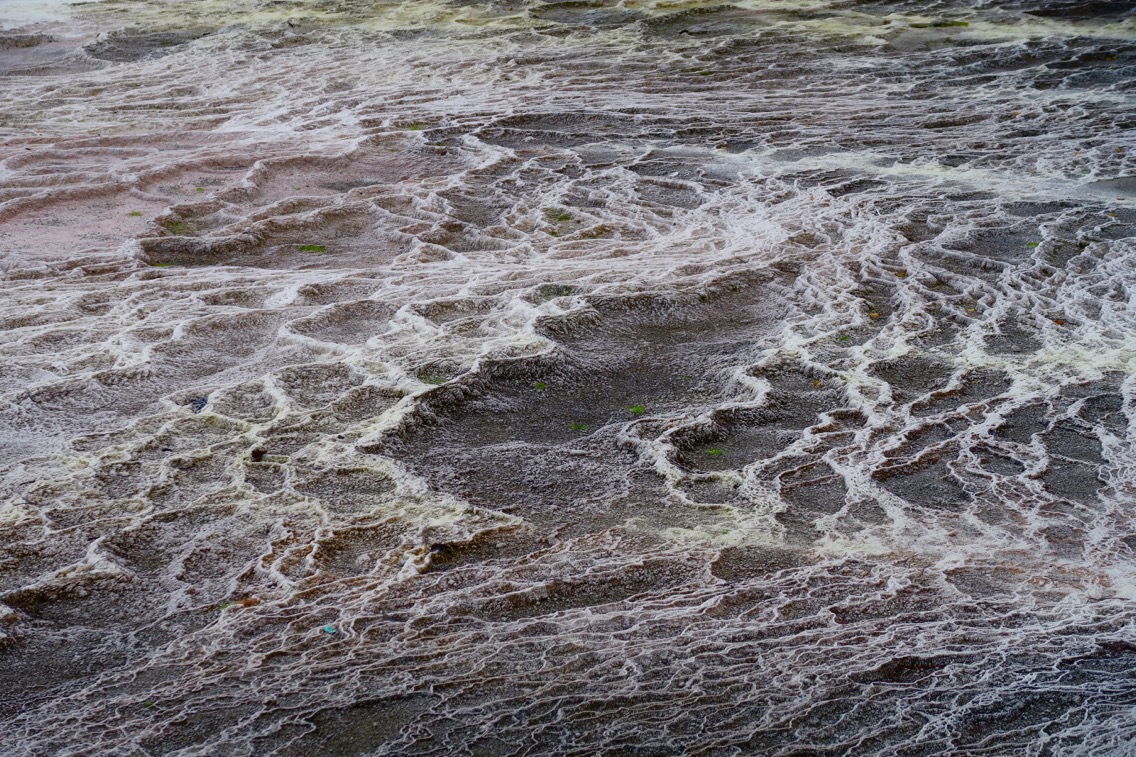
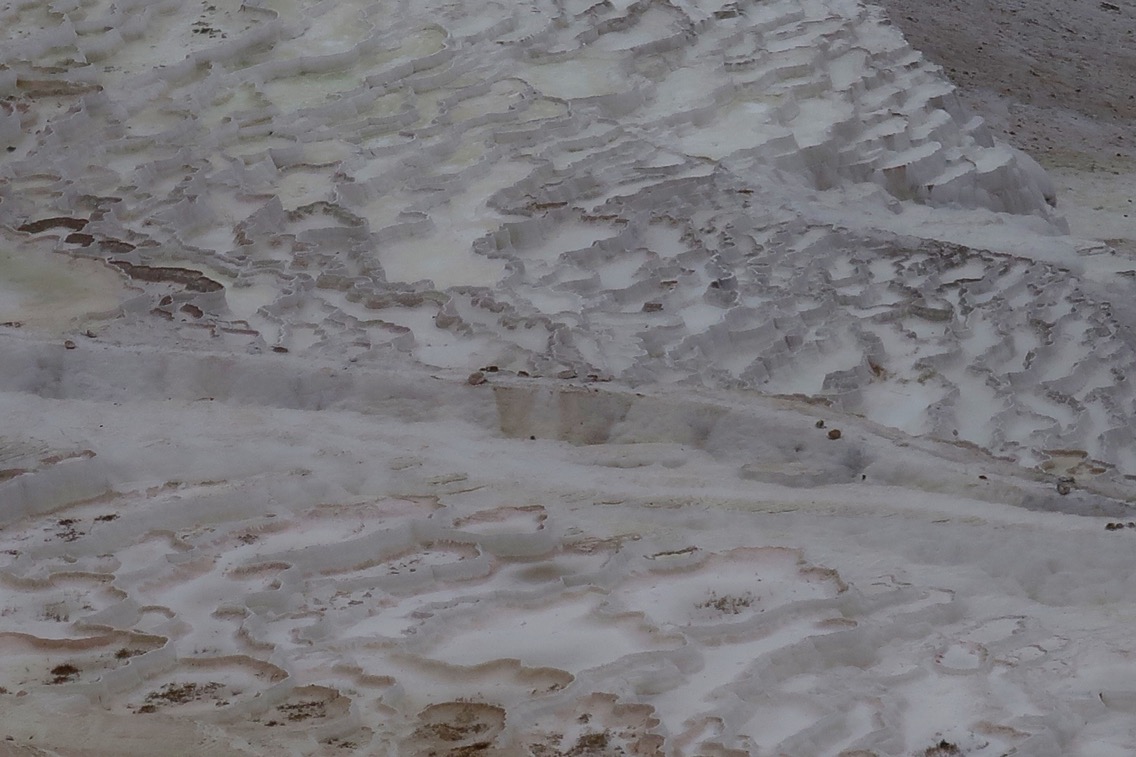
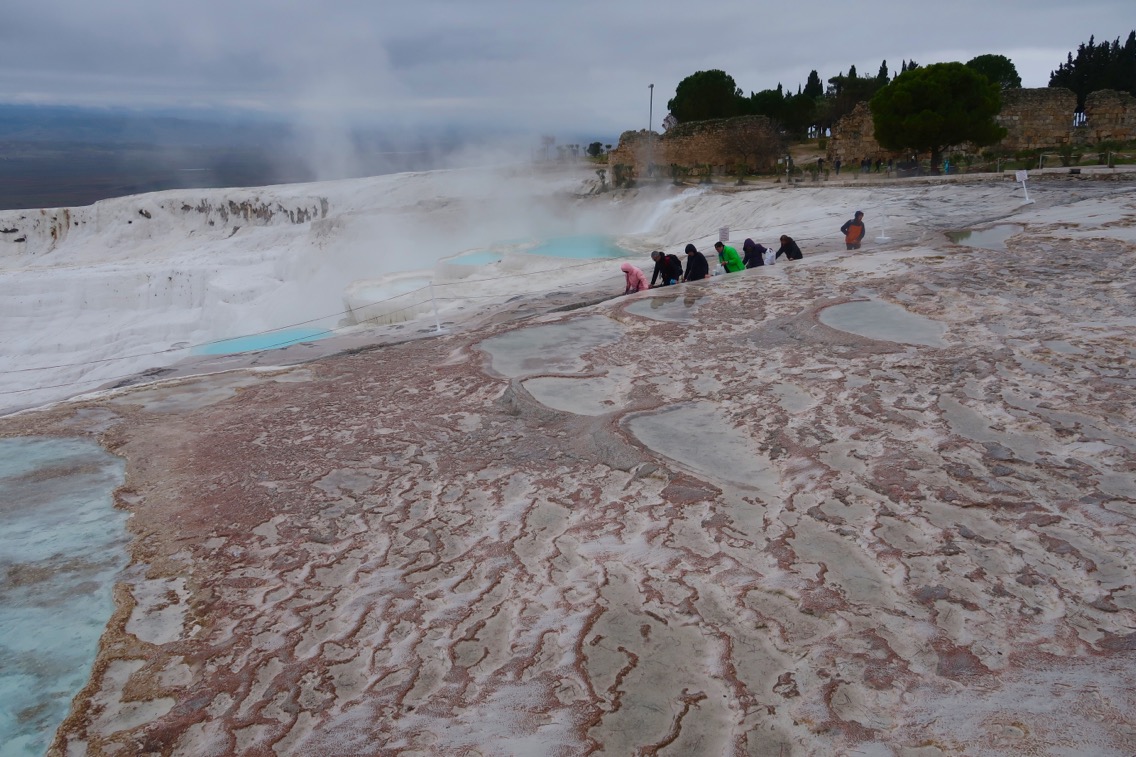

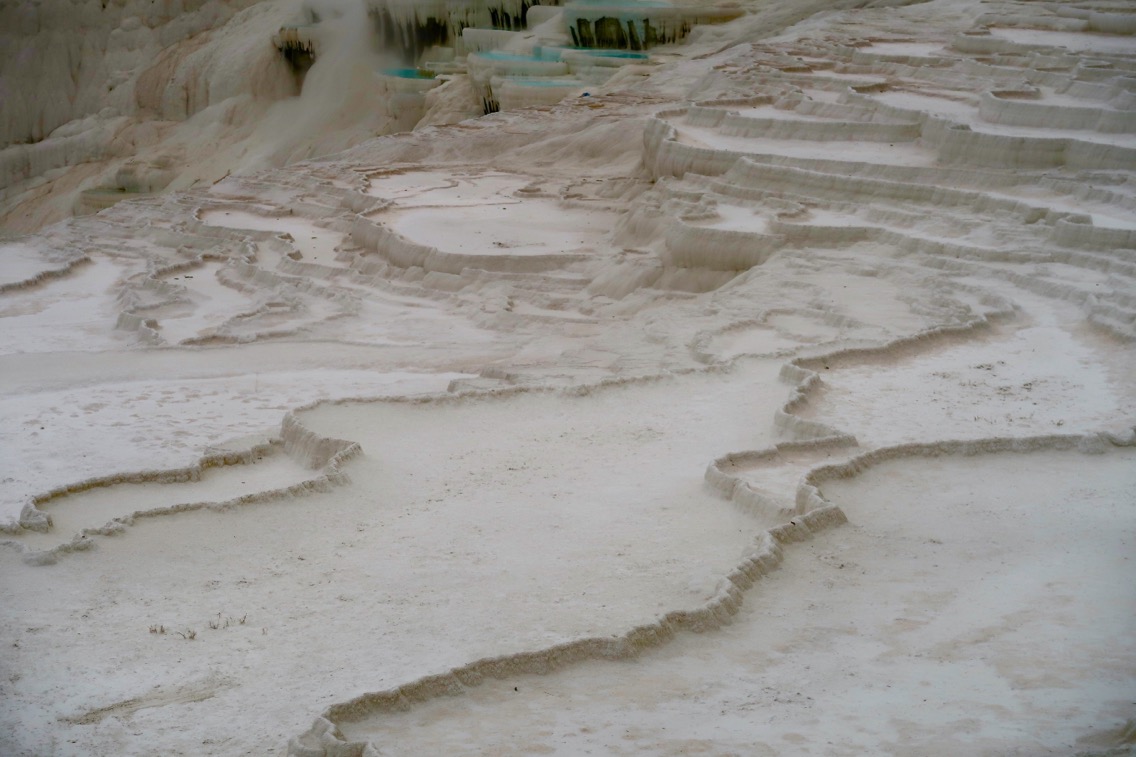
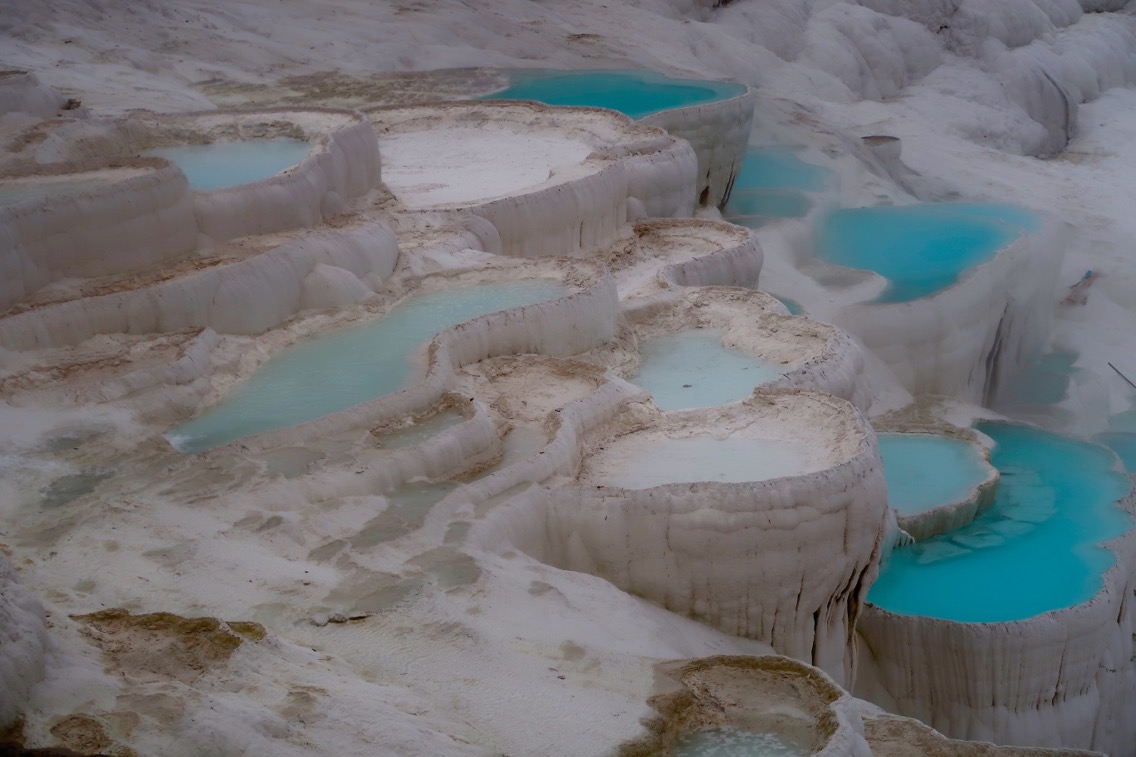
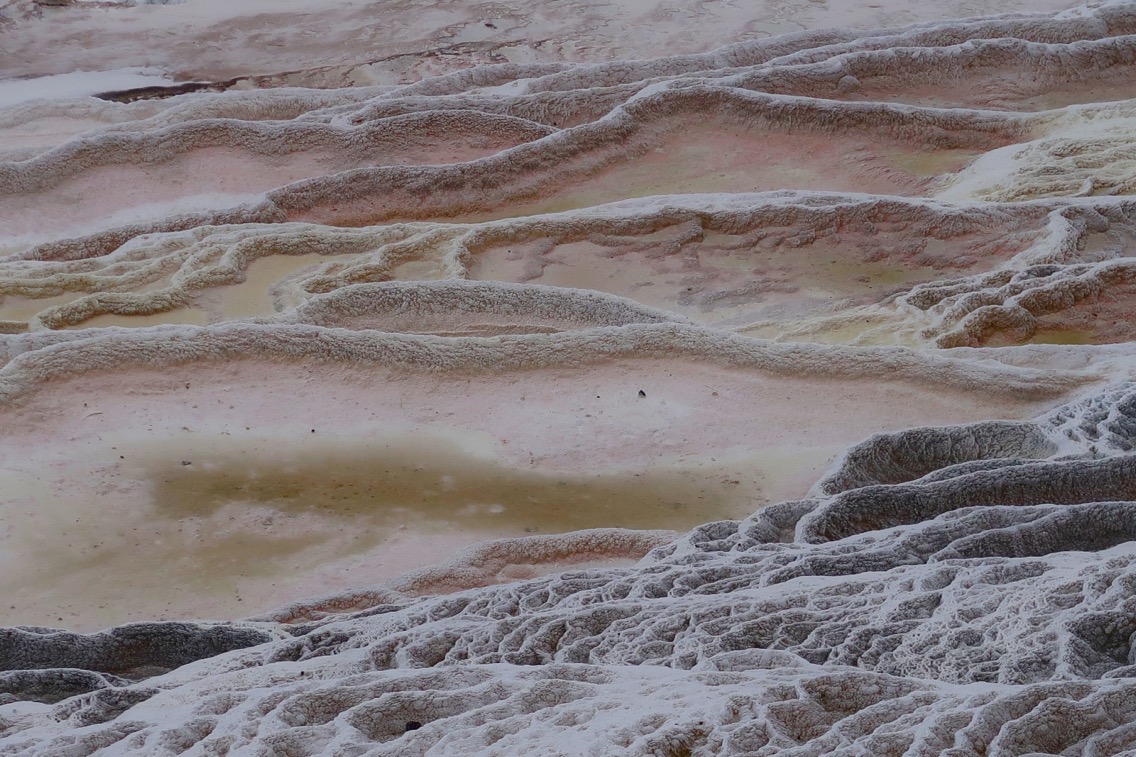
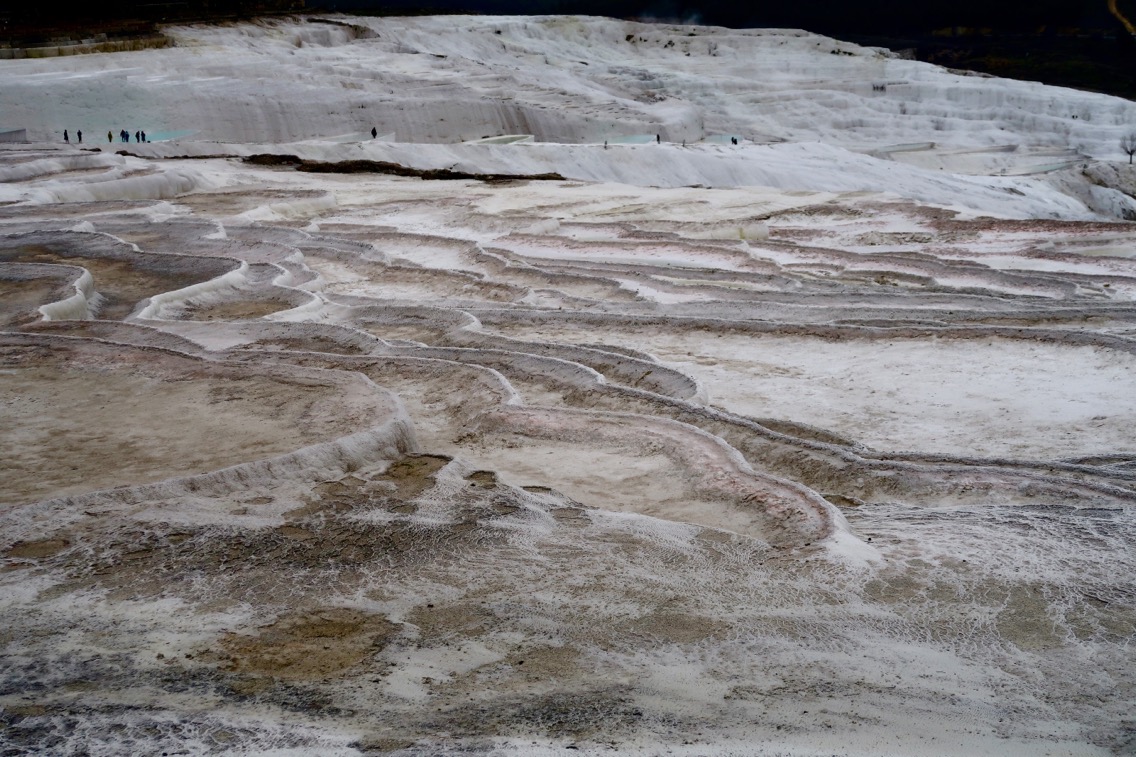
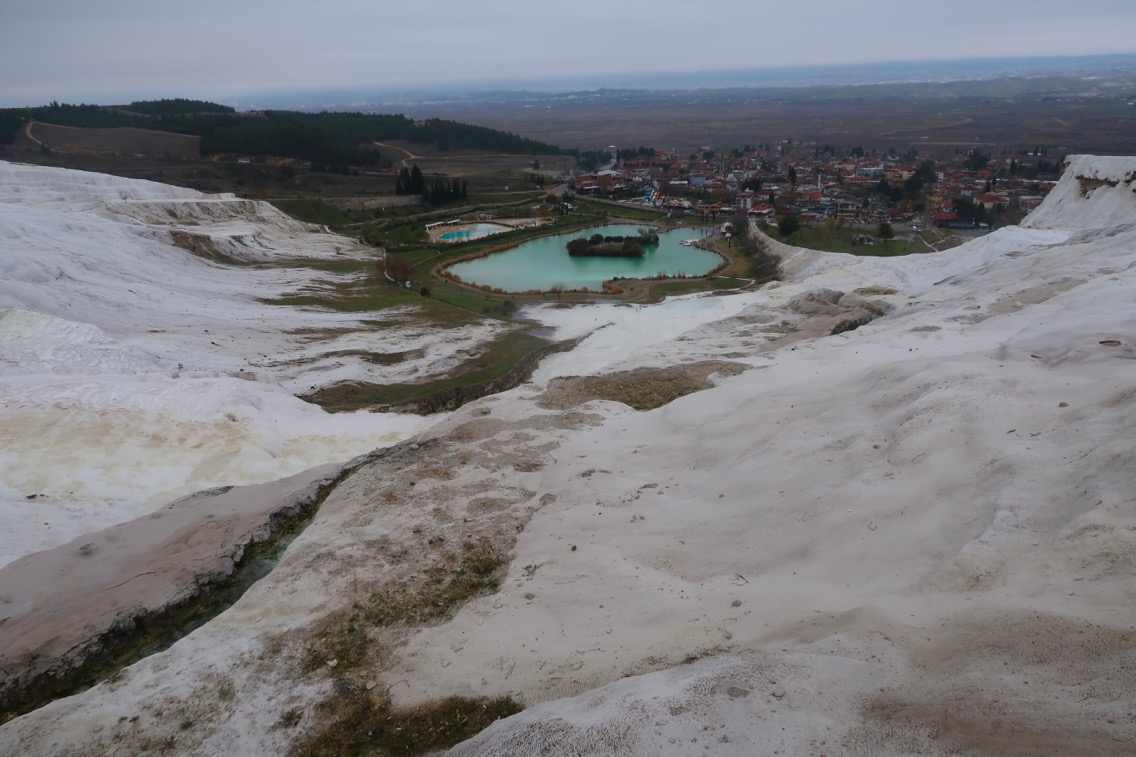
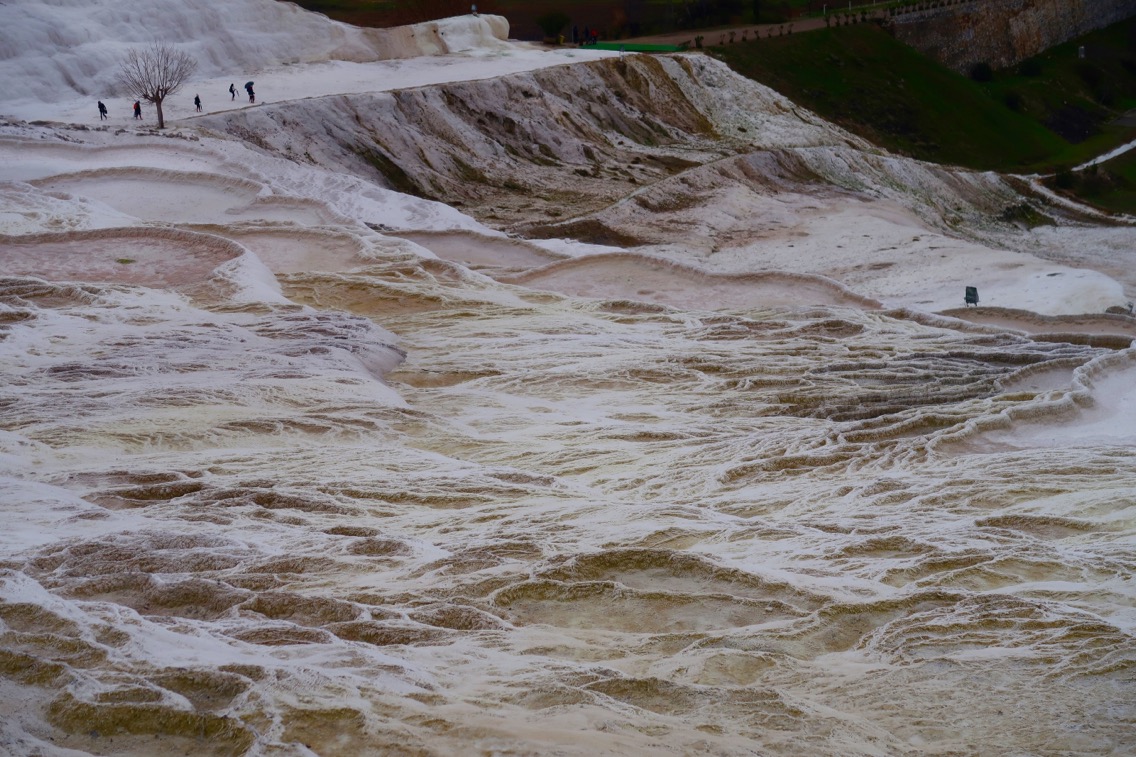
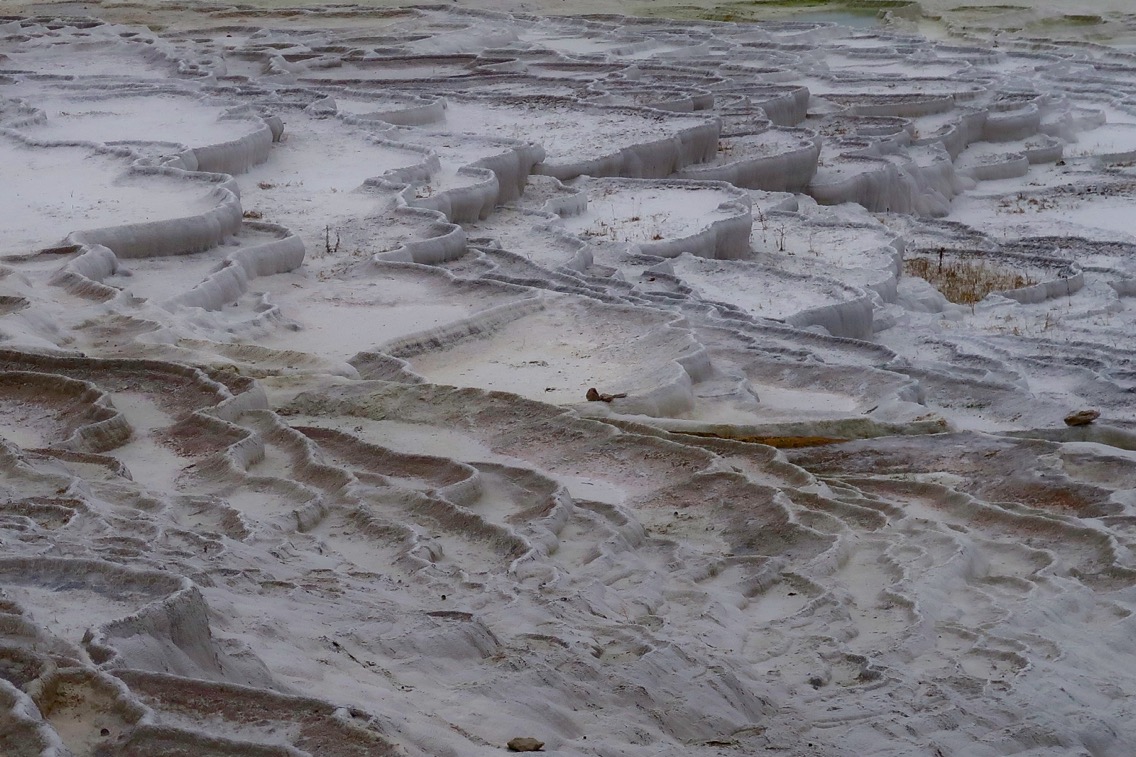
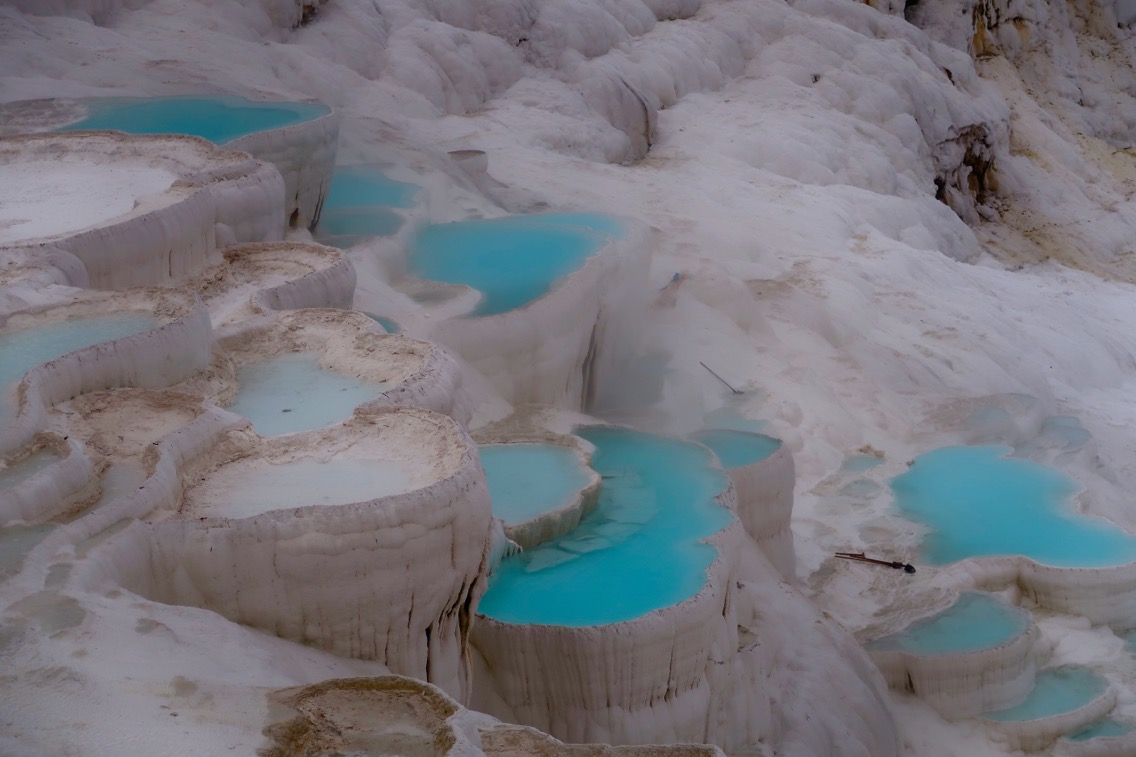
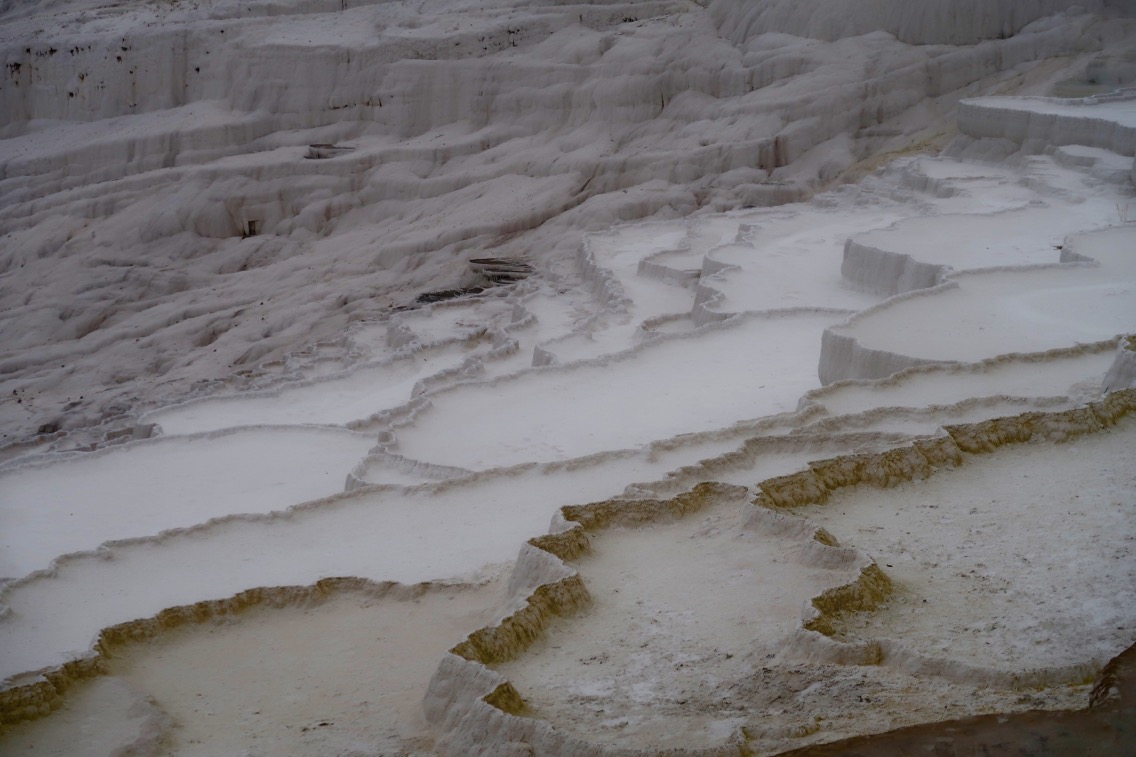
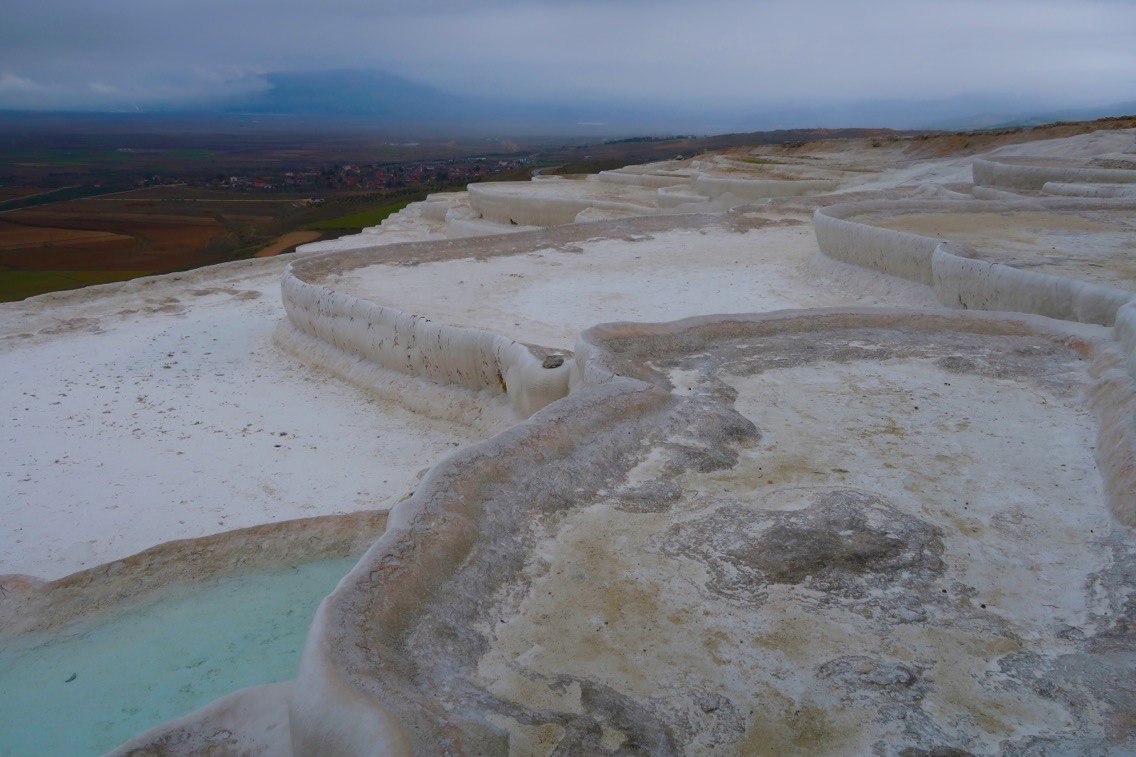
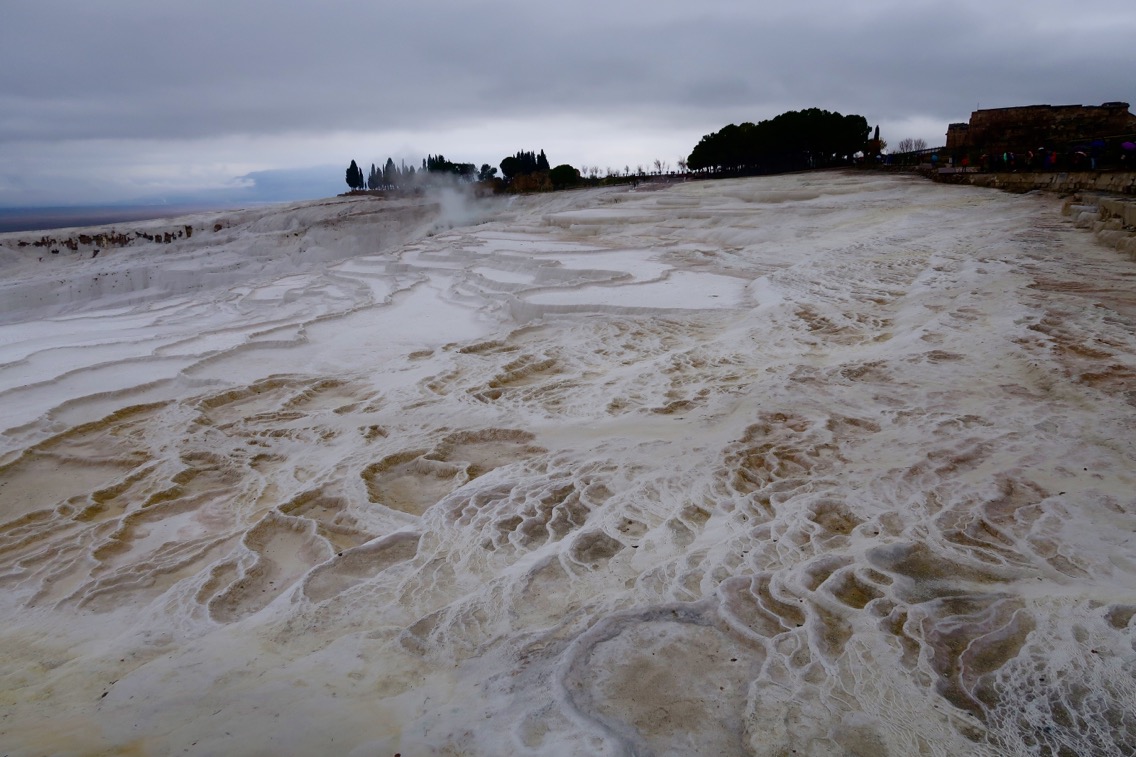
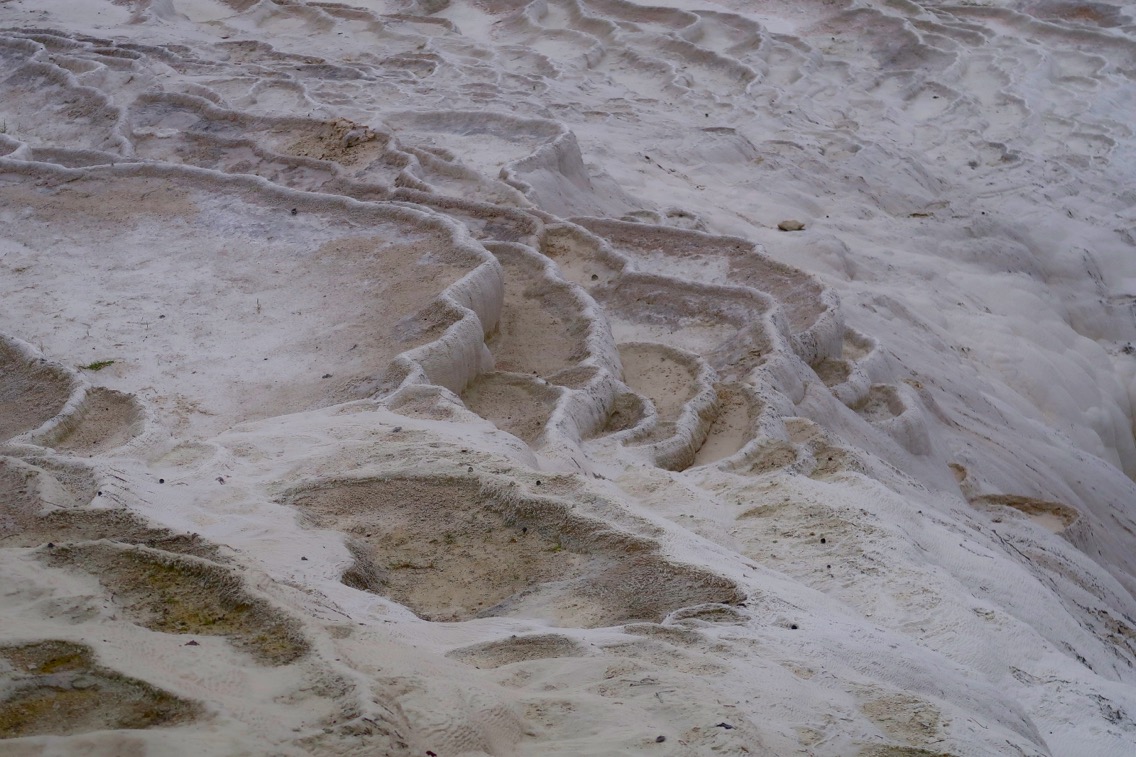
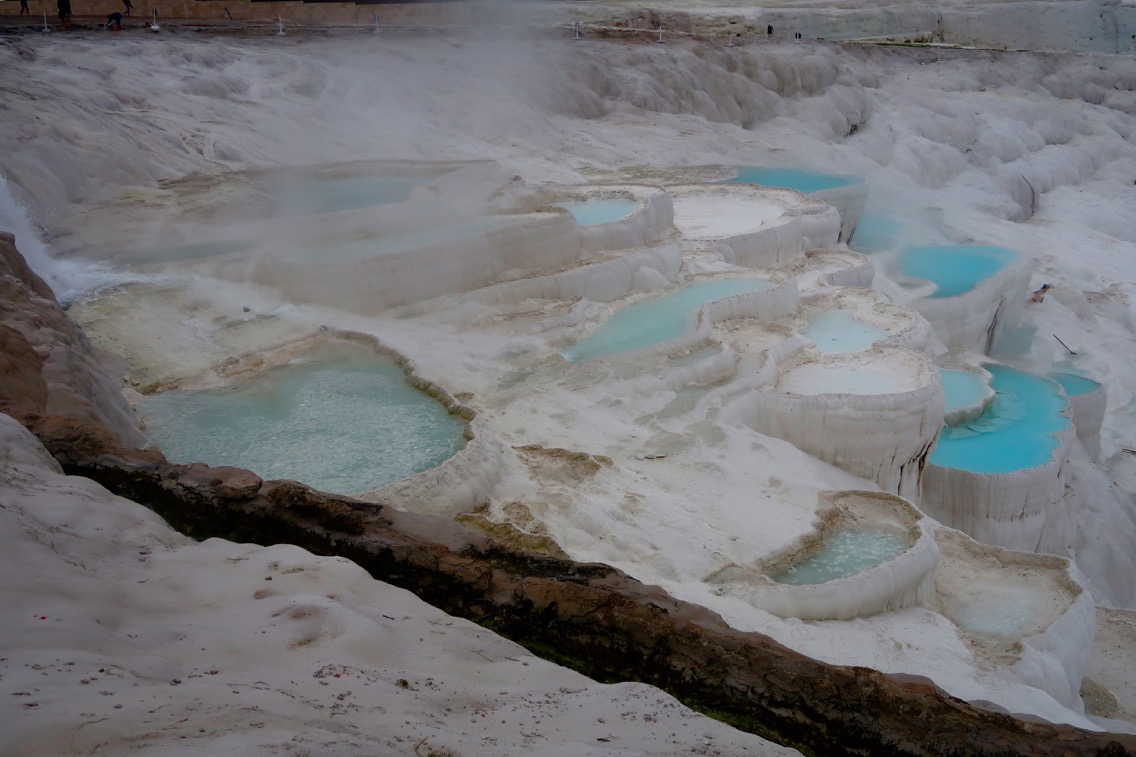
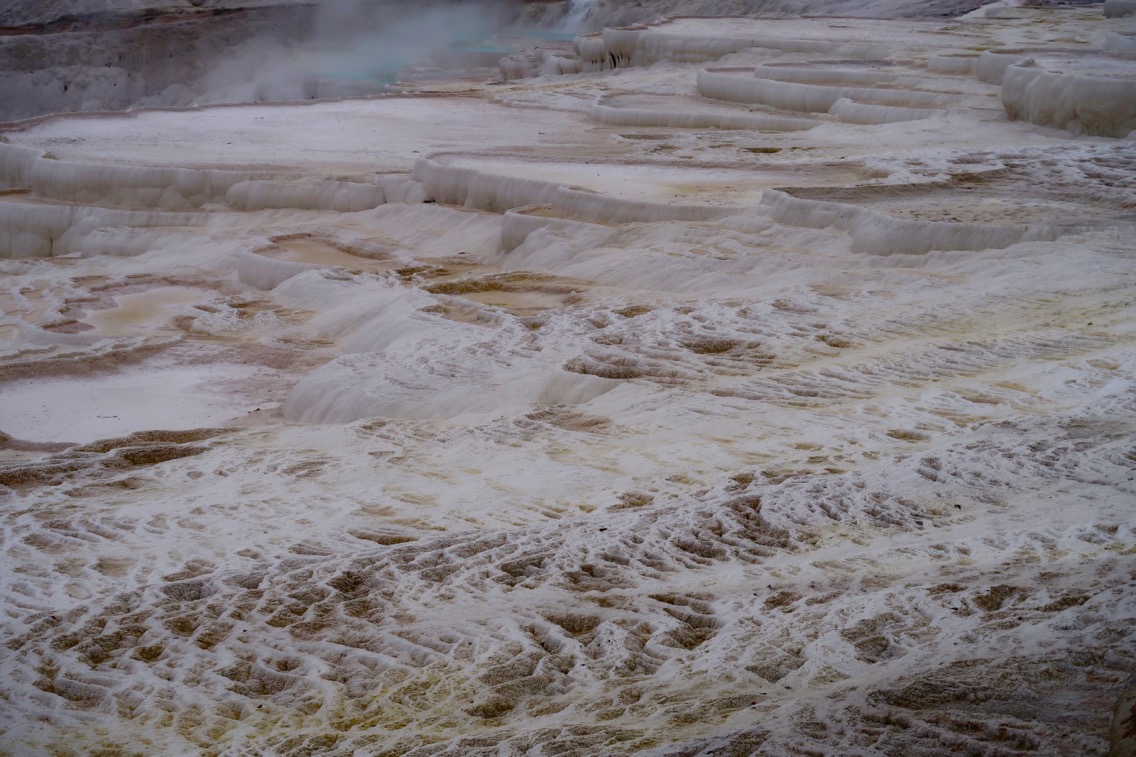
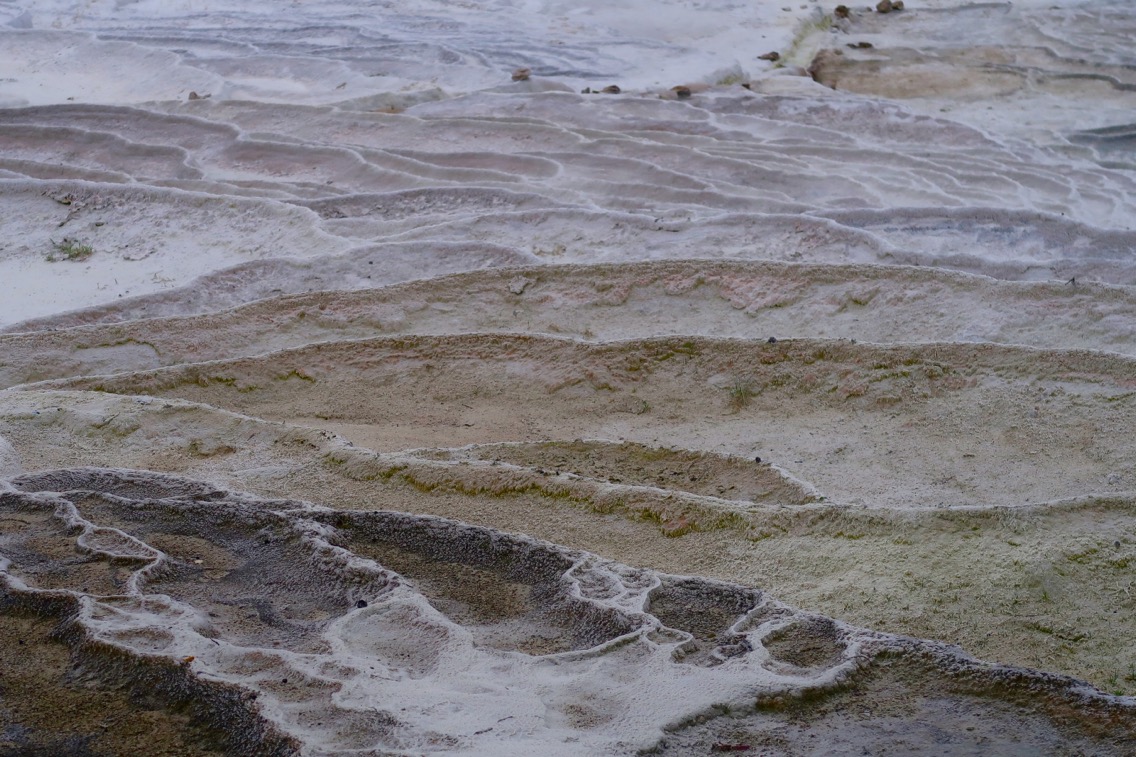
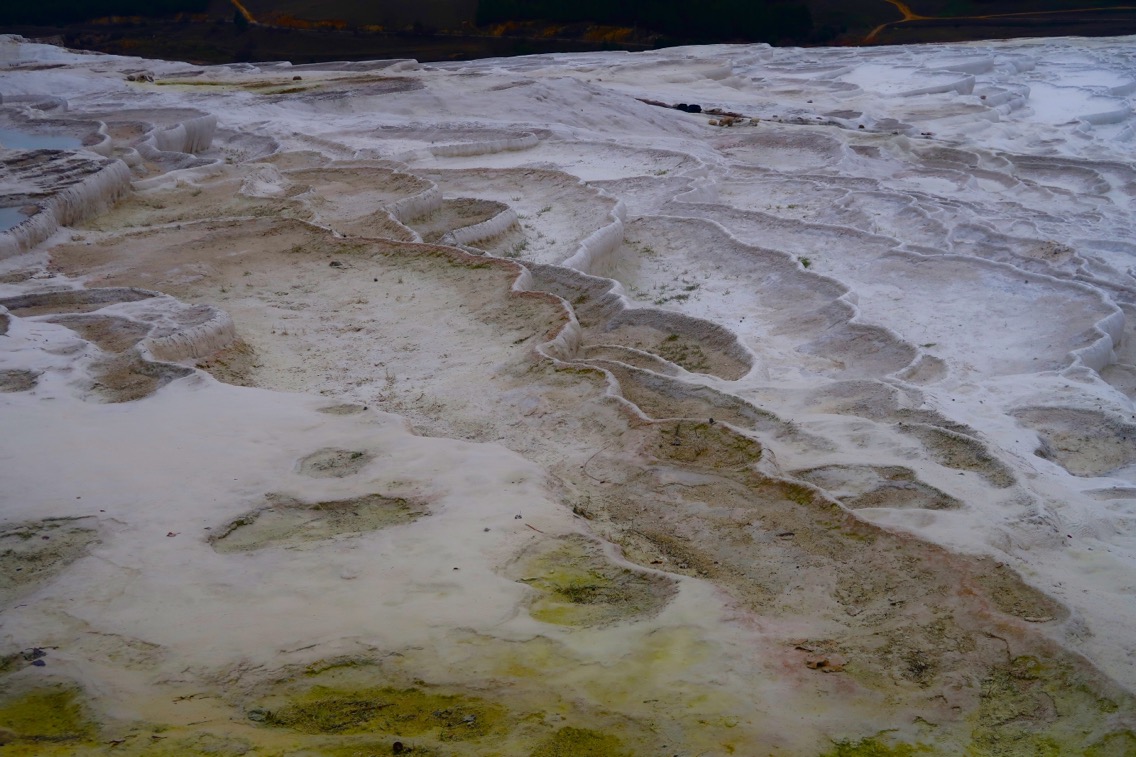
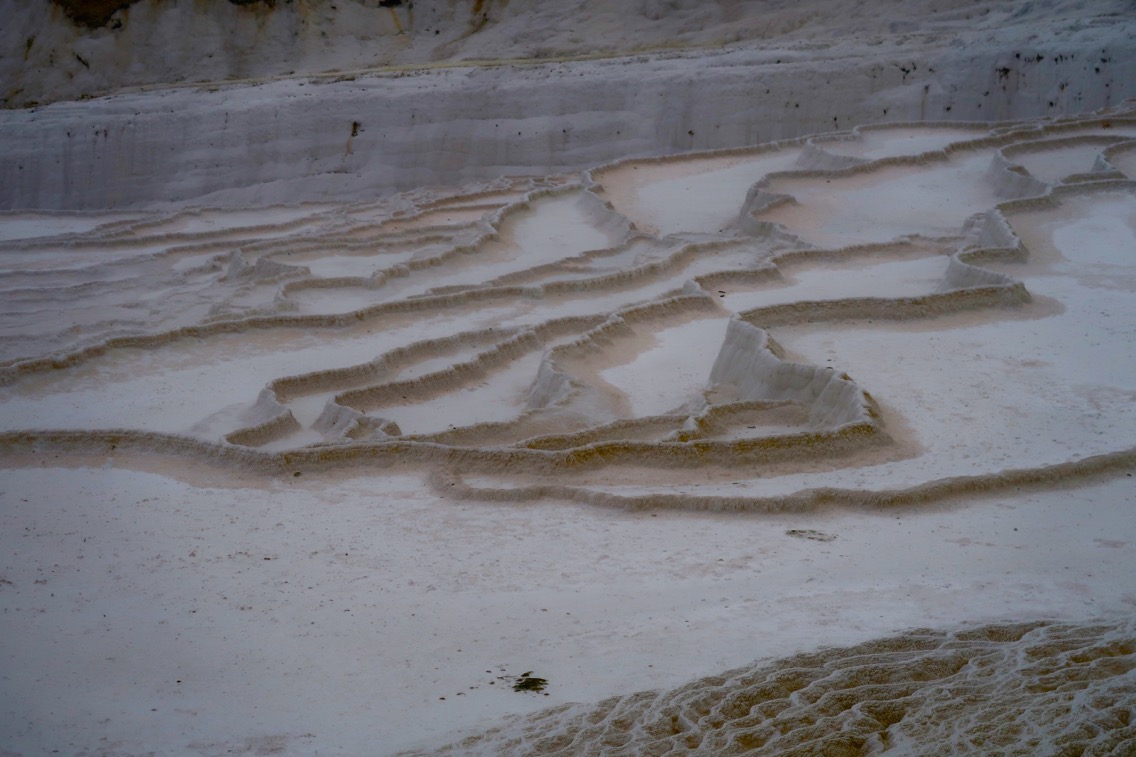

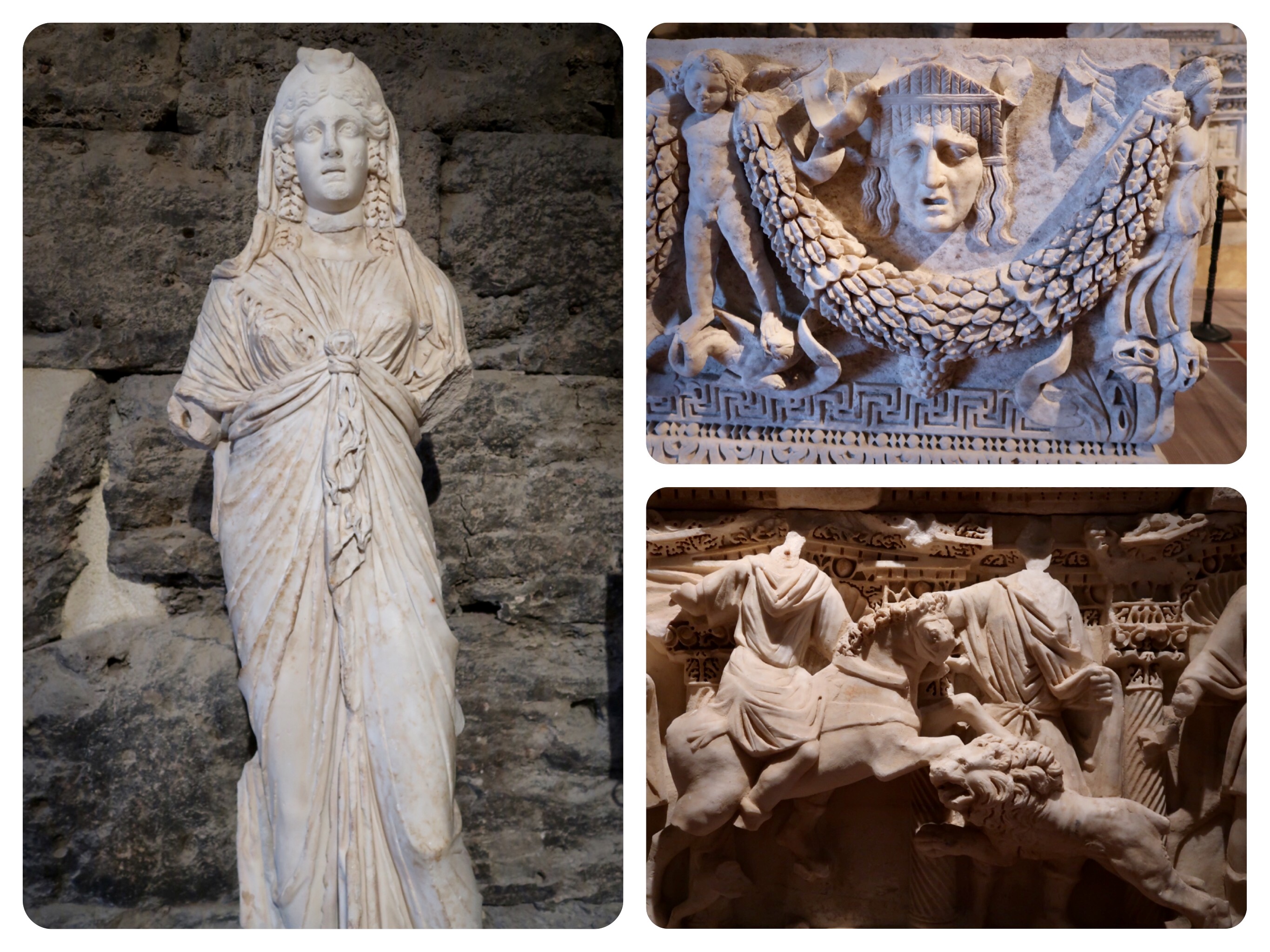
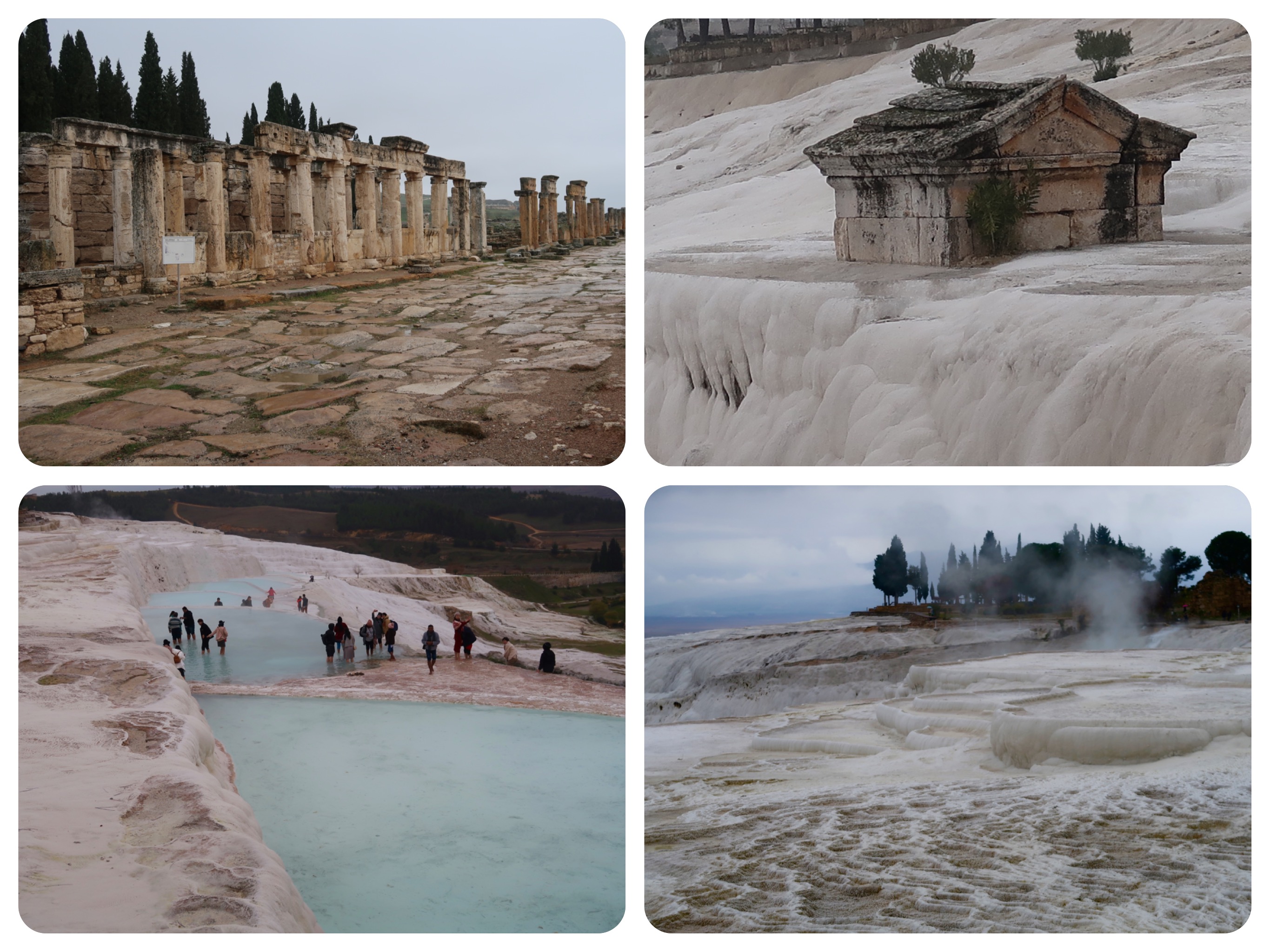
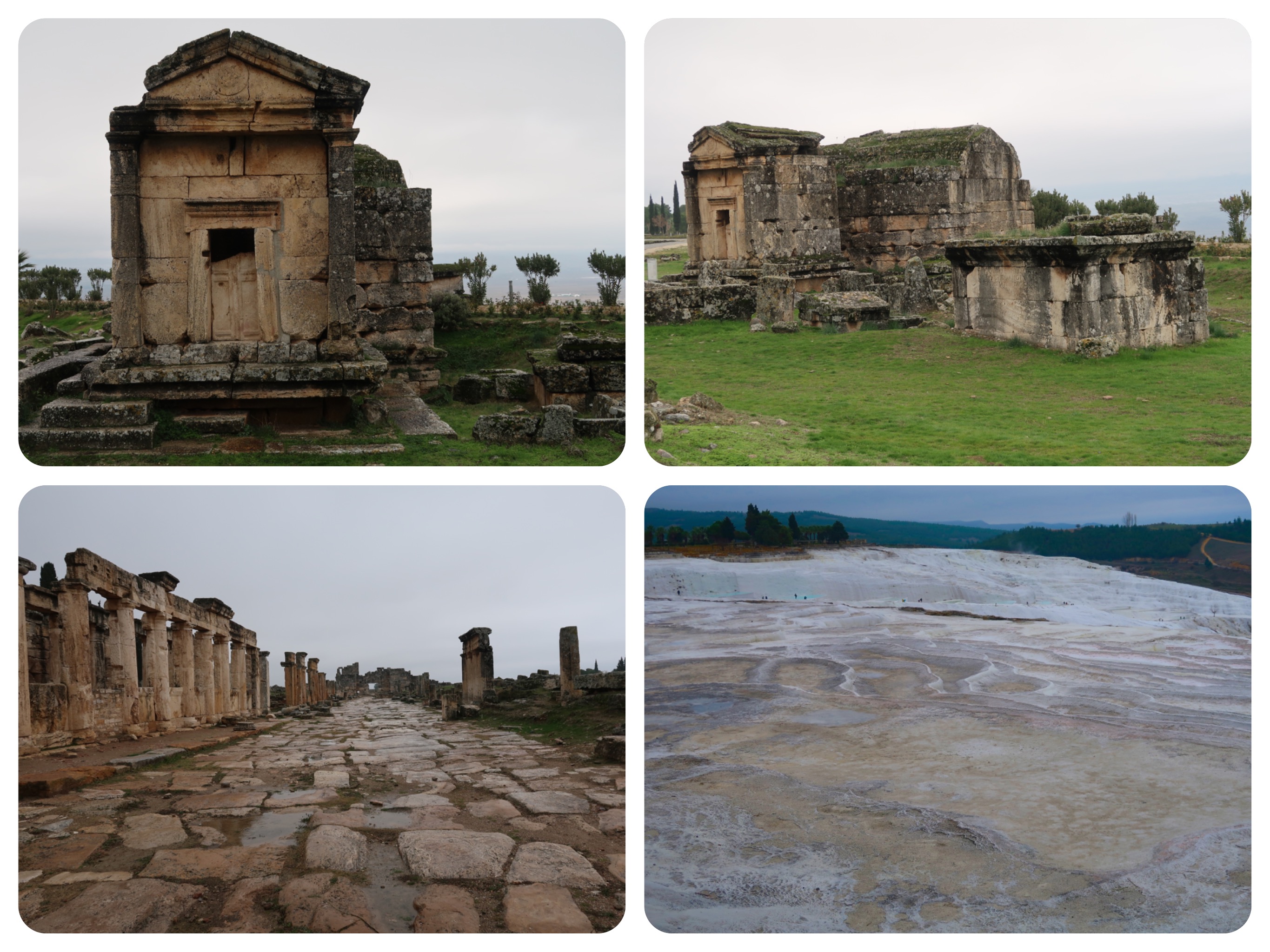
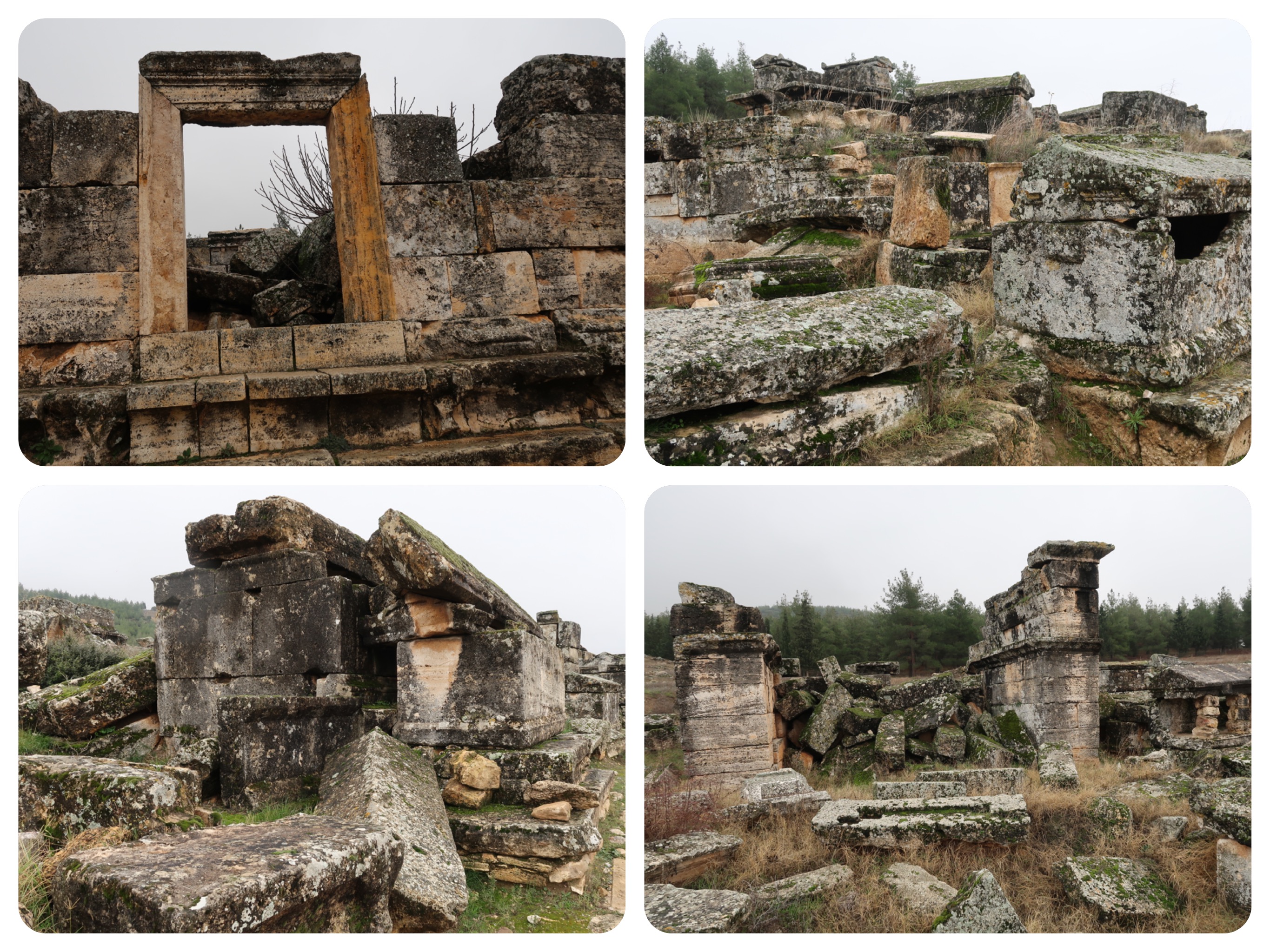
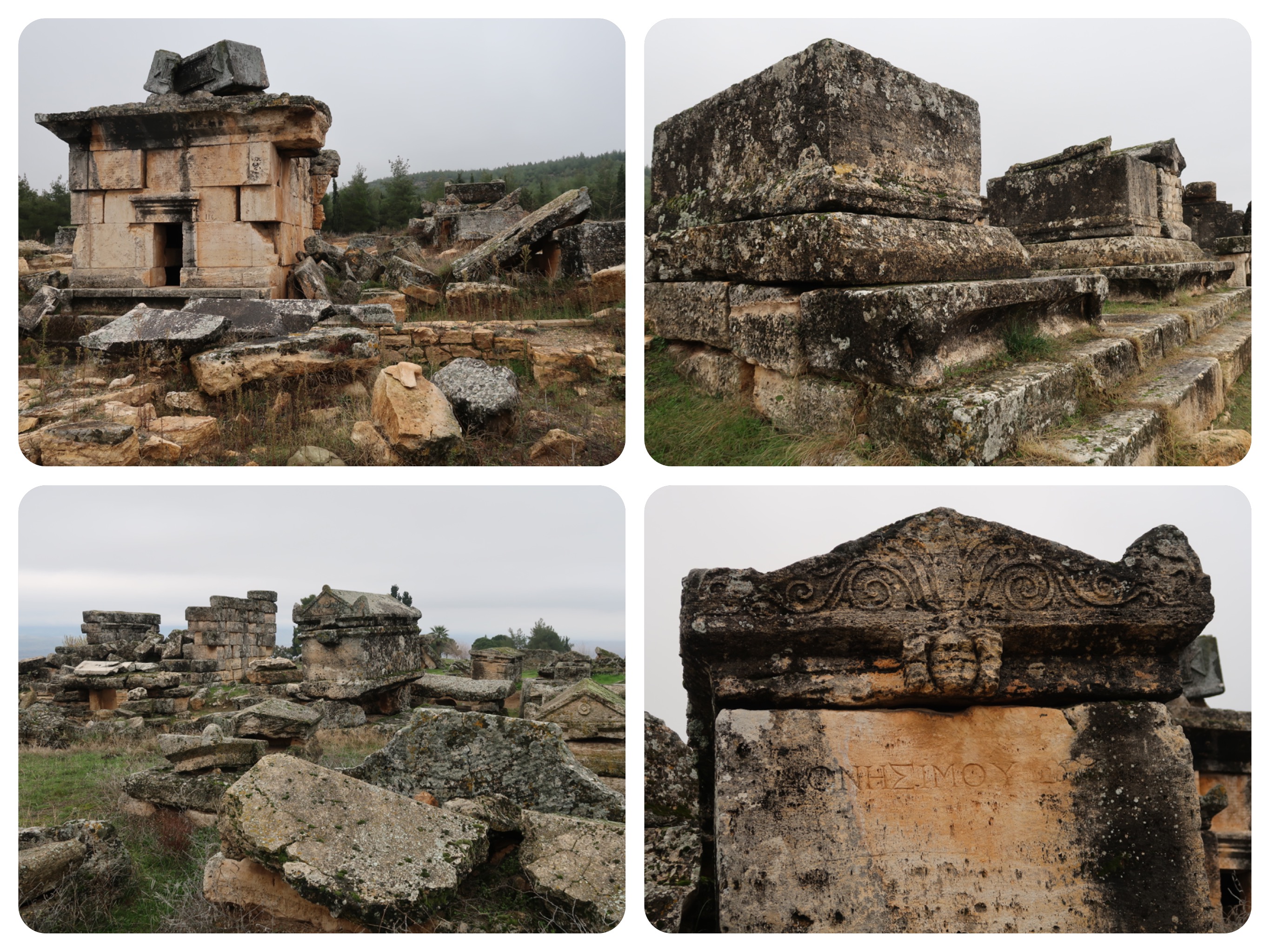

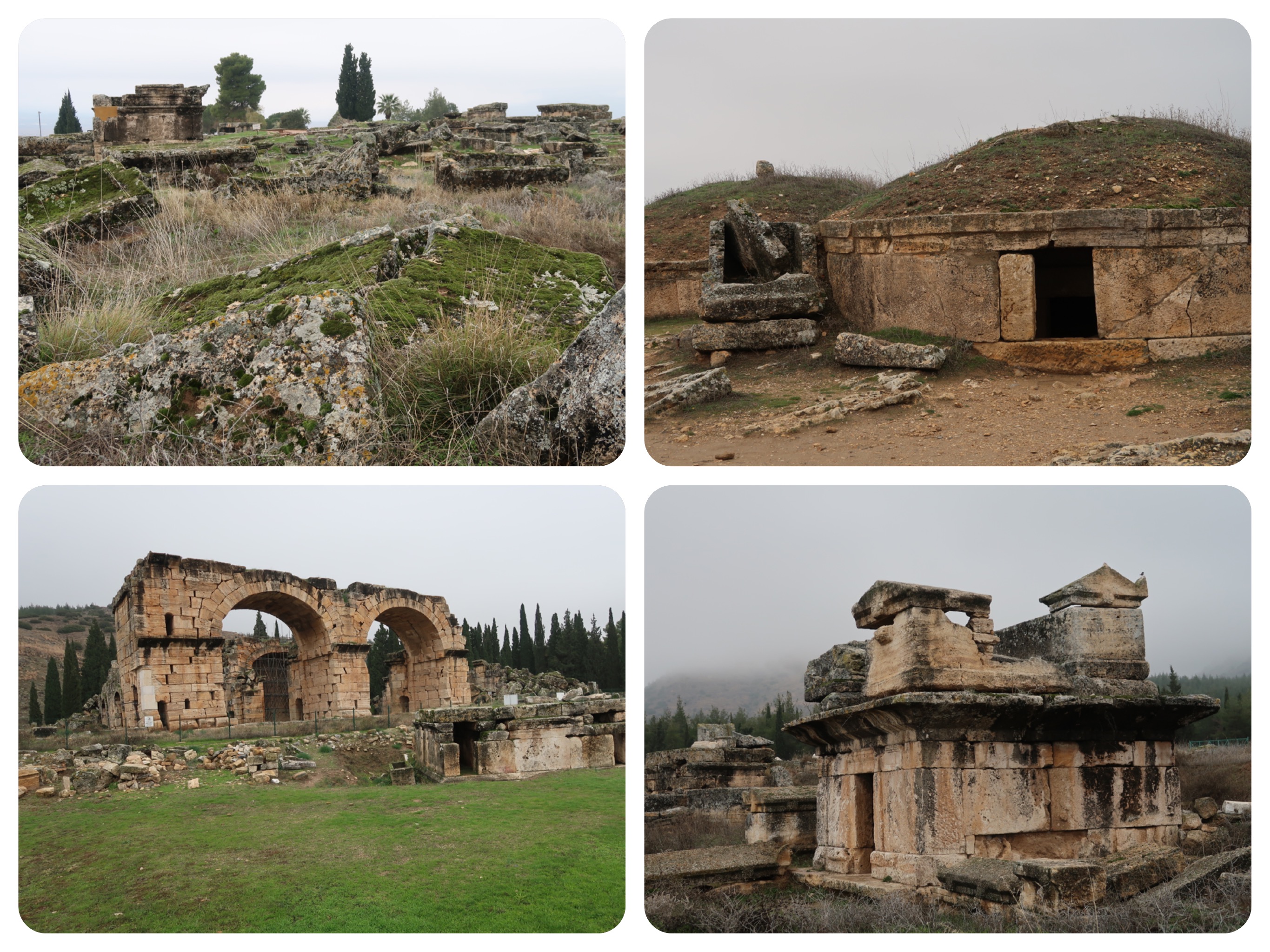

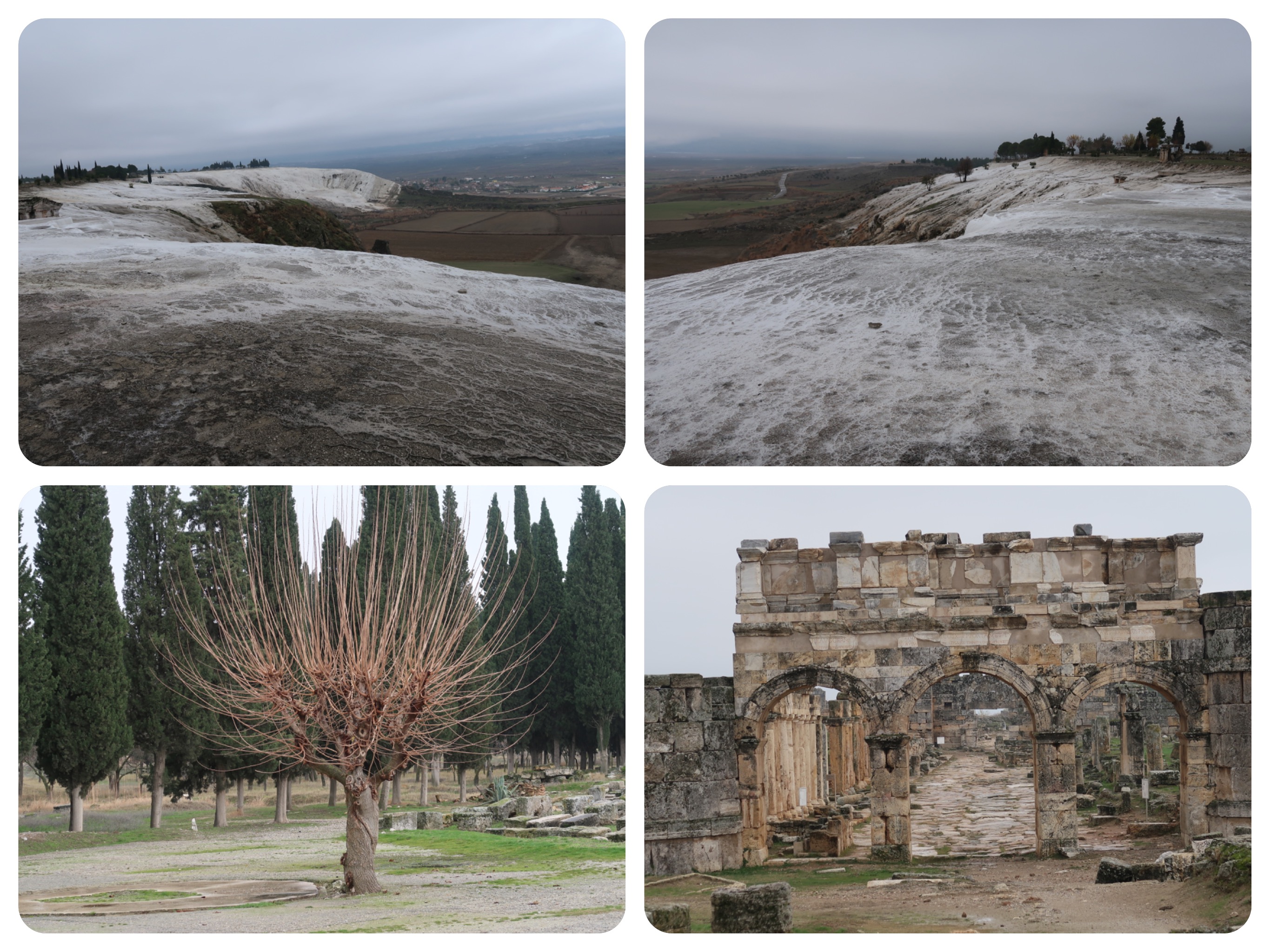
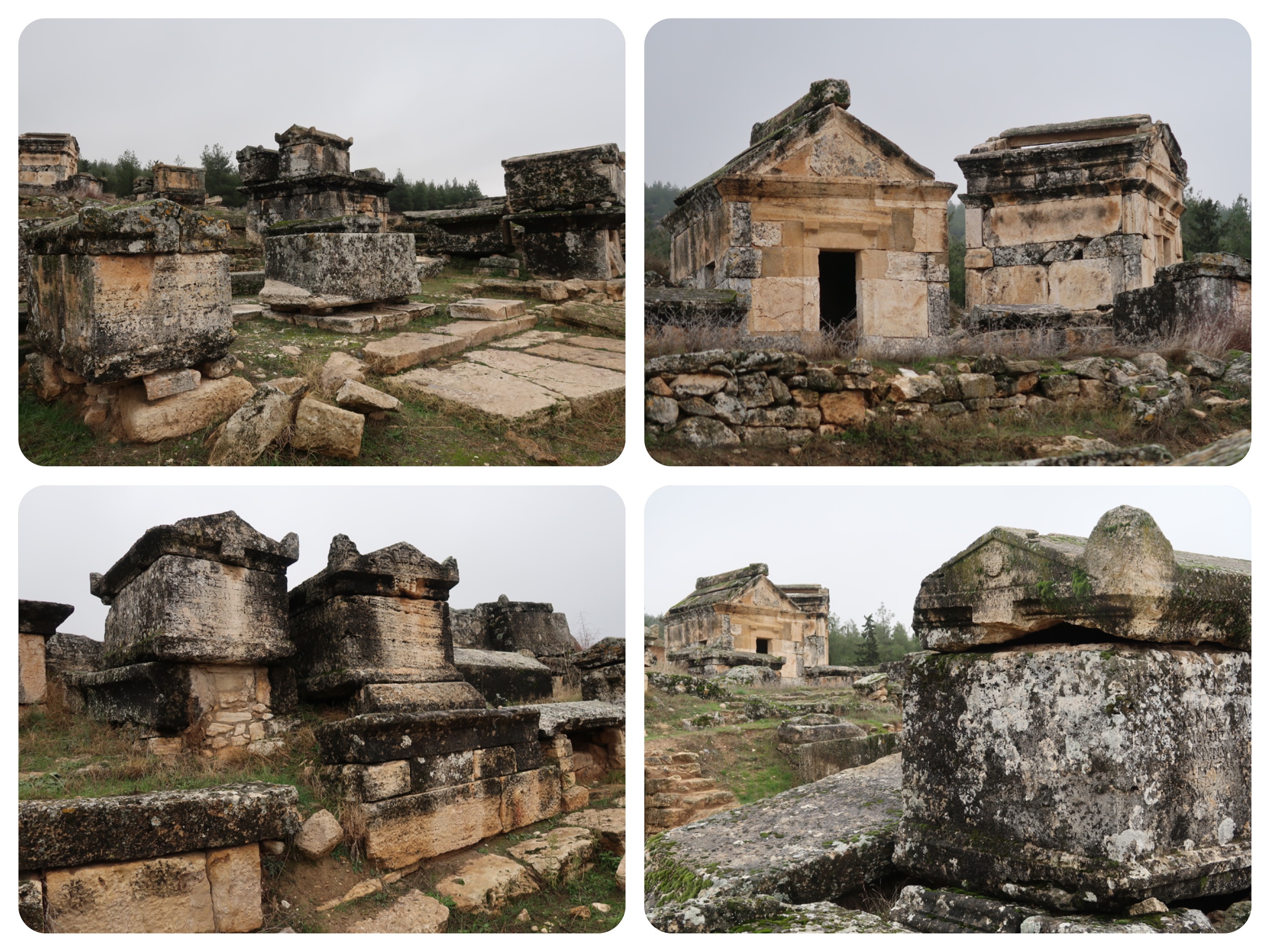
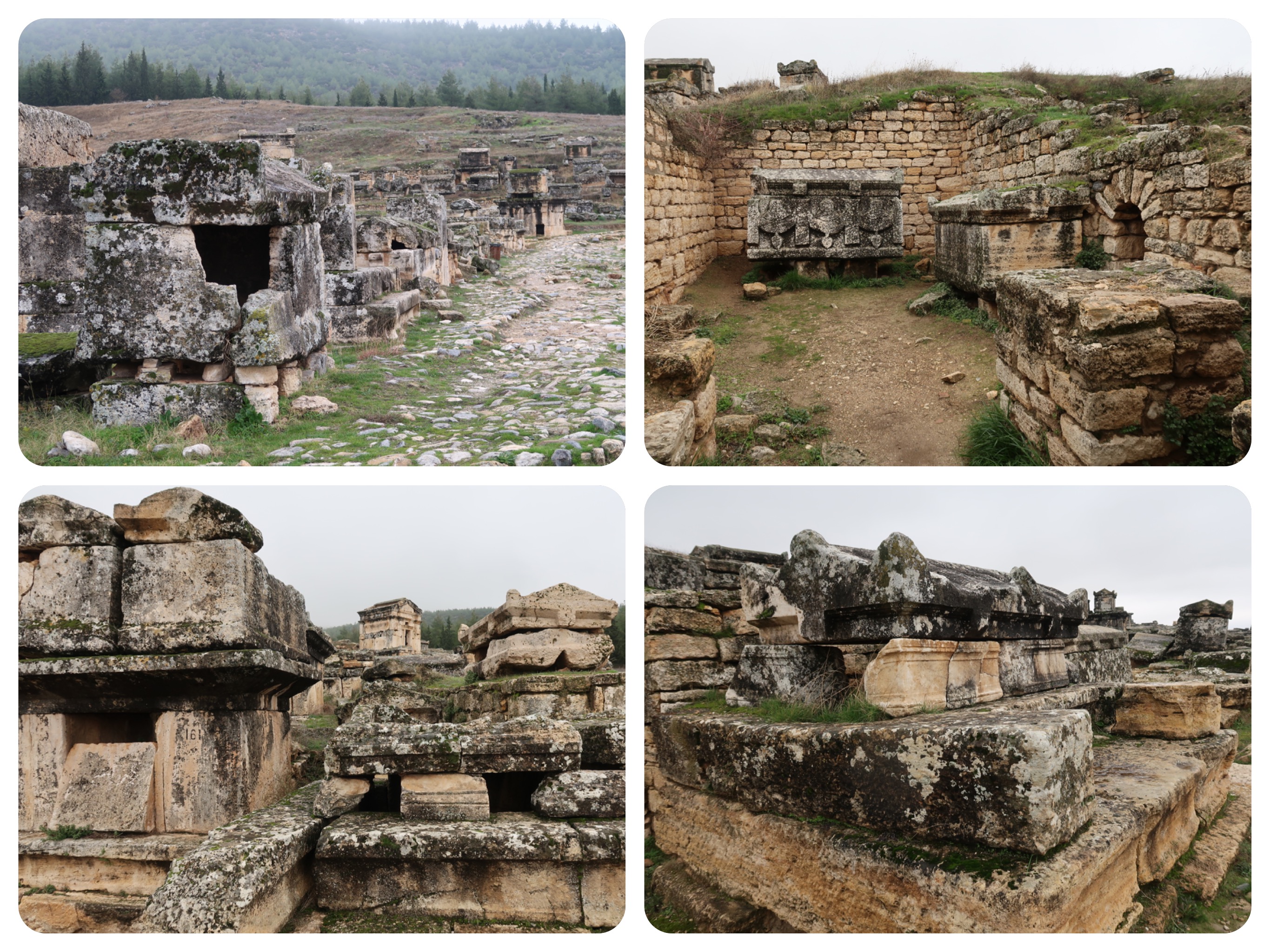
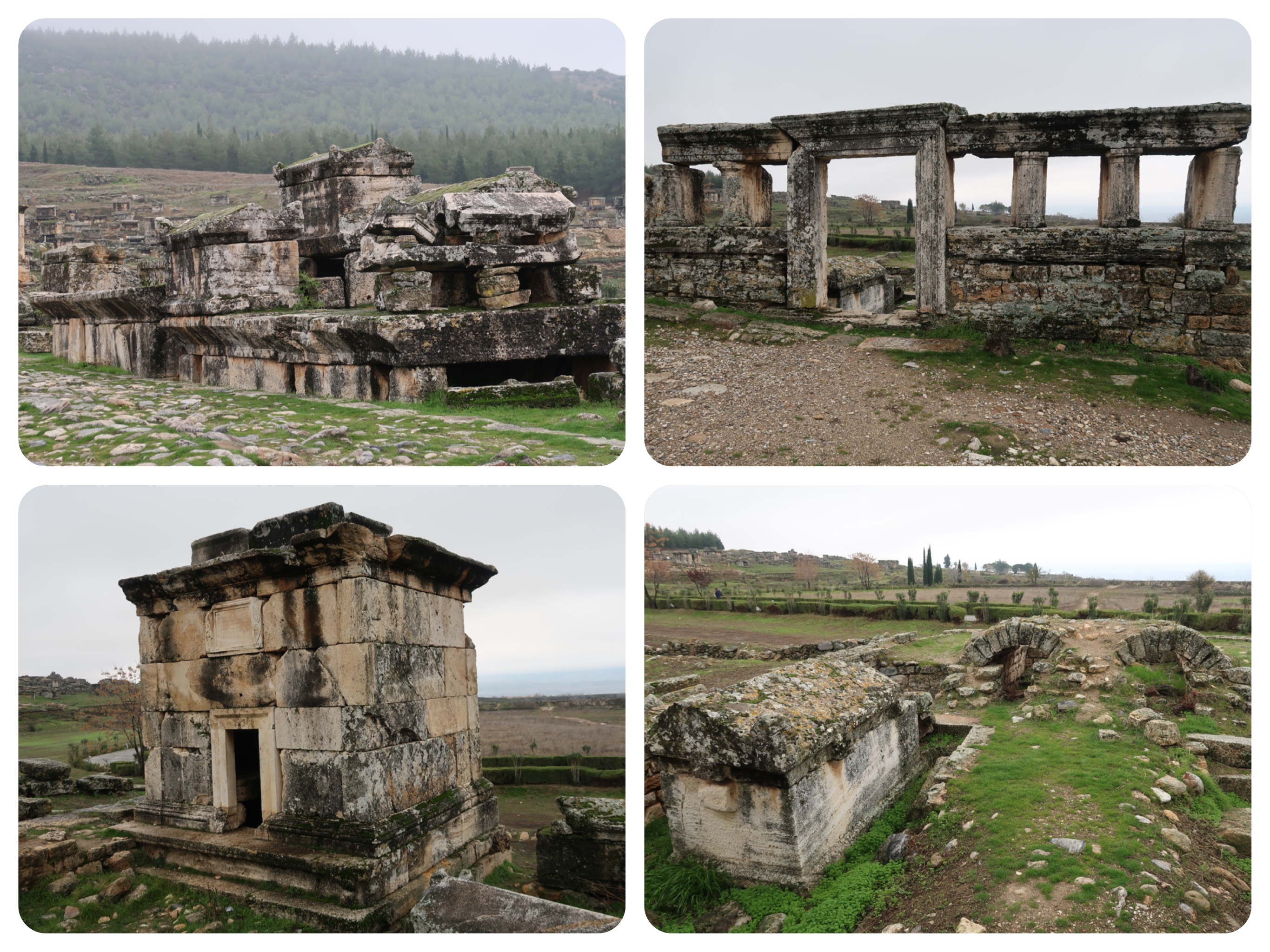
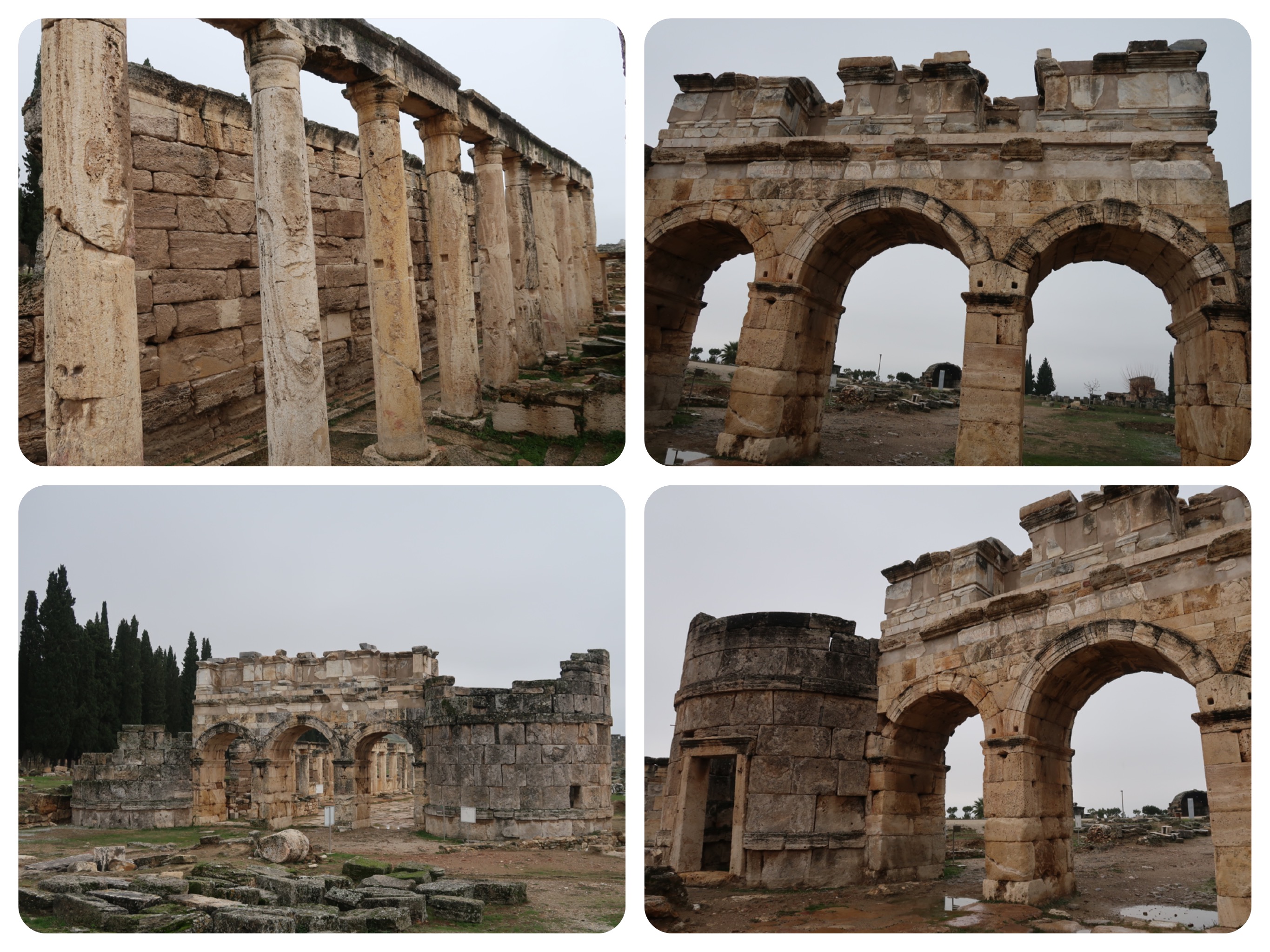
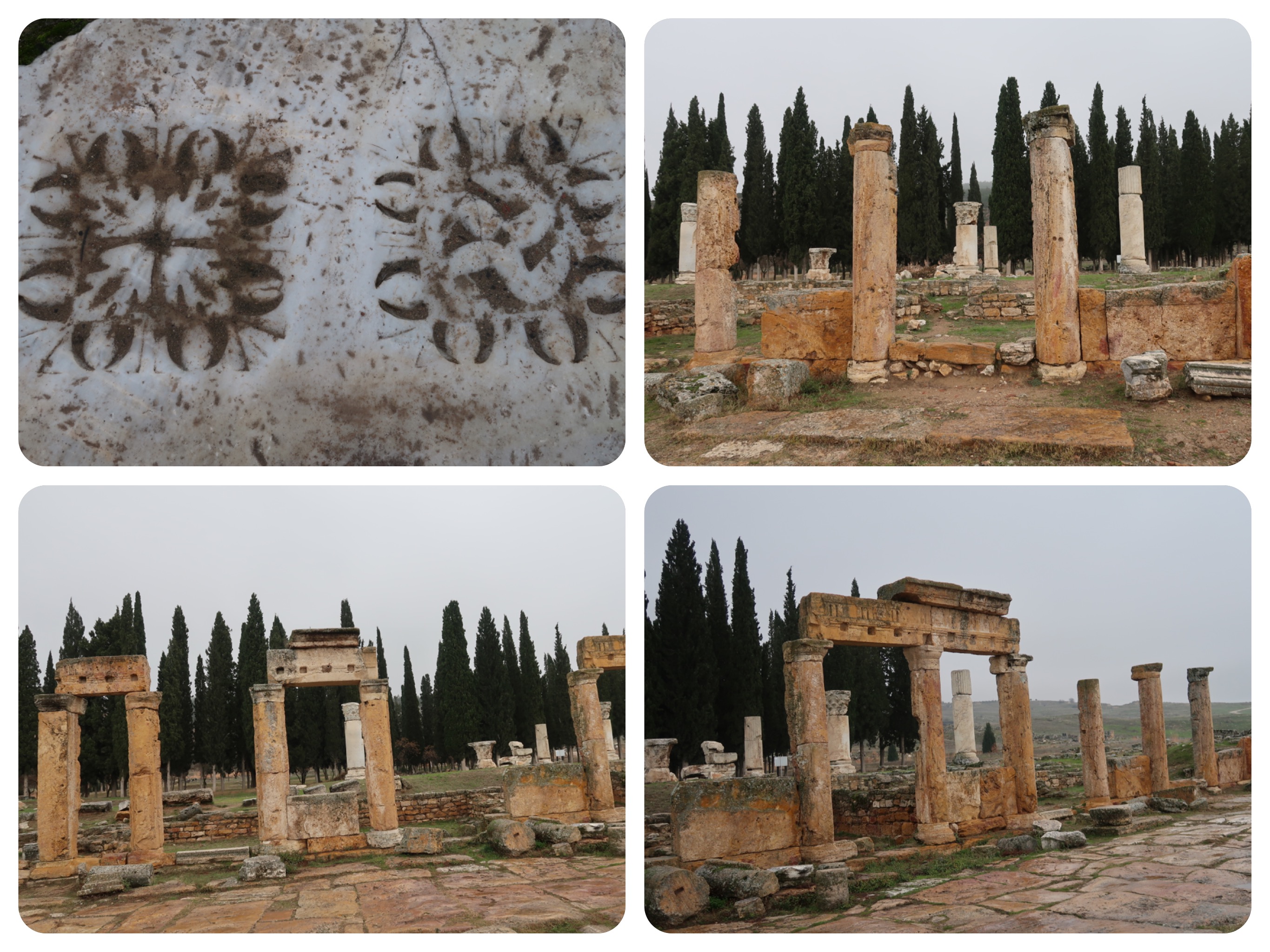
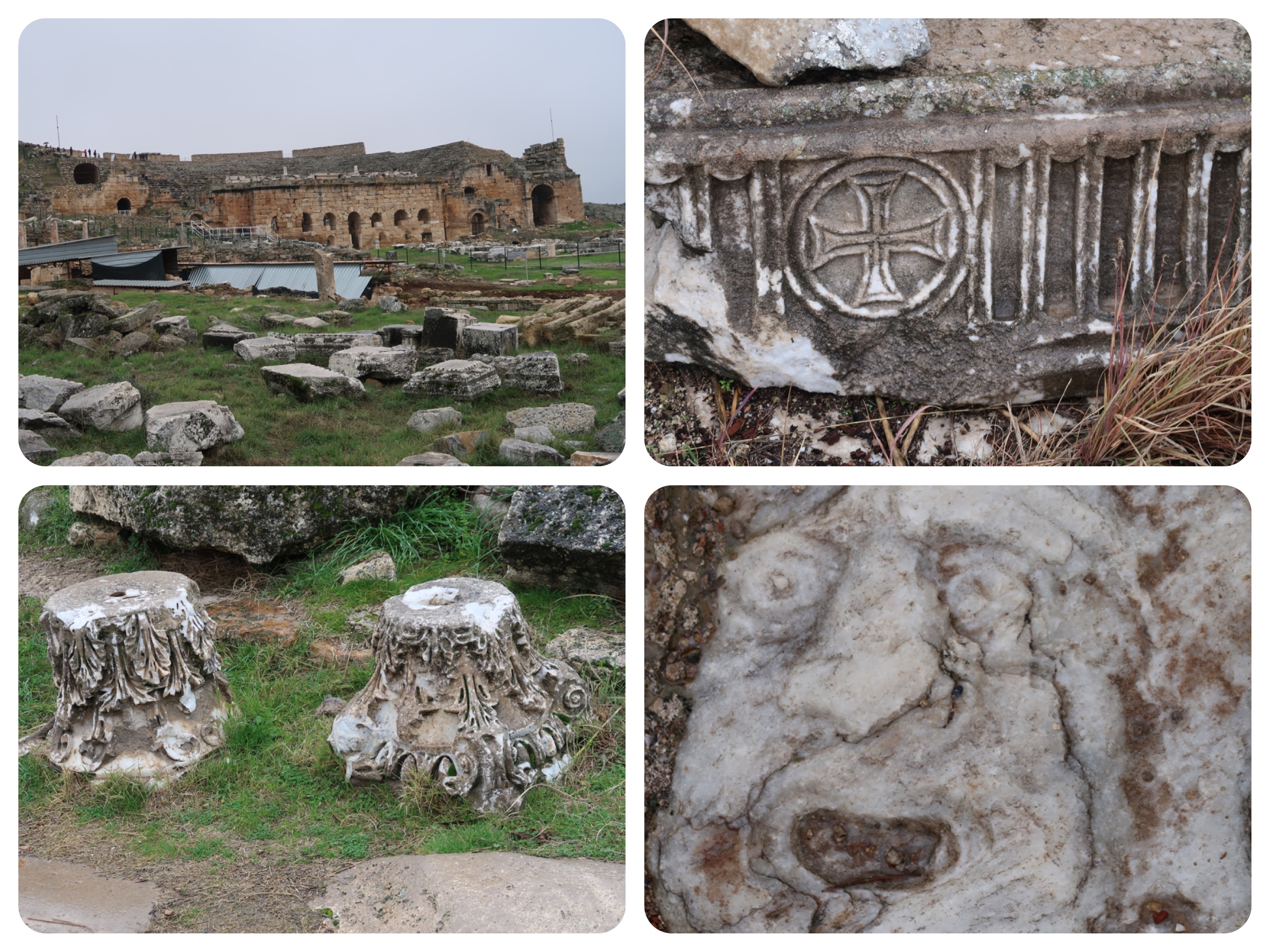
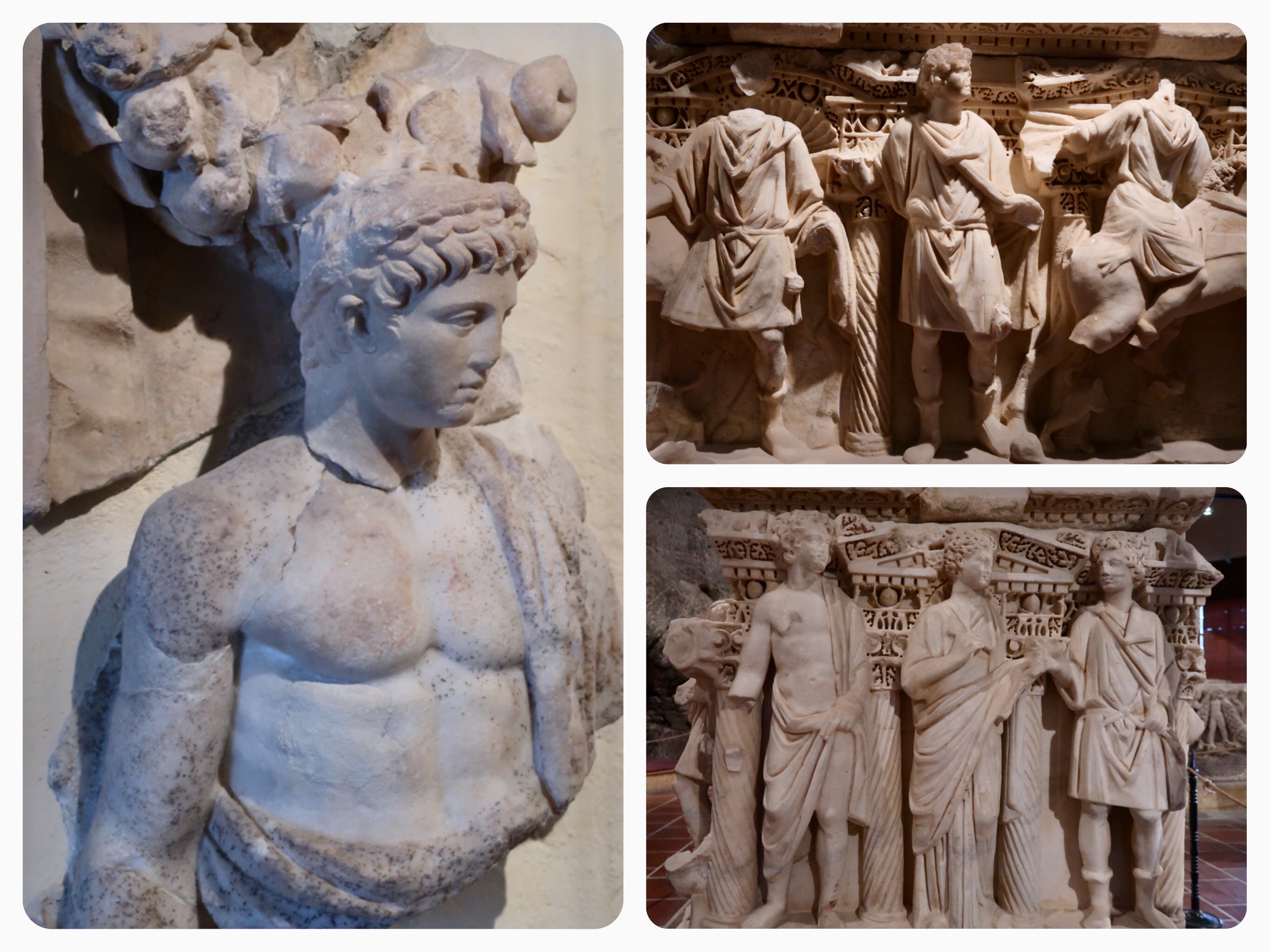
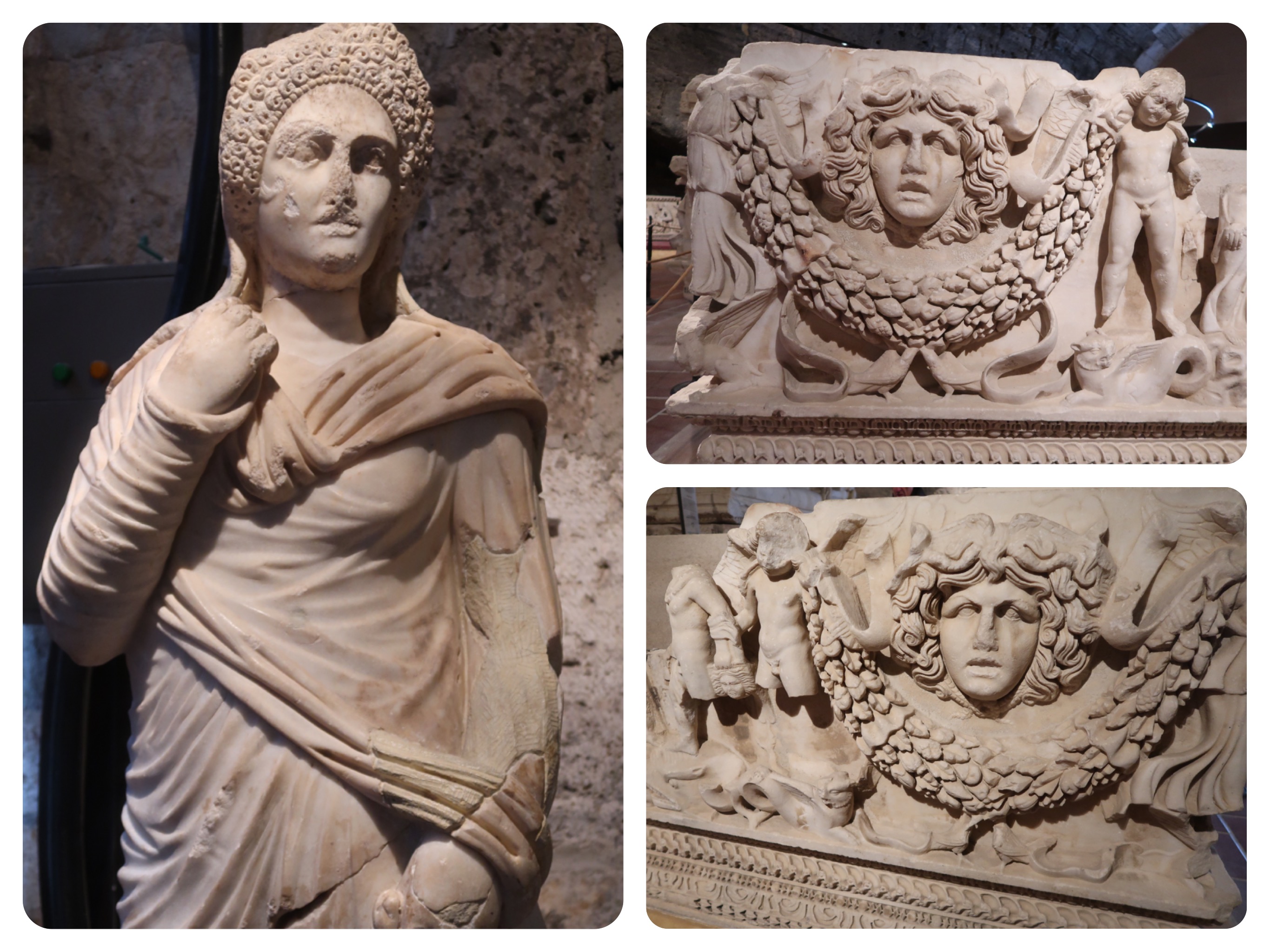
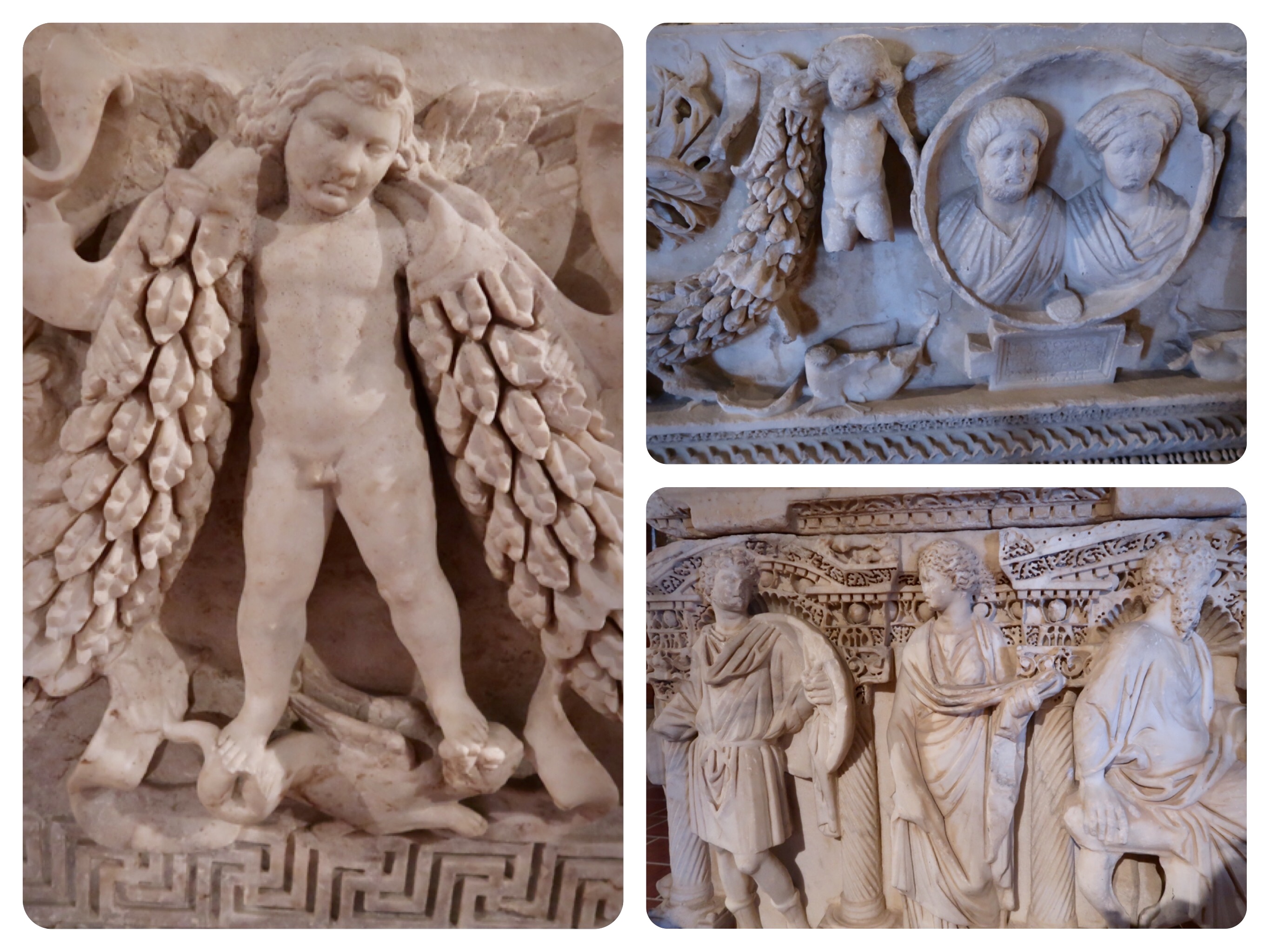
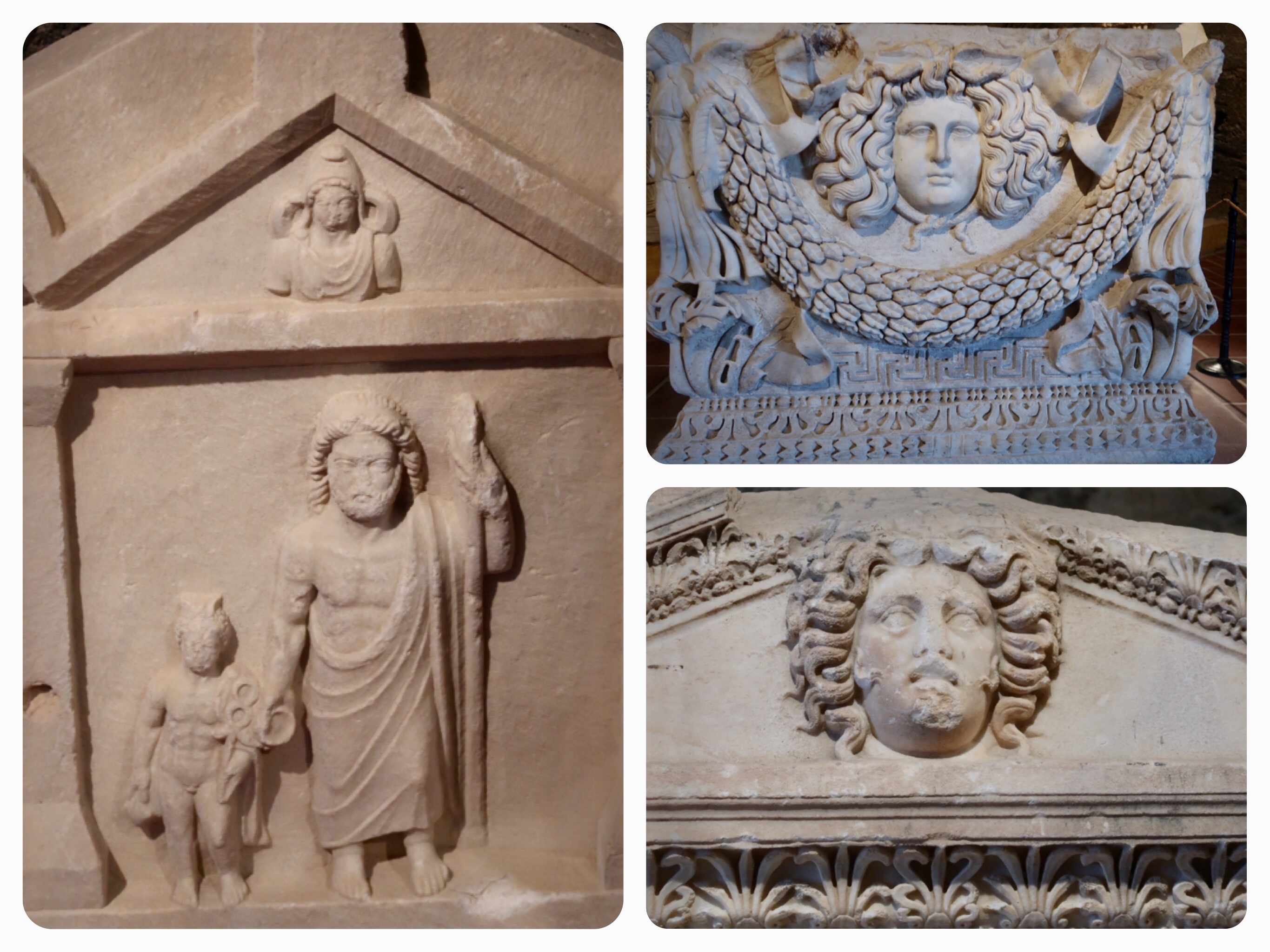
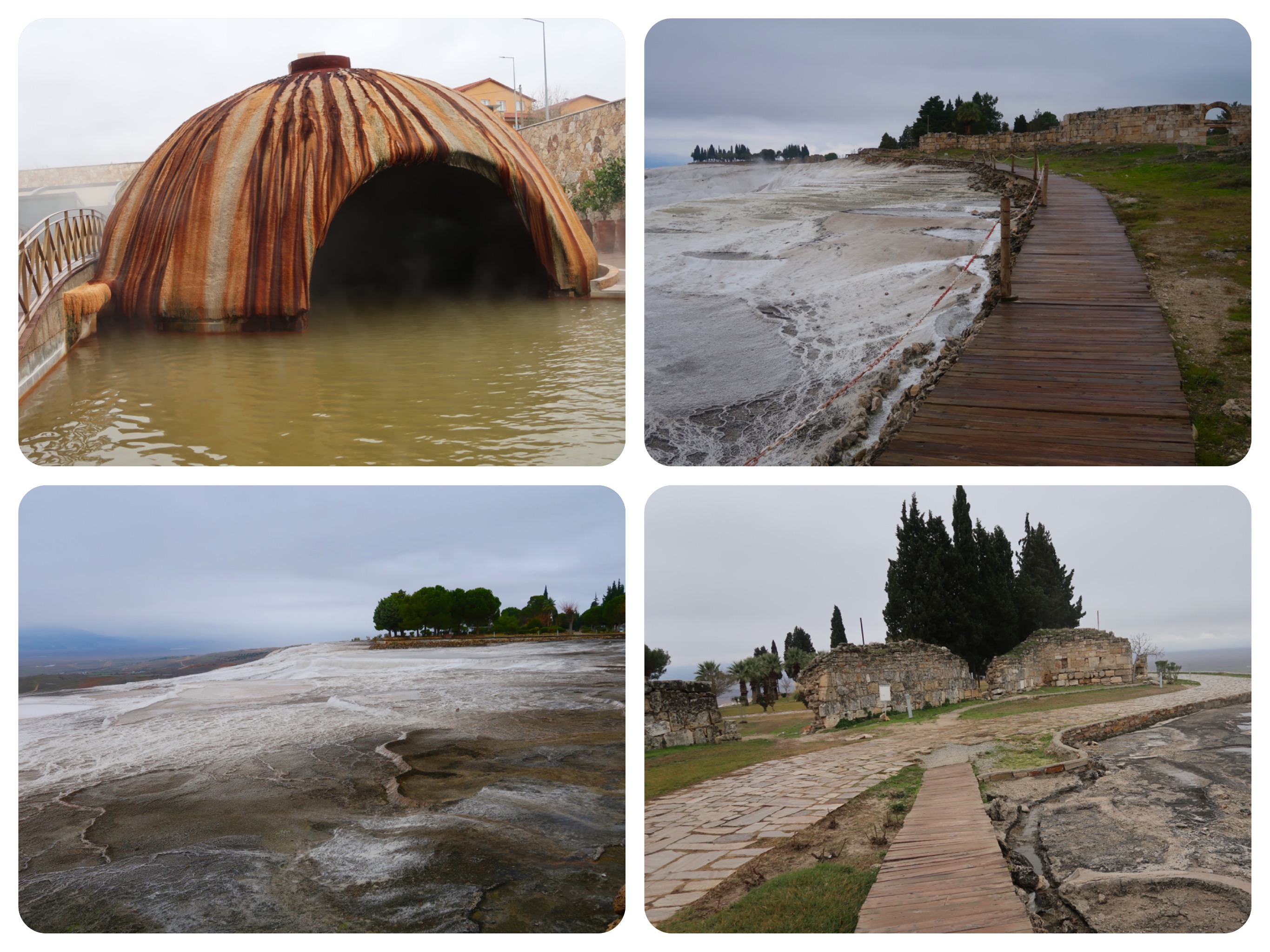
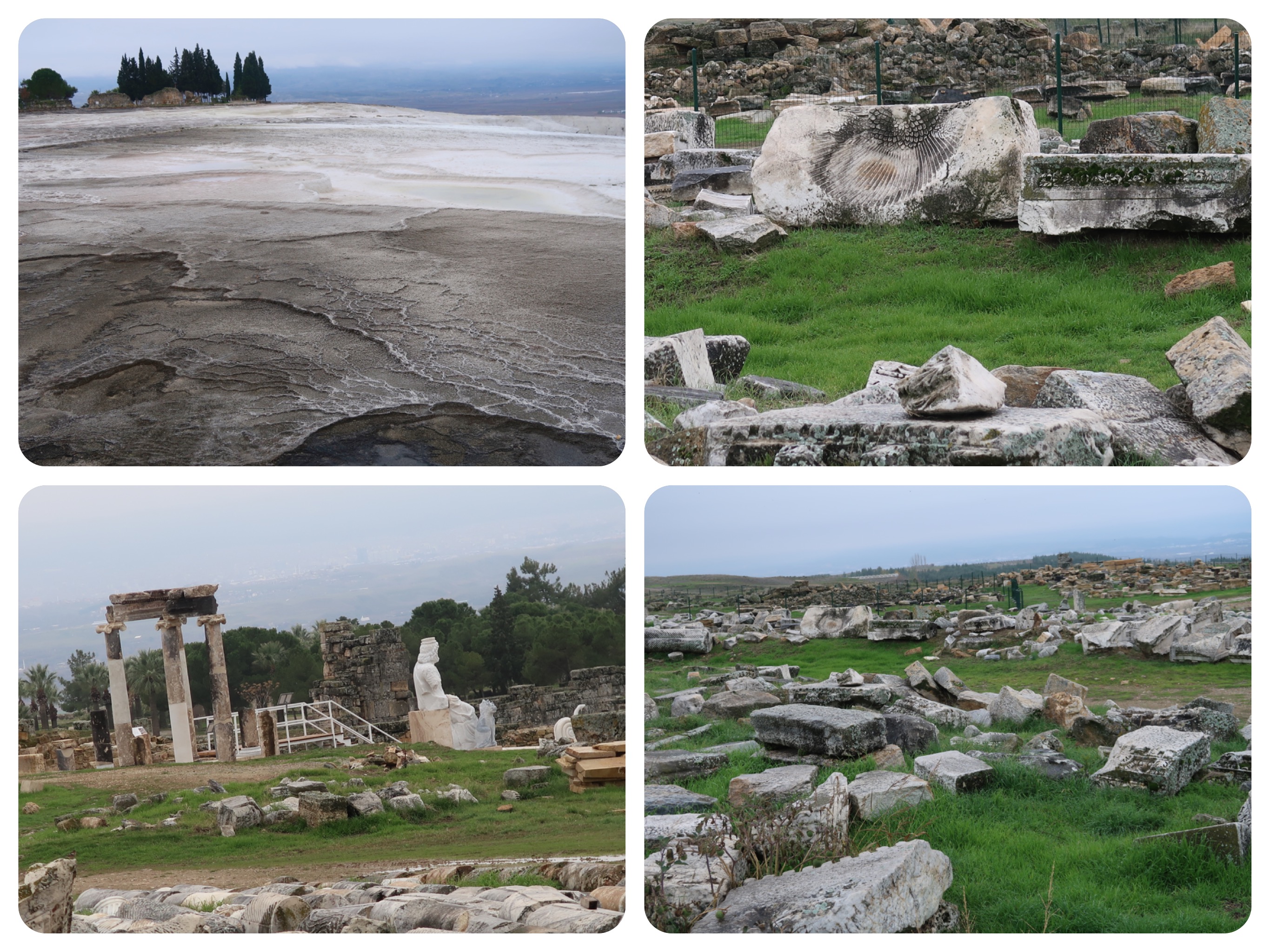
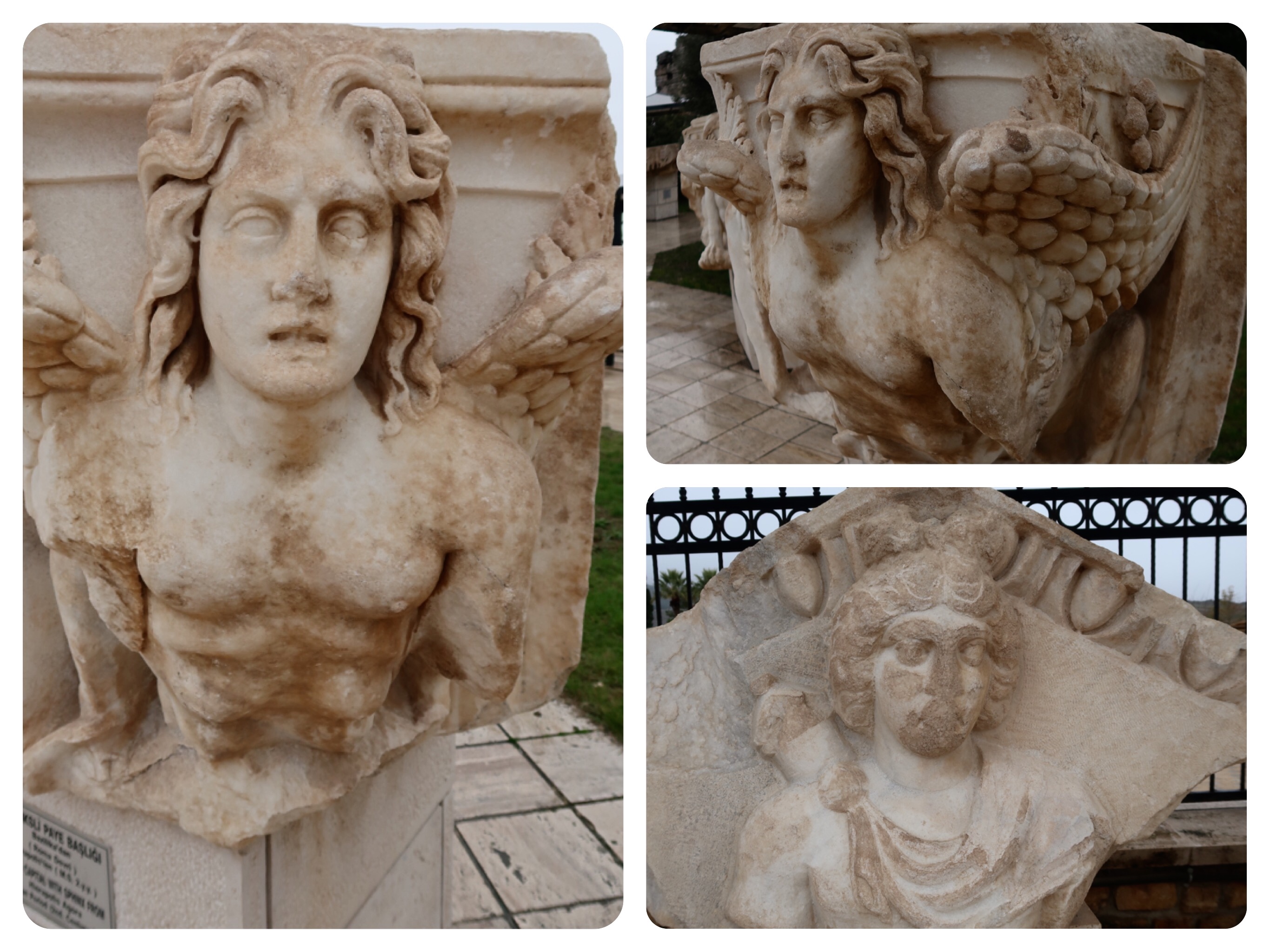
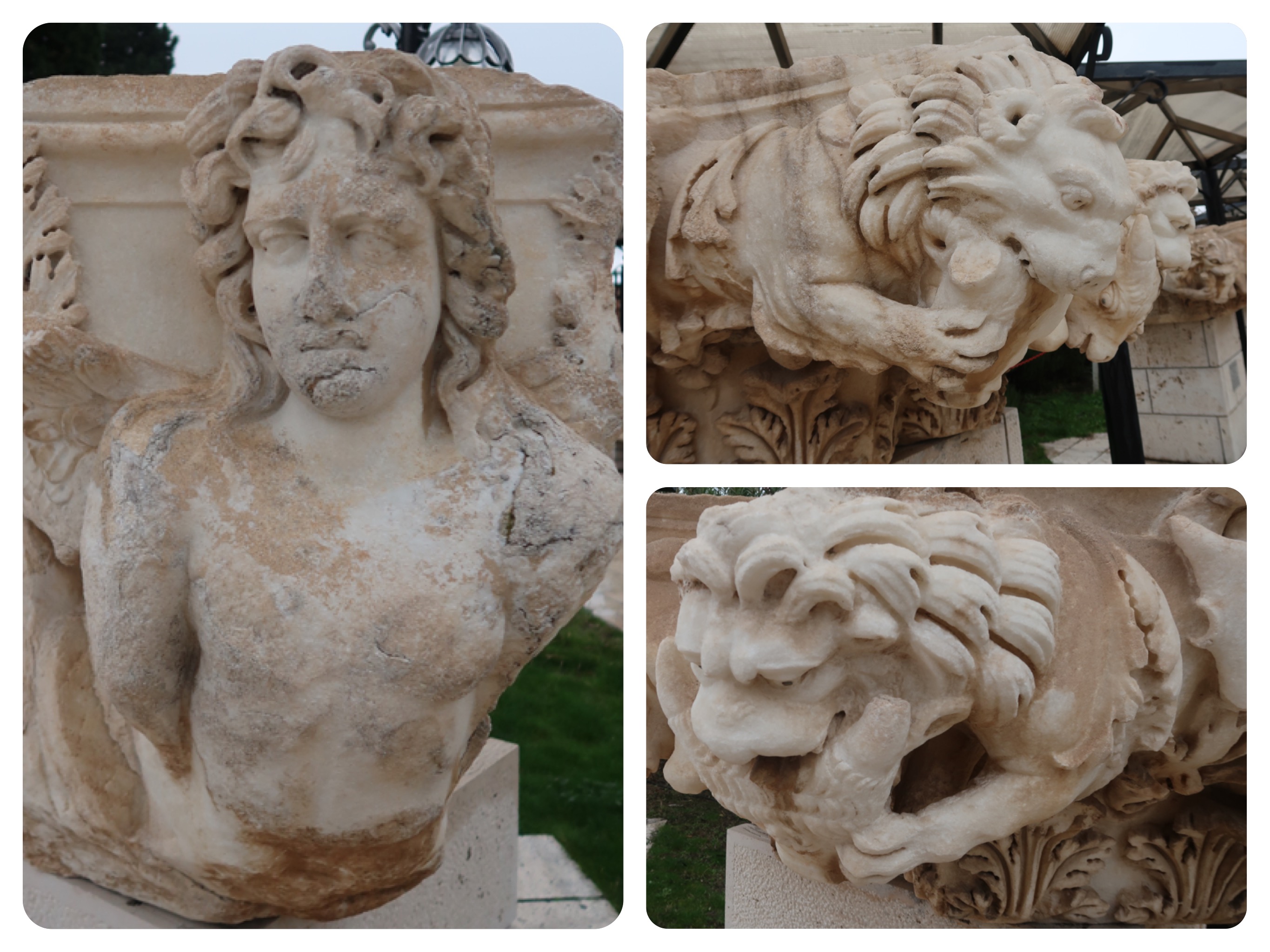
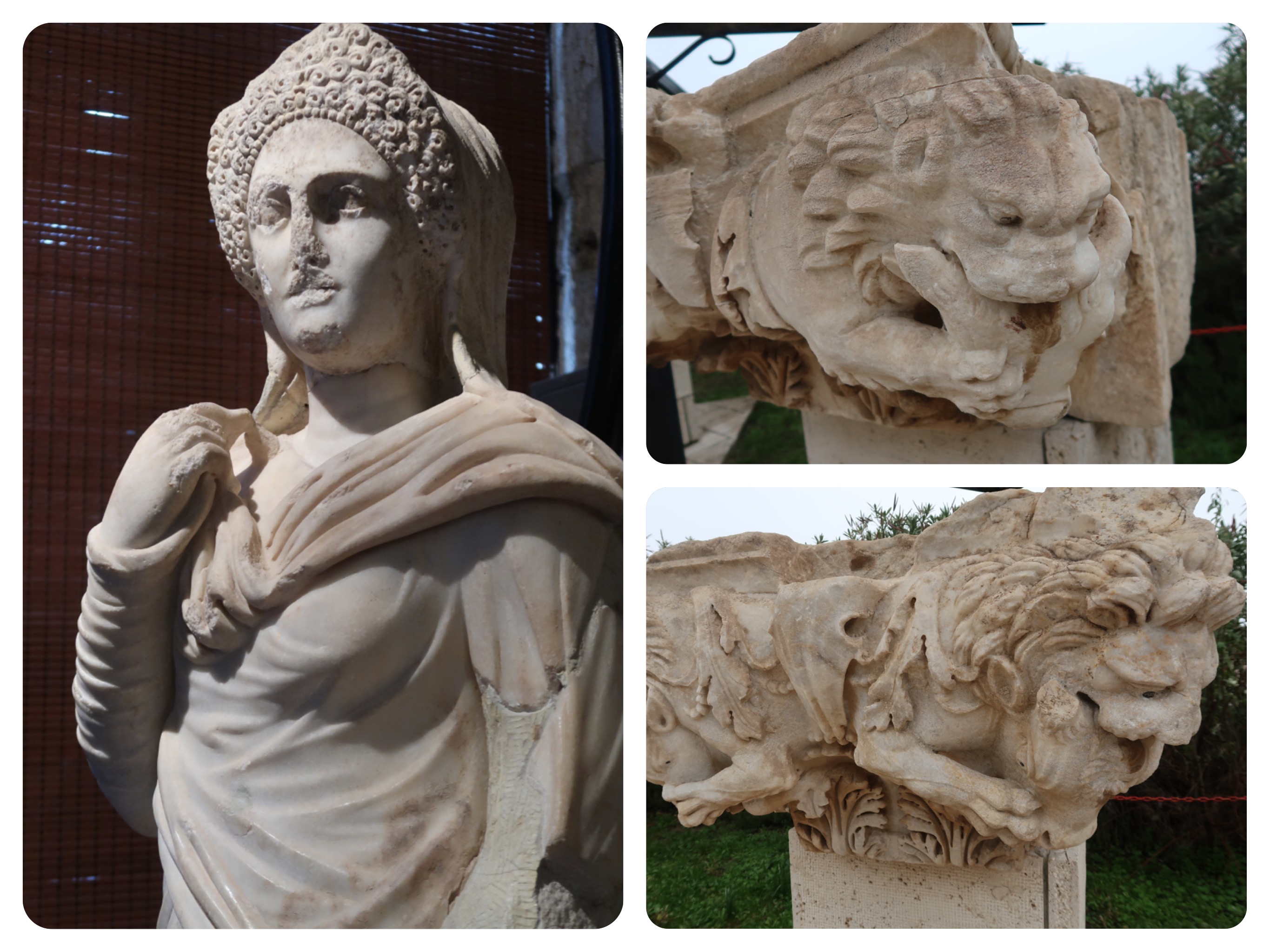
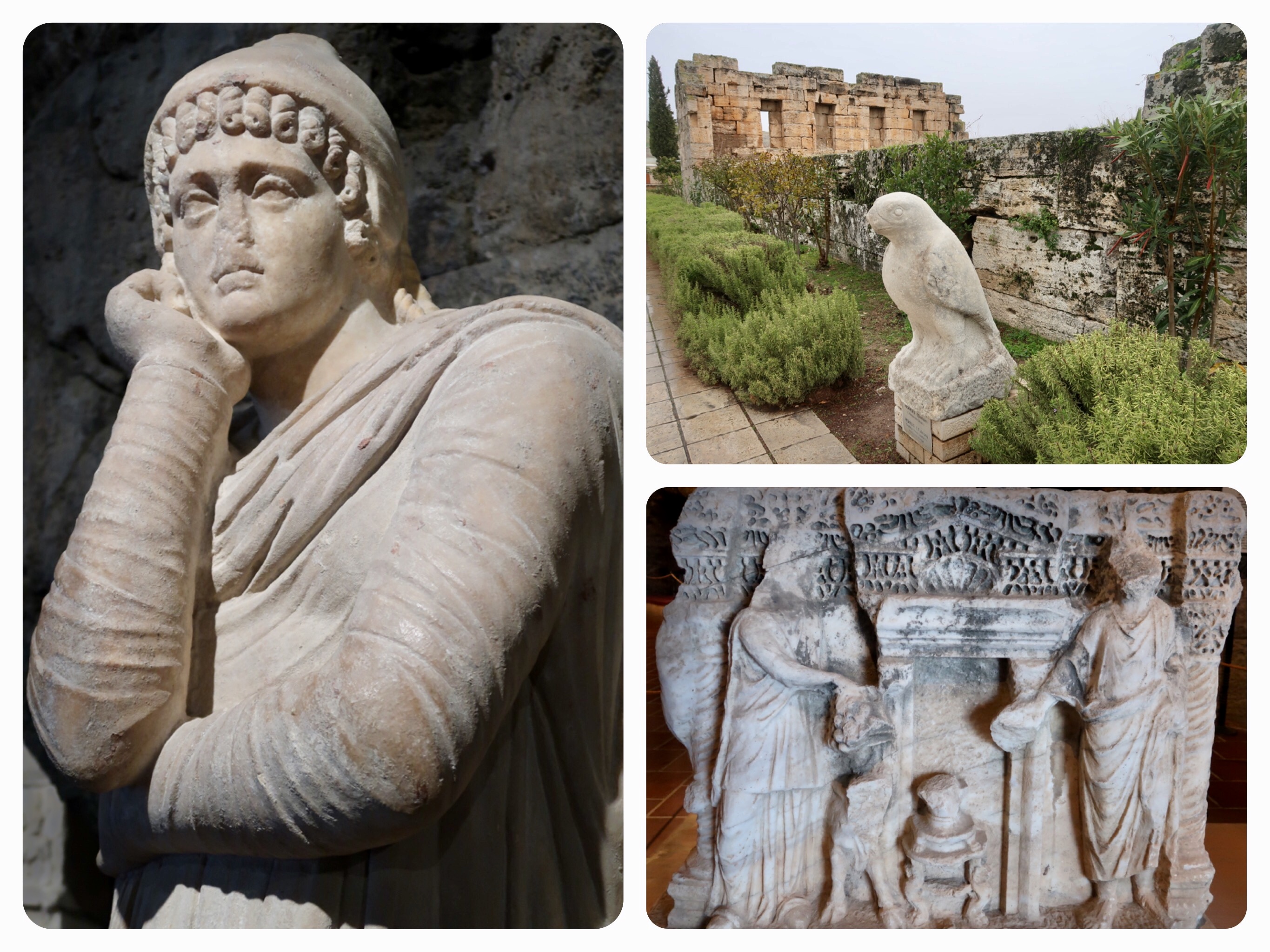
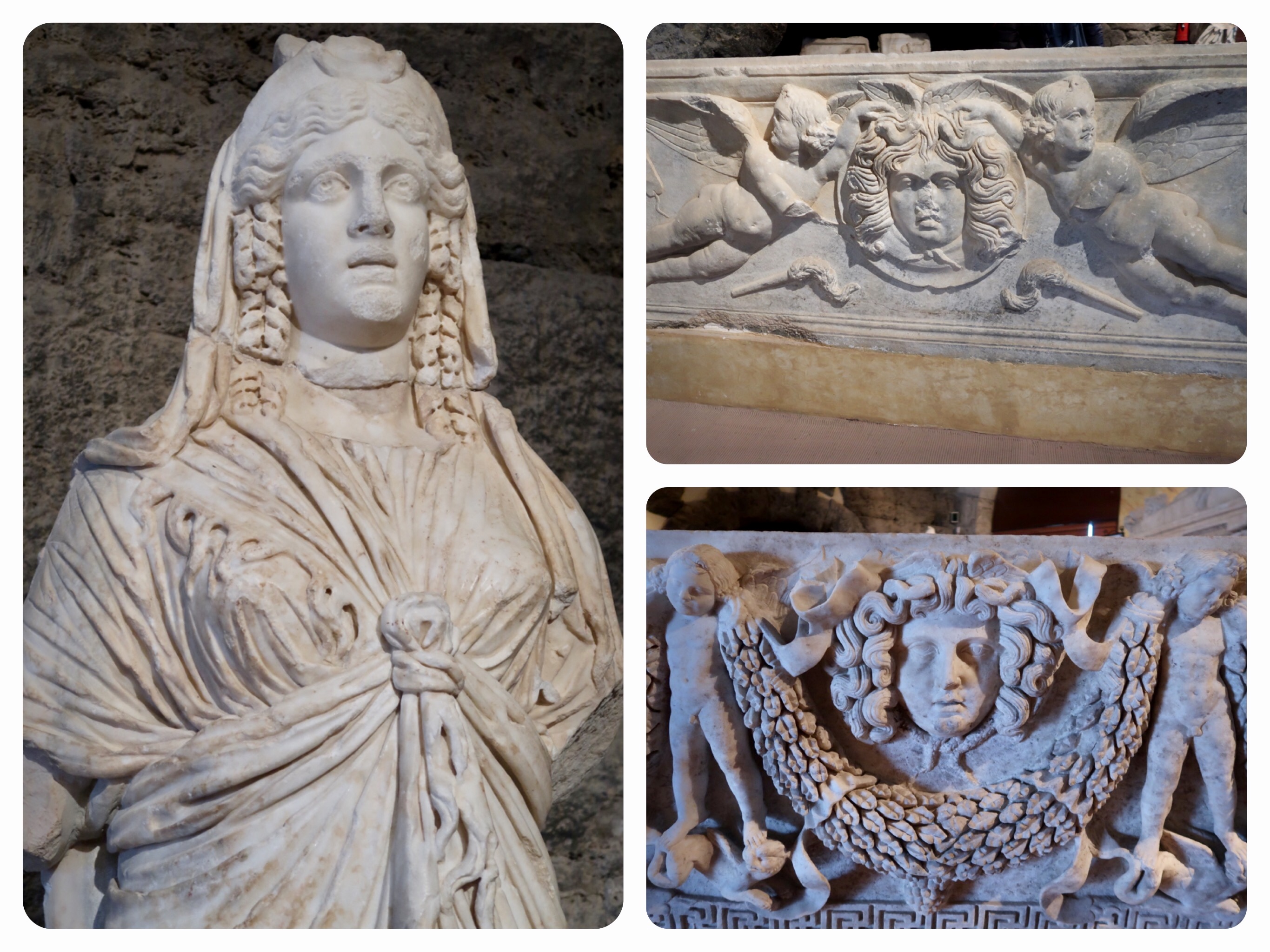
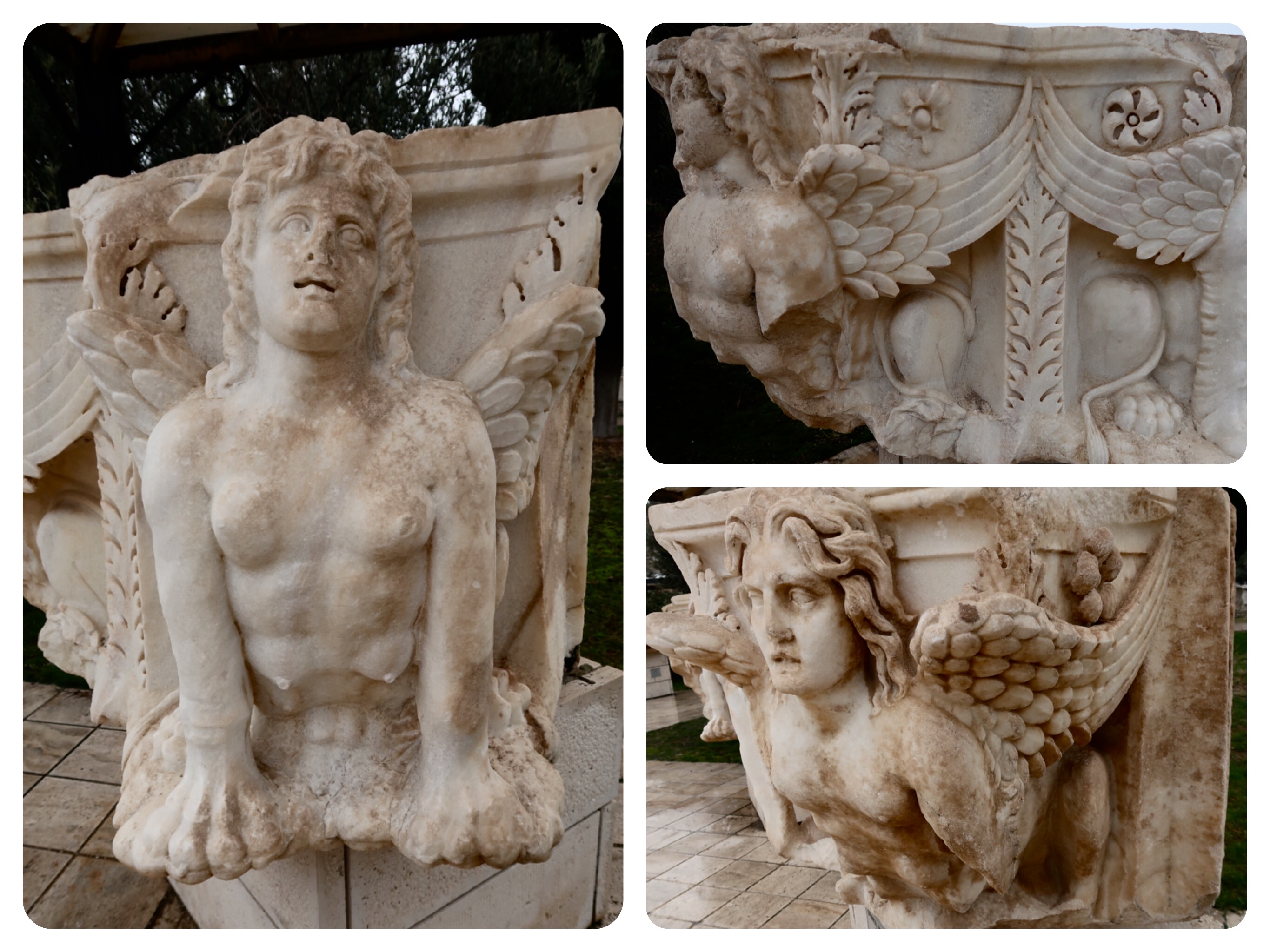
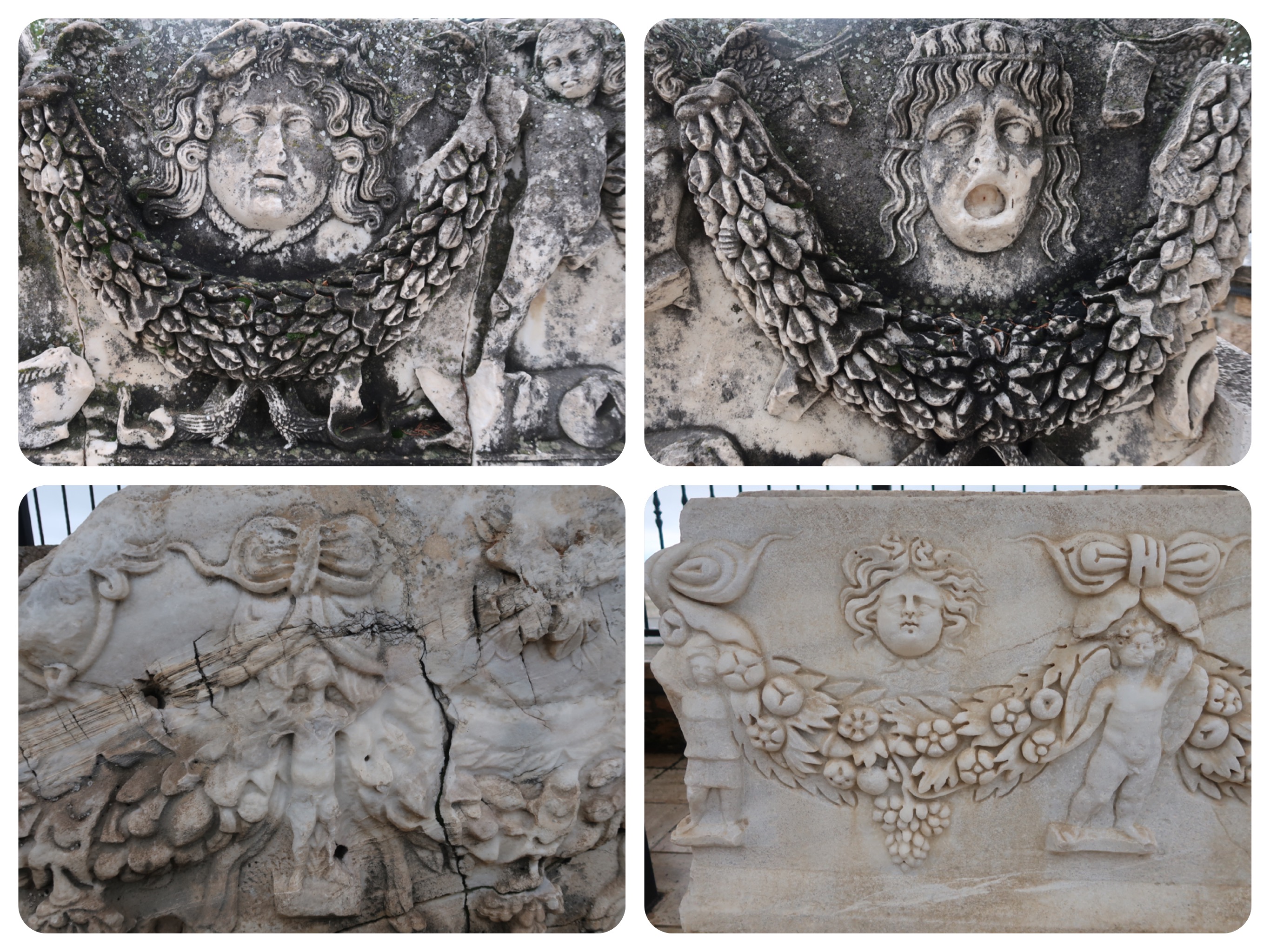
The beautiful travertine hot spring pools of Pamukkale, and the ancient ruins of Hierapolis
Pamukkale is located inland, in midwestern Turkey.
To get here, we took a bus from the coastal city of Antalya.
I really enjoyed the three and a half hour bus ride.
The bus was new and clean, and it had reserved seats with an individual video screen for each seat.
There was even a “flight attendant” who served drinks and snacks.
The bus stopped for bathroom/cigarette breaks, and even for a lunch break in a cafeteria, that served a good soup, Gosleme, tea and other cooked food, as well as snacks and gifts.
When we arrived in Pamukkale, we could see the white mineral hot springs from the road.
It looked very underwhelming from the road.
In fact, it looked like a big, dirty glacier.
I couldn’t help but think that it wasn’t worth coming all the way to see this...
But I was VERY wrong.
Pamukkale is truly stunning.
The mineral-rich thermal waters flow down a big hill through a series of cascading white travertine terraces, that resemble scallop shells.
We stayed in Pamukkale for three nights, in the newly open Doga Thermal hot springs hotel.
It is a big hotel with three hot spring pools, two Hammams, a sauna, a steam room and a great indoor pool.
Pamukkale is the most visited place in Turkey, but most people come in big tour groups and stay for just one night.
This means that the hot spring hotels get large groups of tourists.
Normally, we avoid hotels that cater to large tour groups, preferring to stay in smaller, more intimate boutique hotels and guesthouses.
But if you want to soak in the great hot spring pools here, you have to stay in a big hotel.
I am an avid lover of hot springs, and in exchange for soaking every day, i did not mind the crowded breakfast and dinner buffets.
In late December, the hot spring pools were not crowded at all.
In fact, we were soaking almost alone.
It was awesome to soak every afternoon, as the weather was quite chilly.
To visit the travertine pools and the ruins of Hierapolis, we walked straight there from our hotel.
It took about forty minutes to get to the northern gate, which opens onto the northern Necropolis of Hierapolis.
In ancient Greek and Roman times, they usually placed the Necropolises (the cities of the dead, or the areas where all the stone tombs were located), on the outskirts of the Acropolis, where the people lived.
We walked around the beautiful stone tombs, admiring the elaborate sarcophagi.
We found out later, when we visited the Hierapolis museum, that each of these stone sarcophagi was once decorated with ornate stone carvings on the exterior.
Now all of them have been looted, and the marble carvings have been scraped off and sold.
The ones with carvings look amazing, and they are all in museums to protect them from damage and illegal antiquity trading.
Hierapolis was an ancient Phrygian (later Roman) spa city founded around 190 B.C.
Standing there, I could clearly see why they chose to built their city around these amazing hot spring pools.
The ruins include a well-preserved theater, a great little museum, the necropolis with sarcophagi, stretching for 2km, an Antique Pool, which is famous for its submerged Roman columns (the result of an earthquake), a church that was built later, and an active hot spring pool that is open to the public.
But what took my breath away, were the travertine scalloped pools.
The photos, which we took on a cloudy and rainy day, do not do it justice.
It is a vast hill with lots of cascading pools.
The ancient Phrygians really lived a wonderful life, prioritizing art, sports, community and hot spring bathing.
The public is allowed to walk on a designated part of the terraces, provided they take off their shoes and go barefoot.
I was delighted we came to see this place.
Soaking every night in the hot springs was so relaxing.
We have left the Mediterranean coast and gone inland, traveling north west where the weather is cooler, but the hot springs have made it wonderful.
No matter how cold or freezing the day is, we always end it with a long soak in the reviving hot springs.
The hardest part of leaving the warmer Mediterranean coast was to leave behind Pegasus, the dog we befriended before we left to Antalya.
I still think of her every night before I go to sleep....
Good night, Pegasus, and good night to you,
Tali